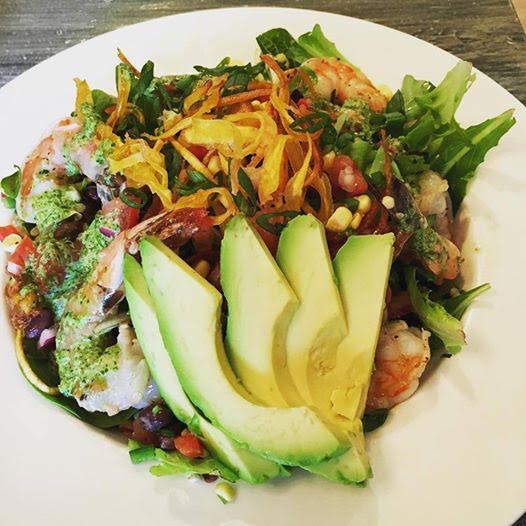
Travel
Jules Loft
“Edible Garden Art” in the form of organic wild bird feeder “made by hand in small batches using nature’s cache.” These are edible “sculptures” made of food for wild birds, in shapes such as bells, balls, hearts and stars. Charming.
Pillobebe
Cork and organic cotton and all organic cotton playmats. “Premium Handmade, Eco-friendly, Nontoxic, Natural Cork, Certified Organic Cotton Baby/Kids Play Mat. CorkiMat™ is safe from all harmful chemicals and toxins. Cork and bamboo fibers are naturally Soft, Organic, Eco-friendly, Antibacterial, Antimicrobial, Anti-fungal and Naturally flame-retardant. Cork barks are harvested by hand over and over again without harming cork trees. Bamboo plants are fast growing so they can be replaced much faster than trees. Another material is cotton and we use GOTS Certified Organic cotton only. CorkiMat™ is FREE of Formamide, Fire-retardants, PVC, BPA, PBS, Formaldehyde, Phthalates, Lead, and harmful VOCs. Removable cover: 100% GOTS Certified Organic Cotton. Handmade in USA.”
Little Barefoot Princess
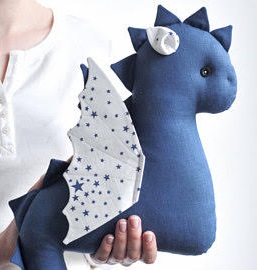 “Classic heirloom-quality soft toys re-imagined in choice materials: GOTS Certified Organic Cotton, Hemp, Peace Silk and “The Fiber of the Gods” ˜ fine Alpaca fleece.” Their teddy bear is made from alpaca fiber, GOTS Certified Organic Cotton and low impact fiber reactive dyes. Plus other stuffed animals—both real and imaginary—are made in the same manner. Blue whales, dolphins, unicorns, dragons, pegasus, rabbits, elephants…all handmade.
“Classic heirloom-quality soft toys re-imagined in choice materials: GOTS Certified Organic Cotton, Hemp, Peace Silk and “The Fiber of the Gods” ˜ fine Alpaca fleece.” Their teddy bear is made from alpaca fiber, GOTS Certified Organic Cotton and low impact fiber reactive dyes. Plus other stuffed animals—both real and imaginary—are made in the same manner. Blue whales, dolphins, unicorns, dragons, pegasus, rabbits, elephants…all handmade.
Ground 2 Table
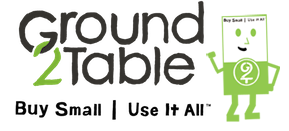 12 certified organic, non-GMO, salt-free, sugar-free spice blends , packaged in small bags so you can use it all and eliminate food waste.
12 certified organic, non-GMO, salt-free, sugar-free spice blends , packaged in small bags so you can use it all and eliminate food waste.
Prairie Linen Company
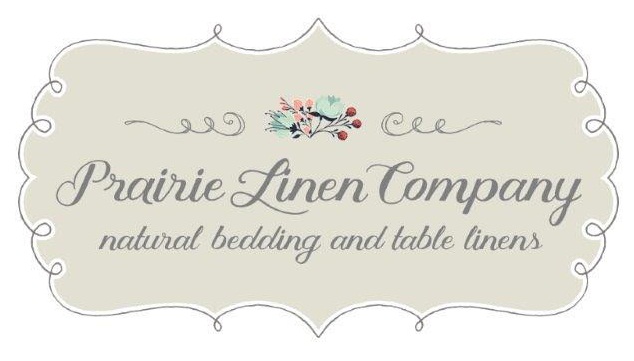 Handmade luxury bedding and table linens, made in the USA using high quality 100% natural linen fabric.” These are design pieces for decoration, not sheets and pillowcases. Monogrammed and ruffled pillow shams, bedskirts and spreads, crib accessories, placemats and monogrammed napkins, linen fabrics.
Handmade luxury bedding and table linens, made in the USA using high quality 100% natural linen fabric.” These are design pieces for decoration, not sheets and pillowcases. Monogrammed and ruffled pillow shams, bedskirts and spreads, crib accessories, placemats and monogrammed napkins, linen fabrics.
Human Revolution Clothing
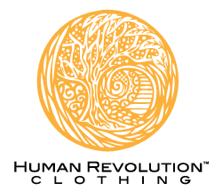 Organic t-shirts and casual clothing for women and men. “Human Revolution Clothing is a social, economic, environmental and LOVE centered clothing company that is passionate about and dedicated to changing the way clothing is made seed to shirt! Our clothing is made from 100% Certified Organic Cotton that is GMOfree & FairTrade. It is GOTS (Global Organic Textile Standard), USDA & Fair Trade certified.”
Organic t-shirts and casual clothing for women and men. “Human Revolution Clothing is a social, economic, environmental and LOVE centered clothing company that is passionate about and dedicated to changing the way clothing is made seed to shirt! Our clothing is made from 100% Certified Organic Cotton that is GMOfree & FairTrade. It is GOTS (Global Organic Textile Standard), USDA & Fair Trade certified.”
The Organic Handkerchiefs Company
GOTS certified organic cotton flannel and woven handkerchiefs in four sizes.
A New Public Health Revolution
There was a great article in The New York Times back in February (I just found out about it) called “Are You a Toxic Waste Disposal Site?”
It talks about toxics in our bodies and in particular exposures to lead, but most importantly, the author gives a historical example of a public health change that worked.
Maybe, just maybe, the crisis in Flint can be used to galvanize a public health revolution.
In 1854, a British doctor named John Snow started such a revolution. Thousands were dying of cholera at the time, but doctors were resigned to the idea that all they could do was treat sick patients. Then Snow figured out that a water pump on Broad Street in London was the source of the cholera. The water company furiously rejected that conclusion, but Snow blocked use of the water pump, and the cholera outbreak pretty much ended.
Thousands were dying…a water pump was found to be the source…one man blocked the use of the water pump.
Oh how I wish I could block the use of toxic chemicals in consumer products!
A group of scholars, led by David L. Shern of Mental Health America, argue that the world today needs a new public health revolution focused on young children, parallel to the one mounted for sanitation after Snow’s revelations about cholera in 1854. Once again, we have information about how to prevent pathologies, not just treat them — if we will act.
The reason for a new effort is a vast amount of recent research showing that brain development at the beginning of life affects physical and mental health decades later. That means protecting the developing brain from dangerous substances and also from “toxic stress” — often a byproduct of poverty — to prevent high levels of the stress hormone cortisol, which impairs brain development.
A starting point of this public health revolution should be to protect infants and fetuses from toxic substances, which means taking on the companies that buy lawmakers to prevent regulation. Just as water companies tried to obstruct the 19th-century efforts, industry has tried to block recent progress.
Back in 1786, Benjamin Franklin commented extensively on the perils of lead poisoning, but industry ignored the dangers and marketed lead aggressively. In the 1920s, an advertisement for the National Lead Company declared, “Lead helps to guard your health,” praising the use of lead pipes for plumbing and lead paint for homes. And what the lead companies did for decades, and the tobacco companies did, too, the chemical companies do today.
Well, we here on this website are already having the revolution right here in our own homes. We all just need to make it more known.
Finding Nontoxic Shoes
Question from Tammy
Hi Debra,
Hi for about a year now my feet have been very painful cannot get comfortable in any shoe my feet become real hot and I just want to rip my shoes off within 10 minutes of putting them on. Recently found out I was allergic to fossil fuel’s which include Rubber all the memory foam shoes I can’t find any shoes that are good for me I am looking for leather shoes with no padding and no rubber soles I’m allergic to the glue’s etc. I really need help has anybody found any shoes That might work?
Debra’s Answer
First, there are already some resources on this website for shoes:
How to Choose Toxic Free Shoes
But today I want to give you even more information.
I spent quite a bit of time online over the weekend looking at shoes. And I found some I want to investigate further.
But here’s what I learned. There are A LOT of shoes available made from natural materials. The key is to search on the type of material you are interested in and then look at IMAGES. From this gallery you will find many brands and then you can find out more about them.
Also if you find some you like, click on the image and google will give you a box with “more like this” choices. Look at those too.
For example here are some search results…
“vegetable tanned leather sandal”

“cotton shoes” and “cotton espadrilles”


Have fun looking and post a comment to let us know what you find.
Promotion v. Precision
Last week this issue came up twice in one day, and it came up again this morning, so I decided to write a post about it.
The issue is promotion of a product versus the precision of product description. Promotion being text and images created specifically to make you want to buy the product and precision the act of being exact and accurate.
First, a long-time reader wrote to me and asked what I thought of a product that had been promoted that day via email.
I took a look at the promotion page, and there simply wasn’t enough detail for me to evaluate the product. But it was a great promotion—great enough to make her want to buy it. In this cassette technical details about the product were missing altogether.
Second, I made a mistake in recommending a business on Debra’s List, I was so charmed by the promotion and the content in the headlines that I didn’t look deep enough on the site to find details that were there.
The website I deleted is Bears for Humanity.
On their home page it says, “Our products are made of 100% GOTS Certified Organic Cotton and Hemp.” And they display the GOTS logo.
On their About page they say “From farm to fulfillment, our plush toys are made using only 100% GOTS Certified Organic materials and Global Fair Trade practices, while employing at-risk women from Welfare-to-Work programs right here in the United States.
Now doesn’t that sound like 100% of the bear is GOTS Certified Organic Cotton and GOTS Certified Organic Hemp?
Not so.
Reading further on the site it says, “Our bears’ shells are made from a one-of-a-kind certified organic, sustainably-sourced fabric developed in partnership with EnviroTextiles.” It’s “faux fur.” But it doesn’t say if this is organic cotton or organic hemp or organic something else. I called EnviroTextiles and they told me it was 41% (not organic or certified) hemp, 34% certified organic cotton, 24% synthetic PET (in the backing, not the fur). Don’t know if the PET is recycled. She didn’t say.
And the filling is made from recycled soda bottles.
Not 100% organic, not even 100% natural, and the product itself is not GOTS certified.
I’m not even sure the fabric is GOTS certified because there are no certificates. Only claims.
But they did a great job at making it LOOK like a GOTS-certified organic product.
And then this morning there was another one.
A reader commented in Toxic Free Q&A asking about the materials used to make Telic sandals. As I said in my response to her comment, I called Telic and asked them what their material was made from. The website says only a patented trade name, and that it’s an “elasto-polymer.” The customer service rep said it was “toxic-free” but couldn’t tell me what type of plastic it was. He said he knows it’s toxic free because it was tested. When I asked for a certificate he said it was on the website, but he couldn’t find it.
Again, this is no information. Yet, the rep claimed the material is “toxic free.” Great promotion though about Made in America and molded to support your foot.
There are federal laws about advertising. You need to 1) tell the truth and 2) substantiate your claims.
To fulfill both of these, manufacturers need to reveal their materials and show their certificates or give other substantiations about claims. Take a look at Debra Lynn Dadd Recommended Products for examples of manufacturers who are doing this.
We consumers need to double-check headlines, read the information that is given, and ask for information if it is missing.
And not be swayed by promotion.
I so wanted there to be an organic teddy bear!
Is Coffee Bad to Drink?
Question from Terri
Hi Debra,
Hello, my name is Terri. I’m in quite the conundrum, should I stop drinking coffee or not. Does coffee have toxins such as metals. Does Tea have metal toxins Does organic tea have metal toxins. Or even other toxins I should worry about. Any help I would love. Thank you.
Debra’s Answer
In my opinion, it’s OK to drink organic coffee. I drink it occasionally, not every morning.
Recently the World Health Organization (WHO) reversed their position on coffee.
The International Agency for Research on Cancer (IARC) had previously rated coffee as “possibly carcinogenic” but has changed its mind.
It’s latest review, however, found “no conclusive evidence for a carcinogenic effect” of coffee drinking and pointed to some studies showing coffee may actually reduce the risk of developing certain types of cancer
At the same time, IARC presented other scientific evidence which suggests that drinking anything very hot—around 149 degrees Fahrenheit or above—including water, coffee, tea and other beverages—probably does cause cancer of the oesophagus.
If you are going to drink coffee, organic is best, to avoid the toxic pesticides, and decaffeinated is even better.
Read this pros-and-cons article on the health effects of coffee.
Here’s the info on toxics in tea: Q&A: Tea Steeped in Toxics
And I would always make organic coffee or tea with filtered water.
Man-made pollutants found in Earth’s deepest ocean trenches
New research—which has not yet been published—has found high levels of man-made chemicals in Mariana Trench, the world’s deepest trench.
This is the first time there have been tests done at the depth of 7,000-10,000 feet.
Banned PCBs and the fire retardant PBDE were found in high concentrations in small shrimp-like creatures that live in the Trench.
NATURE: Man-made pollutants found in Earth’s Deepest Ocean Trenches
Not All Organic Food is Grown From Organic Seed
Organic standards require organic food to be grown from organic seed, but a new report from Organic Seed Alliance (OCA) found that the supply of organic seeds isn’t keeping pace with the rising demand for organic products. In 2015, sales of organic products totaled $43 billion.
Organic farmers say that organic seed does need to be used because all seed is not the same.
Most commercial seed is bred to rely on the high fertilizer inputs of industrial agriculture. Organic farmers need seed bred to thrive on the slow release of nutrients from organic soil amendments.
THE US Department of Agriculture (USDA) allows some leeway for certified organic foods and fibers due to lack of supply.
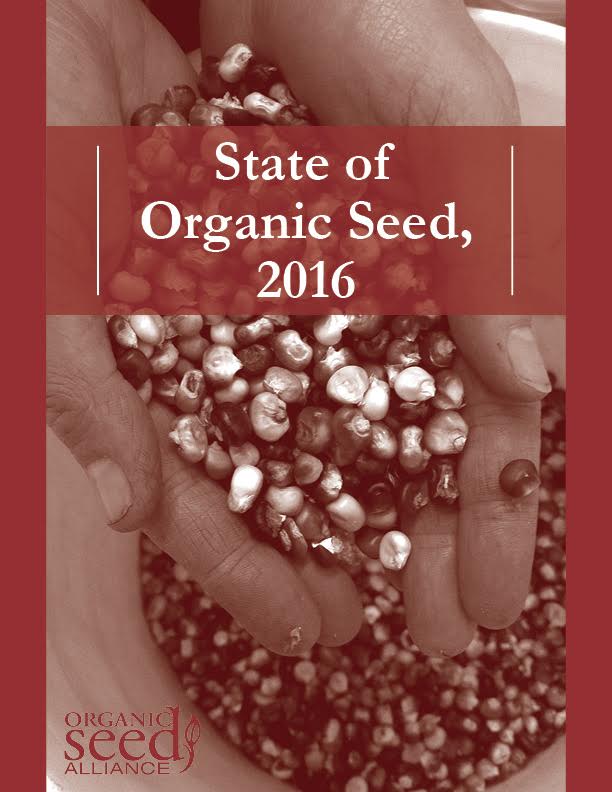 Though the supply of organic seed is increasing, today only 27 percent of organic farmers use 100 percent organic seed.
Though the supply of organic seed is increasing, today only 27 percent of organic farmers use 100 percent organic seed.
If you are growing an organic garden, use organic seed for best results.
Silica, Silicon and Silicone
Update June, 2020: Read more about silicone in The Toxicity of Silicone read more…
BPA Linked to Hyperactivity in Children
A study of 460 children across the United States, aged 8 to 15 years old, found that 11 percent of those with BPA levels higher than the median level had ADHD. In contrast, 3 percent of those children with BPA levels below the median had ADHD.
The research, published online last week in the Environment Research journal, adds to evidence that children’s BPA exposure may alter brain development and lead to behavior problems such as reduced attention and hyperactivity. ADHD is the most common behavior disorder in U.S. children, causing them to have trouble concentrating and controlling their behavior.
ENVIRONMENTAL HEALTH NEWS:
Hyperactivity in children linked to plastic additive, BPA
Cattails Woodwork
 Beautiful wooden kitchenware in simple yet artful designs. Wood Mason jar tops, rolling pins, spurtels, door stops, ceramic burr coffee grinders with wood lids and hand crank, breadboards, knife racks, cake pedestals…”Each piece is skillfully crafted from solid wood to create something that is not only beautiful and soft to the touch but it will last for generations. My belief is that we should buy and use things that are wonderful to both the hand and eye, very functional works that do not have to be replaced, heirlooms to be enjoyed for generations. These special works made from wood bring a warm touch of nature into our lives. love my job..EVERY SINGLE DAY.” This is just how I live, All my day-to-day things have to be natural and beautiful. This website is in Canada, but I had to make an exception.
Beautiful wooden kitchenware in simple yet artful designs. Wood Mason jar tops, rolling pins, spurtels, door stops, ceramic burr coffee grinders with wood lids and hand crank, breadboards, knife racks, cake pedestals…”Each piece is skillfully crafted from solid wood to create something that is not only beautiful and soft to the touch but it will last for generations. My belief is that we should buy and use things that are wonderful to both the hand and eye, very functional works that do not have to be replaced, heirlooms to be enjoyed for generations. These special works made from wood bring a warm touch of nature into our lives. love my job..EVERY SINGLE DAY.” This is just how I live, All my day-to-day things have to be natural and beautiful. This website is in Canada, but I had to make an exception.
Natural Linens
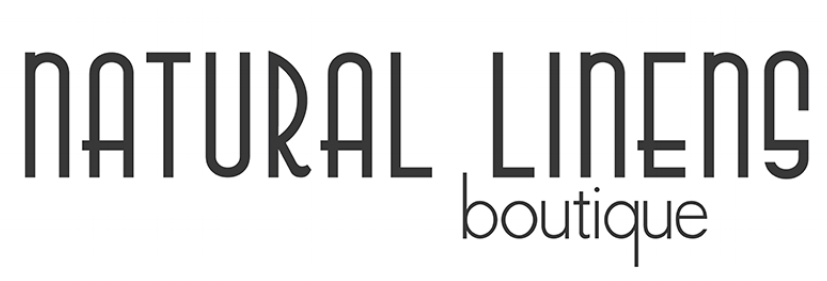 Oh wow! Here you can just replace much of the disposable paper/plastic in your house with reusable organic linen—paper towels, coffee filters, sandwich bags, facial rounds—and of course, towels and washcloths.
Oh wow! Here you can just replace much of the disposable paper/plastic in your house with reusable organic linen—paper towels, coffee filters, sandwich bags, facial rounds—and of course, towels and washcloths.
Good Linens
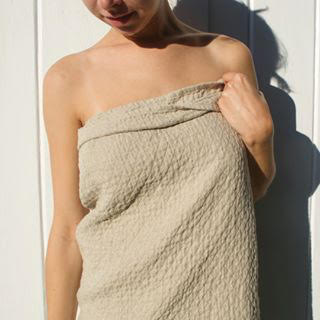 100% linen towels for bath, kitchen, beach and travel. Why a linen towel for your body? Fast drying, exfoliating, absorbent, antibacterial, long-lasting, and they just get better with age. 90% unbleached, undyed fibers with 10% colorful stripe. “When I found myself washing three full loads of cotton terry towels each week for a family of four, we tried linen bath towels. For the first time, my children reused their quick-drying towels, reducing the bath towel laundry burden to under one load a week.”
100% linen towels for bath, kitchen, beach and travel. Why a linen towel for your body? Fast drying, exfoliating, absorbent, antibacterial, long-lasting, and they just get better with age. 90% unbleached, undyed fibers with 10% colorful stripe. “When I found myself washing three full loads of cotton terry towels each week for a family of four, we tried linen bath towels. For the first time, my children reused their quick-drying towels, reducing the bath towel laundry burden to under one load a week.”
Back to Organics
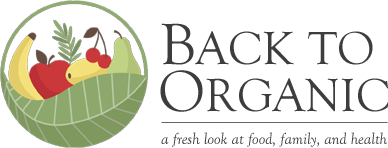 Flavored salts made from the purest salts and fresh herbs and zests. “Back to Organic Fresh Herb and Zest Salts are blended in small batches using the finest, mineral rich sea salts, organic spices, citrus zests and fresh herbs. By using fresh herbs and citrus zests, we preserve the flavor and natural, essential oils in the salt. Essential oils contain many vital vitamins and antioxidants to remove free radicals, boost the immune system, and improve circulation and digestion. Our gourmet salts are so flavorful you only need a pinch to create simple and delicious meals.” Packaged in glass.
Flavored salts made from the purest salts and fresh herbs and zests. “Back to Organic Fresh Herb and Zest Salts are blended in small batches using the finest, mineral rich sea salts, organic spices, citrus zests and fresh herbs. By using fresh herbs and citrus zests, we preserve the flavor and natural, essential oils in the salt. Essential oils contain many vital vitamins and antioxidants to remove free radicals, boost the immune system, and improve circulation and digestion. Our gourmet salts are so flavorful you only need a pinch to create simple and delicious meals.” Packaged in glass.
Teeny Tiny Spice Company
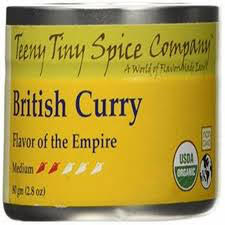 Certified organic spice blends from around the world—common and unusual. Like chocolate chili, British curry, Oaxaca Adobo…“We hand blend and package the cleanest, most flavorful spice and herb blends available. Our seasonings cover a broad array of world cuisines and cooking styles from curries to barbeque to dessert, and include salt free and low sodium products. All of our products are pure food. Nothing is hidden with all ingredients listed on every package so that you know exactly what you are putting in your body. We also provide over 150 recipes on our recipe site.”
Certified organic spice blends from around the world—common and unusual. Like chocolate chili, British curry, Oaxaca Adobo…“We hand blend and package the cleanest, most flavorful spice and herb blends available. Our seasonings cover a broad array of world cuisines and cooking styles from curries to barbeque to dessert, and include salt free and low sodium products. All of our products are pure food. Nothing is hidden with all ingredients listed on every package so that you know exactly what you are putting in your body. We also provide over 150 recipes on our recipe site.”
Urban Flax
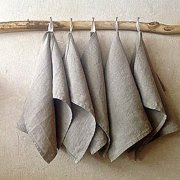 Plain and simple 100% linen towels, tablecloths, placemats, napkins, aprons, in natural linen color and darker grey. Handmade in Colorado.”Most items are made one at at time and are hand cut, sewn, washed and air dried with great attention to detail and pride in craftsmanship. The end result is soft, clean linen that will not shrink further and is ready to use.”
Plain and simple 100% linen towels, tablecloths, placemats, napkins, aprons, in natural linen color and darker grey. Handmade in Colorado.”Most items are made one at at time and are hand cut, sewn, washed and air dried with great attention to detail and pride in craftsmanship. The end result is soft, clean linen that will not shrink further and is ready to use.”
Sky Baby Blues
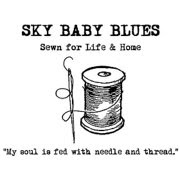 Big aprons that really cover made from cotton or linen. Plus “gathering” aprons to wear into the garden, some with big pockets for vegetables, one with twelve individual pockets for gathering a dozen eggs :-). Also linen Christmas stockings!
Big aprons that really cover made from cotton or linen. Plus “gathering” aprons to wear into the garden, some with big pockets for vegetables, one with twelve individual pockets for gathering a dozen eggs :-). Also linen Christmas stockings!
Manzanita Kids
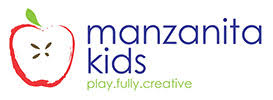 Handmade wooden toys in the natural colors of the various woods they are made from. “We carefully select the best American hardwoods for our toys and buy from a local source. This beautiful wood is enhanced and protected by our own blend of beeswax and organic jojoba oil, which we apply and polish by hand. The birch plywood we use for our modular toys is of the highest quality, it exceeds the strict requirements set by the European Union and the California Environmental Protection Agency (CARB II). Our toys are safe, durable, beautiful and meant to be passed to the next generation.”
Handmade wooden toys in the natural colors of the various woods they are made from. “We carefully select the best American hardwoods for our toys and buy from a local source. This beautiful wood is enhanced and protected by our own blend of beeswax and organic jojoba oil, which we apply and polish by hand. The birch plywood we use for our modular toys is of the highest quality, it exceeds the strict requirements set by the European Union and the California Environmental Protection Agency (CARB II). Our toys are safe, durable, beautiful and meant to be passed to the next generation.”
Criquet Shirts
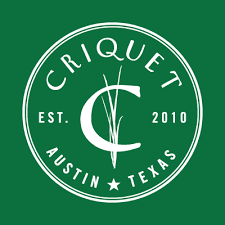 Super soft 100% organic cotton shirts for men, created by two friends. “In 2010, after lamenting the loss of great and hard-to-replace polo shirts of years past, we set out on the quest to find the perfect shirt.Guided by memories of our very first collared shirts from early days in prep school, and by well-worn hand-me-downs from dads, uncles and others, we spared no effort to find it. In the end, unable to track down this elusive prize, we did what any two enterprising young men would do. We set out to design it and make it on our own. ”
Super soft 100% organic cotton shirts for men, created by two friends. “In 2010, after lamenting the loss of great and hard-to-replace polo shirts of years past, we set out on the quest to find the perfect shirt.Guided by memories of our very first collared shirts from early days in prep school, and by well-worn hand-me-downs from dads, uncles and others, we spared no effort to find it. In the end, unable to track down this elusive prize, we did what any two enterprising young men would do. We set out to design it and make it on our own. ”
UV Irradiation of Water
Question from Andrea
Hi Debra,
Recently we were informed that our municipality will soon be brought into compliance with a federal mandate requiring the treatment of our water supply with UV irradiation to help eliminate harmful bacteria and other pathogens from the water.
Having in mind Dr. Masaru Emoto’s work on water molecules, do you or any of your readers know if treating water in this way might “denature,” or in any other way alter the chemical or molecular structure, or the natural health-giving properties, of the water?
If so, might there be a potential negative effect on health if UV irradiated water is used for drinking, cooking or bathing over the long term?
And are there any ways to mitigate or offset any potentially harmful effects of using UV irradiated water, as I don’t believe it will be possible to opt out of receiving it.
Thanks very much for your kind reply.
Debra’s Answer
I’m familiar with UV irradiation of water and also Dr. Emoto’s work, so I feel qualified to answer your question.
First, as you know from Dr Emoto’s work, the structure of water can be easily changed for better or worse by pollutants, energy, and even mental thoughts.
I doubt that UV irradiation would have a negative effect on water. All day long I drink water from a Pure Effect water filter with a UV lamp, which is present not only to kill living micro-organisms, but to disintegrate toxic chemical pollutants. The creator of this filter knows more about water and water quality than any person I’ve ever known.
I also grew up with UV treated water. My father was very interested in this technology for water purification of all kinds, particularly for swimming pools and drinking water. He invested a system many years ago that was sold to a company to be used for drinking water purification in Third World countries.
So I have no concern about water treatment plants using UV treatment, which would reduce the amount of toxic chemical disinfectants that need to be used.
Now, does this affect the natural health-giving properties of the water? Yes, it would. But your tap water is already terribly not in it’s natural state due to all the chemicals added to it. UV irradiation would not add more damage to already damaged water, but in fact might contribute to damaging the water less by reducing the amount of chemicals used.
Ultraviolet light is a wavelength of the sun and is found in nature. For water disinfection purposes, it’s the same wavelength, but more concentrated to have a quicker effect. Since it’s light energy, it’s not adding anything toxic to the water.
I want to make clear that UV ‘irradiation” is not adding radiation to the water. UV irradiation is simply shining ultraviolet light from a lamp on the water. It’s like sunbeams shining on the water.
I don’t see any potential negative health effect from shining a UV lamp on water.
Now if you want to restore water’s natural life giving properties there are several things you can do.
1. Get a PureEffect Water Filter. Igor has designed these filters especially to transform tap water as close as possible to natural state. I’ve been drinking this water every day for about four years and my body loves it.
2. Get a Flaska water bottle . This bottle restructures the energy matrix of the water to be closer to natural state. The Glass Water Bottle That Restructures Tap Water to Be Like Spring Water
3. Visit the Dancing With Water. There you will find a lot of information on the nature of water and advanced ways you can restore water to it’s natural state. Going Beyond Filtered Water
The best water I ever drank was from a spring at the foot of Mt. Shasta, in California. That water was immensely alive and nourishing to my body.
Start out by getting a PureEffect filter because you need to remove pollutants before you can restructure the water. Then get a Flaska bottle. And then start learning more about how very much you can influence the health-giving properties of water.
Bitumen in Dishwasher
Question from Marjorie
Hi Debra,
Have there been any safer dishwashers on the market? We’ve gone w/out one for over 2 years now, but really miss it.
Also, if the choice comes down to PVC (Part of interior not the whole thing) or the newer bitumen ones which is safer? Thanks.
Debra’s Answer
I haven’t researched dishwashers lately because I don’t use one. I wash all my dishes by hand.
So bitumen vs PVC…
Geez. It’s asphalt (used to surface roads and to seal flat roofs) vs carcinogenic plastic.
I read that many brands now use bitumen coating for insulation.The writer says this is basically Dynamat type asphalt matting and many brands give off a tar smell when hot. For the first 10 washes there has been a detectable tar smell, and I would add, toxic tar fumes.
We’ve discussed this before in Q&A: Chemical Smell in New Boesch Dishwasher. That smell appears to be bitumen.
Update: Read more about bitumen and finding a non-toxic dishwasher.
Germ-Killing Hand Sanitizer 2016
Question from MM
Hi Debra,
I went to the eye doctor Monday and by yesterday had the stomach flu. I think I’m ok but after reading the CDC website feel I need to sanitize everything, starting with my eyeglasses and then everything I’ve touched since Monday, since I touched the glasses often.
I guess Dr. Hulda Clark would suggest vodka and I have some. I have some alcohol though I’d rather not use it.
I don’t want to reinfect myself or endanger someone else, although I imagine people who are out in the world encounter it often and don’t get sick. My doctor said three schools in his area were closed due to it.
What would you do?
Debra’s Answer
I’ve answered similar questions before, but I’ll give an update for 2016.
Here are the other posts on this subject. Please read them all as they have relevant points.
Q&A: Earth Friendly Hand Sanitizer
how to make your own, important of hand washing
Q&A: Hand Sanitizer
recommends Clean Well Hand Sanitizer
Q&A Handwashing vs Hand Sanitizers
instructions for proper hand washing
Just keep in mind, before they go into surgery, doctors SCRUB , they don’t use a hand sanitizer. And instruments are AUTOCLAVED.
My suggestion is that you scrub your hands and boil anything that you’ve touched that can be boiled.
You mentioned vodka. I would use that if you need to, rather than isopropyl alcohol, which is a petroleum product.
Hydrogen peroxide can also be used as a disinfectant.
If you want a hand sanitizer product…a few weeks ago I was asked by a doctor for hand wipes he could use between patients in the office. I recommended Clean Well but we couldn’t find it locally.
But my natural food store carried another brand—EO —which was easy to find at my local natural food store. These are scented with lavender essential oils.
Note these are hand sanitizer wipes and not baby bottom wipes. I don’t know if baby bottom wipes contain the same sanitizing ingredients. Some brands offer baby bottom wipes and separate hand and face wipes.
That’s all I have on this subject for the moment, but readers please comment and let me know what you are using for sanitizer.
Featherbeds
Question from Cary
Hi Debra,
Debra, could you please recommend a nontoxic hypoallergenic very soft mostly goose down featherbed? Thanks!
Debra’s Answer
I used to sleep on a featherbed, but haven’t for years. I found that the feathers moved around a lot and didn’t give me nice even padding. I now sleep on a wool mattress with two wool “toppers” from Shepherd’s Dream on Debra’s List on beds and bedding page. There are two, one on crib page and the other on beds and bedding).
Featherbeds and feather pillows also tend to smell like a barnyard, plus there is the inhumane method by which the feathers are removed, plus a lot of people are allergic to feathers…of of which is why you don’t see feathers on my website, even though they are natural.
I’m not aware of any sort of standards or best practices for handling goose down or feathers that would make me recommend one featherbed over another.
All the featherbeds I’ve seen have 100% cotton covers, but I did find one with an Oeko-Tex certified cotton cover at CUDDLEDOWN: 100 Fill Powder White Goose Down Super Featherbed.
Looks like that one would meet your needs. I have no personal experience with it.
Shop Fog Linen
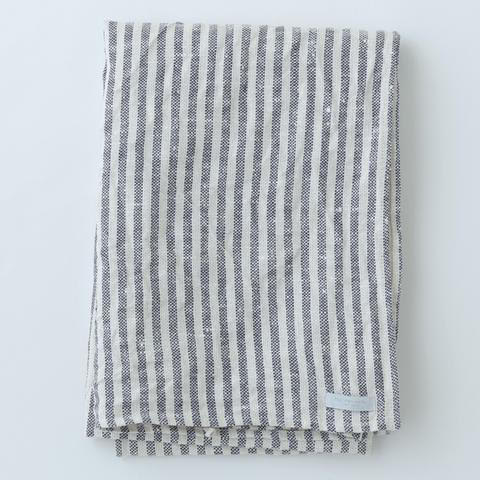 Beautiful, simple products for daily use made from linen. Created by a Japanese designer, the pieces have a an Asian sensibility, made from western fabric. They have everything from table and kitchen linens to bed linens and bath towels, plus loose linen clothing and even linen slippers! Mostly neutral colors, some patterns, some colorful surprises. “We just want to design and distribute an honest, beautiful, and long-lasting product. Our motto: Live with linen. Every day.
Beautiful, simple products for daily use made from linen. Created by a Japanese designer, the pieces have a an Asian sensibility, made from western fabric. They have everything from table and kitchen linens to bed linens and bath towels, plus loose linen clothing and even linen slippers! Mostly neutral colors, some patterns, some colorful surprises. “We just want to design and distribute an honest, beautiful, and long-lasting product. Our motto: Live with linen. Every day.
Leighton Point Linen
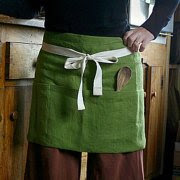 A small collection of simple linen napkins, dish towels, drawstring bags and aprons, mostly made-to-order. But the great thing is the linen comes in colors, so you can mix and match fabrics and threads to make your own unique napkins. They have a purple linen that took my breath away.
A small collection of simple linen napkins, dish towels, drawstring bags and aprons, mostly made-to-order. But the great thing is the linen comes in colors, so you can mix and match fabrics and threads to make your own unique napkins. They have a purple linen that took my breath away.
Pom Pom at Home
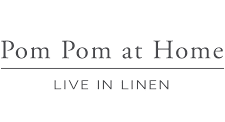 Very elegant Belgian linens for bed, bath, table, and windows. Linen pieces are embroidered, appliquéd, tucked, fringed, and much more for stunning effects.
Very elegant Belgian linens for bed, bath, table, and windows. Linen pieces are embroidered, appliquéd, tucked, fringed, and much more for stunning effects.
Lettermade
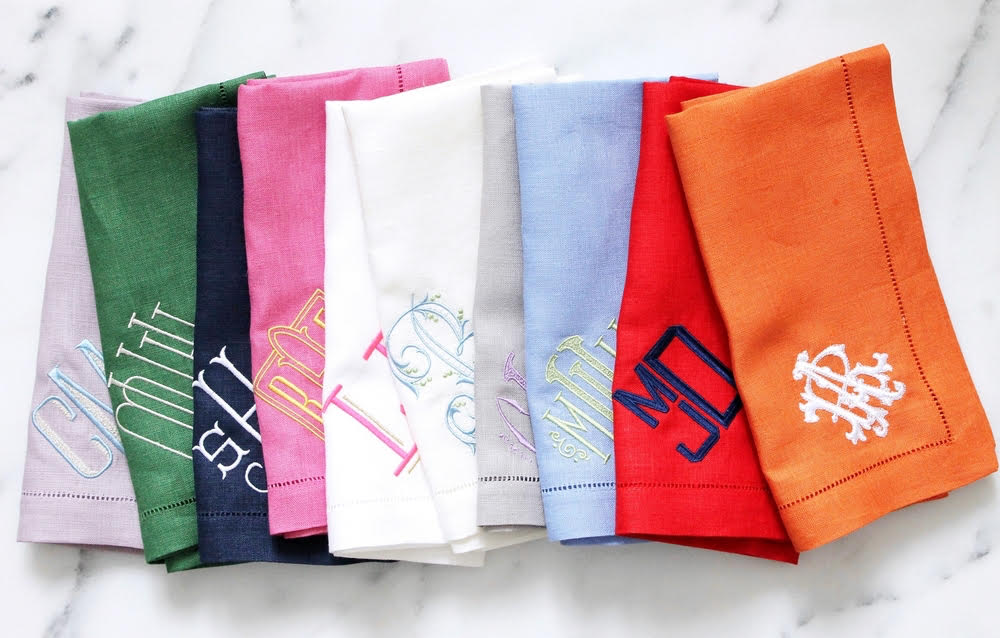 Linen napkins and guest towels embroidered with initials or flowers. You can order linen napkins in various colors with initials, so everyone knows who’s napkin is whose if you are reusing napkins instead of using paper ones.
Linen napkins and guest towels embroidered with initials or flowers. You can order linen napkins in various colors with initials, so everyone knows who’s napkin is whose if you are reusing napkins instead of using paper ones.
Claudio
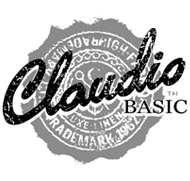 Luxe linen clothing for women and men in simple and sophisticated styles. Women’s sizes S-XXL. Most fabrics are white, but they have colors too.
Luxe linen clothing for women and men in simple and sophisticated styles. Women’s sizes S-XXL. Most fabrics are white, but they have colors too.
Linenshed
 Linen table linens, bed linens, and curtains, 12 soft muted colors, some simple, some frilly. Also fabric “by meter”.
Linen table linens, bed linens, and curtains, 12 soft muted colors, some simple, some frilly. Also fabric “by meter”.
Linen and Tailor
Vivid
 Clothing for women (plus shirts for men) all made of linen, sizes XS-XXL sizes. Loose-fitting and tailored styles, casual and dressy. One thing they have that I can never find in stores is 100% linen unlined jackets. Lots of loose-fitting tops some with embroidered details. Lovely dresses. Plus sizes have their own flattering designs.
Clothing for women (plus shirts for men) all made of linen, sizes XS-XXL sizes. Loose-fitting and tailored styles, casual and dressy. One thing they have that I can never find in stores is 100% linen unlined jackets. Lots of loose-fitting tops some with embroidered details. Lovely dresses. Plus sizes have their own flattering designs.
Two Sisters Ecotextiles
 The two sisters who created this website know more about toxics in textiles and how to choose safe fabrics than any two people I’ve ever met. After years of selling organic upholstery fabrics to the trade, they now have a retail site where you can get the best fabrics for all your fabric needs. “Surround yourself with fabric free of chemical residues that can trigger or aggravate health problems, who production has been safe for the earth, from a company that defines transparency….Safe enough for your newborn. Sophisticated enough for your mother-in-law. Tough enough for the after school gang.” These fabrics are gorgeous. Search by use or color. Fabric for apparel, drapery, tabletop, upholstery, and bedding. $1 samples available. Also readymade napkins, tea towels, and pillow covers. Website has lots of information about fabrics, how they are made, and toxics.
The two sisters who created this website know more about toxics in textiles and how to choose safe fabrics than any two people I’ve ever met. After years of selling organic upholstery fabrics to the trade, they now have a retail site where you can get the best fabrics for all your fabric needs. “Surround yourself with fabric free of chemical residues that can trigger or aggravate health problems, who production has been safe for the earth, from a company that defines transparency….Safe enough for your newborn. Sophisticated enough for your mother-in-law. Tough enough for the after school gang.” These fabrics are gorgeous. Search by use or color. Fabric for apparel, drapery, tabletop, upholstery, and bedding. $1 samples available. Also readymade napkins, tea towels, and pillow covers. Website has lots of information about fabrics, how they are made, and toxics.
 |
Listen to my interviews with Patty Grossman and Leigh Anne Van Dusen, co-Founders (and sisters) of O Ecotextiles |
Vermont Farm Table
 Beautiful solid wood tops for tables, countertops, stools, and anything else you can think of, made by the square inch. Any species, size, shape and quantity. “We build with the best quality New American Hardwoods including Cherry, Maple and Walnut, and can source a wide variety of other options…We also specialize in Reclaimed Woods, including Pine, Oak, Heart Pine and Chestnut, which can be sourced from places like old barns, silos, train stations…We believe in taking the natural route whenever possible. We use a natural oil and wax blend finish on our tables, applied in multiple coats until it saturates the wood, creating a finish that is water and stain resistant. This approach lets the natural beauty of the wood shine through, while creating a finish that is easy to care for over time. ”
Beautiful solid wood tops for tables, countertops, stools, and anything else you can think of, made by the square inch. Any species, size, shape and quantity. “We build with the best quality New American Hardwoods including Cherry, Maple and Walnut, and can source a wide variety of other options…We also specialize in Reclaimed Woods, including Pine, Oak, Heart Pine and Chestnut, which can be sourced from places like old barns, silos, train stations…We believe in taking the natural route whenever possible. We use a natural oil and wax blend finish on our tables, applied in multiple coats until it saturates the wood, creating a finish that is water and stain resistant. This approach lets the natural beauty of the wood shine through, while creating a finish that is easy to care for over time. ”
Bedrock & Bloom
An all natural and organic teeth whitener and detoxifier made with wildcrafted activated coconut shell charcoal, all natural calcium bentonite clay, certified organic mint, certified organic orange peel, certified organic frankincense.
Ball Mason Jars
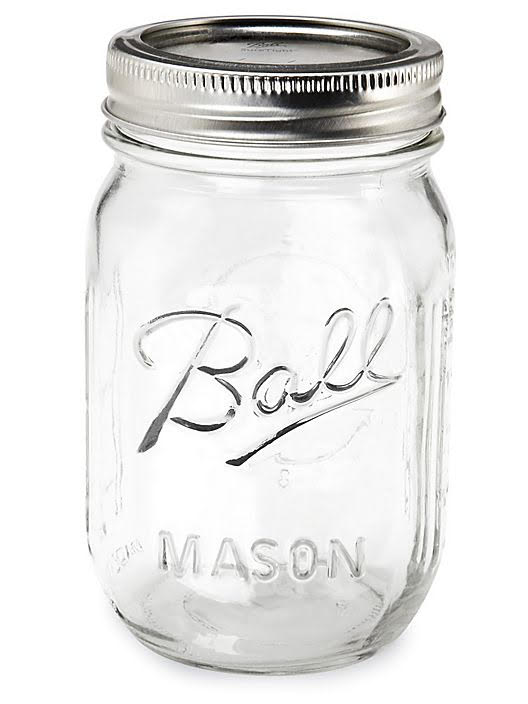 From manufacturer customer service: “Our jars are Made in America and are annealed glass which is lead-free and food safe.They are made from lime, soda, cullet and silica. Our lids are BPA free and made of tin plated steel with a red ring plastisol sealant.”
From manufacturer customer service: “Our jars are Made in America and are annealed glass which is lead-free and food safe.They are made from lime, soda, cullet and silica. Our lids are BPA free and made of tin plated steel with a red ring plastisol sealant.”
Molly’s Suds
Laundry products made with earth and plant derived ingredients. Laundry powder unscented or peppermint. I tried it and it works great! Website also contains lots of tips, like how to remove stains on clothing naturally. Ingredients
Thirteen Organics
Natural-scent skin care and deodorant products. “Thirteen Organics only uses all natural and organic ingredients sourced locally and globally. We do not use artificial colouring or synthetic fragrances – our products are either naturally scented or coloured with what nature provided. Our products are scented with strictly premium organic essential oils, and we only use key ingredients – no unnecessary fillers. We produce quality hand crafted products in small batches…The need to start taking a totally natural approach to skin care was apparent. It was frustrating trying to find products out there that were 100% natural and effective, so our founder started handcrafting it herself so that she actually knew what was in her products… no looking back since. We have created our own gorgeous line of products to help you take back control of your skin.”
Emory James
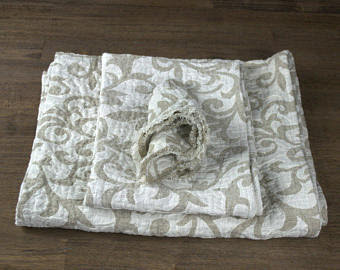 Lovely organic washable linen household items, mostly the natural color, but woven in patterns I don’t often see. Mostly tablecloths, but also blankets and towels of various sizes, including bath towels.
Lovely organic washable linen household items, mostly the natural color, but woven in patterns I don’t often see. Mostly tablecloths, but also blankets and towels of various sizes, including bath towels.
Island Picnic
Colorful items for kids made from certified organic cotton, including lunch bags and accessories, baby bedding, stuffed toys, and picnic blankets.
Ozuke
 Organic fermented pickles, kimchi and kraut that supply natural probiotics. Imaginative flavors and combinations, including Kale & Collard Kim Chi and Green Tea pickles.
Organic fermented pickles, kimchi and kraut that supply natural probiotics. Imaginative flavors and combinations, including Kale & Collard Kim Chi and Green Tea pickles.
VAXXED – A Review of the Movie

Yesterday I drove 90 minutes to the nearest showing of Vaxxed: From Coverup to Catastrophe.
This movie is a breakthrough in making known a widespread toxic exposure and it’s consequences, and shows how the CDC has covered up this danger instead of taking the problem vaccine off the market.
I want to be clear that this movie does NOT say ALL vaccines are harmful. It specifically shows how ONE vaccine in particular—Measles-Mumps-Rubella (MMR) vaccine—has caused autism in far too many children. In fact, the film clearly states that the entire problem could be solved by simply giving babies single vaccines instead of this particular combination. And the response to this was that the single vaccines were taken off the market.
From the information given in the film, it is very clear that the MMR vaccine has a high risk of harm. There are two types of toxic effects: acute and chronic. Acute effect happen immediately or a very short time after—one can clearly observe the cause and effect. Chronic effects happen over time and require repeated exposures before you can see an effect.
The cause-and-effect is clear between the MMR vaccine and autism. Parents report that the child was given the vaccine and within hours began to experience a series of effects that lead to the child withdrawing from social contact, losing speech, and other indicators of autism that are clearly explained in the movie, It’s heartbreaking to watch before=and-after home movies.
It is unbelievable to me how someone could have the data about how MMR vaccine can result in so many cases of autism, and not immediately take this poison off the market. MMR vaccine was introduced in 1988, and since autism has been increasing exponentially. The film shows a graph (not this one shown below) that shows that autism used to be 1 in 10,000,in 2014 the CDC estimated 1 in 68, and within 20 years, if the graph continues, it will be 1 in 2. That’s half the children being autistic.

This breaks my heart. Thirty years ago I became disabled from toxic chemicals in consumer products I was using in my own home. And my response to that was to give my life to making others aware of this danger and showing that chemical injury can be prevented.
Near the end of the film, the CDC whistleblower goes public. But none of the major news outlets carry the story. Instead, they run a story about how there were some hundreds of cases of measles now in 27 states because parent were not vaccinating their children. And then you see that in that same year there were more than 1 million new cases of autism.
I was born in 1955. I had a vaccine. I believe it was for polio. If you want to know what vaccines you might have been given, see The History of Vaccines: Have I Been Vaccinated?
Here is the Recommended Immunization Schedule for 2016
I personally don’t think we need all these vaccines. In my opinion, we need to strengthen our immune systems, in part by reducing exposure to toxic chemicals that cause damage to the immune system.
Nature created our bodies to have the ability to defend themselves against outside invaders. We don’t need vaccines to do this.
Vaxxed: From Coverup to Catastrophe is an excellent presentation of a story that needs to be told. I hope it is only the first of many such films that show in graphic detail how toxic products we are exposed to every day are causing harm.
Again, this movie shows the need for each one of us to find out the dangers in products all around us and how to make choices that protect our health.
At the end of the film, four calls to action are given. Here’s what you can do to help: VAXXED: Take Action
Vaxxed is now being shown in selected theater, and you can also make arrangements for private screenings.
See the film and tell others about it.
New Report from World Health Organization (WHO) Shows Losses of Life and Illness That Results from Toxic Exposures Worldwide
 Public Health Impact of Chemicals: Knows and Unknowns is a new report from the World Health Organization (WHO) that clearly shows how toxic chemical exposures contribute to illness and death.
Public Health Impact of Chemicals: Knows and Unknowns is a new report from the World Health Organization (WHO) that clearly shows how toxic chemical exposures contribute to illness and death.
This 2016 report estimates that 1.3 million lives and 43 million disability-adjusted life-years were lost in 2012 due to exposures to selected chemicals.
However, data are only available for a small number of chemical exposures and people are exposed to many more chemicals every day.
Unintentional poisonings are estimated to cause 193 000 deaths annually, with the major part being from preventable chemical exposures, however only 47% of countries have a poisons centre.
Addressing lead exposure would prevent 9.8% of intellectual disability, 4% of ischaemic heart disease and 4.6% of stroke in the population, yet many countries do not regulate lead paint.
25% of ischemic heart disease
42% of stroke
14% of lung cancer (I think that percent is actually higher)
23% of stillbirths
25% of cataracts
35% of acute lower respiratory infections
20% of suicides
and more
could be prevented by reducing or removing exposures to chemicals that contribute to these conditions.
Again, this is why I do my work. Because all these exposures are preventable. Toxics are a worldwide problem. This is why we need to make toxic free choices in our own homes, workplaces, and communities.
New report from World Health Organization
Overview
This 2016 report estimates that 1.3 million lives and 43 million disability-adjusted life-years were lost in 2012 due to exposures to selected chemicals.
However, data are only available for a small number of chemical exposures and people are exposed to many more chemicals every day.
Unintentional poisonings are estimated to cause 193 000 deaths annually, with the major part being from preventable chemical exposures, however only 47% of countries have a poisons centre.
Addressing lead exposure would prevent 9.8% of intellectual disability, 4% of ischaemic heart disease and 4.6% of stroke in the population, yet many countries do not regulate lead paint.
This report provides examples of effective interventions to prevent death and disease caused by chemicals, and the economic benefits to be gained.
Ban on Mercury Amalgam Fillings
Mercury is known to be a toxic heavy metal , so toxic that is required to be carefully disposed of in special hazardous materials containers when it’s removed from your teeth by the dentist. The environment is protected from mercury, but we aren’t.
How it makes sense to put it the teeth of human beings in the first place doesn’t make sense to me.
But it’s been standard practice to use mercury amalgam for dental fillings for more than 100 years. Since it’s such an old material, it’s grandfathered in under the FDA guidelines. It has never had to undergo the same safety studies that new filling materials have to go through.
But a change is starting to occur.
In 2013, The Minamata Convention on Mercury adopted a global treaty to protect human health and the environment from the adverse effects of mercury.
Norway, Denmark, and Sweden have banned the use of amalgam fillings. And a recent study by the European Union showed that 80% of those polled were in favor of an immediate ban on mercury dental amalgam fillings
The EU Commission has decided to go for a proposal to “phase down mercury dental amalgam” rather than to ban it altogether. But a dentist by the name of Dr. Graeme Munro-Hall has created a petition to the EU Commission to change the wording from a phase down to a phase out.
If you would like to add your name in support of a complete ban of mercury fillings in the European Union, go to Phase Out Mercury Amalgam Fillings.
If the European Union phases out mercury fillings, perhaps the USA will too.
Meanwhile, you can just say no to mercury fillings. There are safer materials available. Better yet, take good care of your teeth. I have never had a filling my entire life.
Communicating With Loved Ones About Toxics
Question from Karen
Hi Debra,
How do u get loved ones to pay attention instead of tuning out, rolling eyes, pressing delete…
Debra’s Answer
This is not an easy thing to solve, so readers I hope many of you will comment with your own stories, because this is important.
I will just tell you my experience.
When I first became aware that my body was sick because of exposures to toxic chemicals, most people had no interest at all.
I was fortunate that my father took me seriously and helped me. It made sense to him, but nobody else in my family was interested.
I was engaged around that time and my fiancé didn’t believe me. We broke up for other reasons, but two years later he came back to me and said “I understand now what you were saying. I’m sick from my apartment too.”
Over time, it became less important to me to have family members believe me or help me because I was meeting new people who were interested and in agreement, who could and did understand. I knew what I was pursuing was right.
When I would meet new people, I would tell them I needed to live nontoxic and tell them what I needed from them. I just wouldn’t get into relationships with people who thought it was more important to wear perfume or aftershave than be with me.
And over time, I met new friends and now this isn’t an issue.
Eventually, though, we need to get everyone in the world on board with living toxic free. It’s just a matter of education, I think, of giving them information in a friendly way. Make them curious instead of defensive.
An example of eduction…one year I discovered organic oranges for the first time. They were soooooooo much more delicious than regular grocery store oranges. So that year for Christmas I gave everyone a bag of oranges as an extra gift, along with a card saying they were organic oranges and explaining what organic is.
Another time a man wanted to date me and I gave him a gift bag of unscented products. He used them and we went on a date and then lived together for a year. He wanted what was best for me and so was entirely willing to live according to my needs.
Later I met another man that I married. He was THRLLED to live toxic free with me.
That’s all I can say on this subject. Except…remember you can catch more flies with honey than with vinegar. Give toxic free products as gifts, speak with love and caring, help others make the transition.
Readers, what are your successes with this?
Bring-Your-Own Organic Airplane Food
Hi Debra,
how about making one’s own airport food ahead and avoid $$$ styrophone corporate food! A yam and nuts and a green kale leaf, perhaps? Thanks! Best karen
Debra’s Answer
I do bring my own food when I fly, but I haven’t been on an airplane in a while. I usually take a bag of nuts to tide me over until I reach my destination.
But there are now actually some rules about what you can bring on a plane due to tighter security and this question prompted me to look them up.
If you go to the Transportation Security Administration (TSA) website, in the upper right corner it says “When I fly can I bring my…” and there is a box below. Enter “food” in the box and it will ask you more questions to narrow down the answer.
For example, under “snack foods” it says
If your snacks are pretzels, potato chips, dried fruit or other dry goods, you can take them in your carry-on or checked bag. Snack items that are liquids or gels, like pudding, jello or yogurt, etc., falls under the 3-1-1 rules for liquids for carry-on bags. They can be transported in checked bags.
The 3-1-1 rule for liquids is: you may carry liquids, gels and aerosols in your carry-on bags only if they are in containers 3.4 ounces or less; packed in a 1 quart/liter zip-top bag; and 1 zip-top bag per person. Larger amounts of non-medicinal liquids, gels, and aerosols must be placed in checked baggage.
So it’s not so much WHAT you are eating, but HOW it is packed.
Turns out some people have really thought this through. Here are some articles that have ideas for foods, how to prepare them, and how to pack them, so your flight will be a pleasant, healthy, and tasty culinary experience.
THE NEW YORK TIMES: Pack a Picnic for Your Next Flight
FOOD BABE: What to Bring On Your Flight, So You Never Get Stick Eating Airport Food Ever Again (great ideas!)
USA TODAY: 10 Tasty Snacks You Can Bring On the Plane
PACKSMITH: What to Eat on the Fly: Airplane Snacks & Packing Tips
SARAH WILSON: What I Eat on Planes
Readers, what do you eat when you fly?
Do Ball Mason Jars Contain Lead?
Question from Demi
Hi Debra,
Do you know where I can find info if ball mason jars contain lead? I store my baby’s food and warm his food in the jar in a boiling water bath.
Thank you!
Debra’s Answer
I wrote to Jarden Home Brands, who now is the manufacturer of Ball Mason Jars.
They replied within a few hours.
Hello Debra,
Thank you for contacting Jarden Home Brands regarding our jars.
Our jars are Made in America and are annealed glass which is lead-free and food safe.
They are made from lime, soda, cullet and silica.
Our lids are BPA free and made of tin plated steel with a red ring plastisol sealant.
We hope that this information is helpful. Please contact us if you have any other questions or if we can be of further assistance. Have a great week!
Sincerely,
The Consumer Affairs Team
Jarden Home Brands
800-240-3340
www.freshpreserving.com
Pharmaceutical Chemicals Found in Every Stream Sampled in USGS Study
Our waterways are filled with traces of drugs, says a new study conducted by the United States Geological Survey (USGS).
A team of researchersecently collected water samples from 59 small streams in the Southeast from Virginia to Georgia, which were analyzed for 108 pharmaceuticals and degrades.
All 59 streams tested positive for at least one of compounds and the overall average was six different compounds per stream.
The drug compounds ranged from common pain killers and antihistamines to medicines used to treat diabetes and seizures.
Metformin, a medicine used to treat Type II diabetes, was found in 89 percent of all sample taken, while acetaminophen, the active ingredient in pains killers such as Tylenol was detected in 36 percent of all samples. Nicotine-related compounds were found in 71 percent of samples, while caffeine-related compounds were found in 49 percent.
None of the chemicals was detected in amounts that exceeded human health benchmarks, but they can cause “toxicity, endocrine disruption, immunomodulation, antimicrobial activity, antibiotic resistance selection, cytotoxicity and mutagenesis, and transgenerational effects throughout aquatic foodwebs,” the study says.
Another study reported in Scientific American showed only about half of the prescription drugs are removed by the water treatment plants that supply our tap water.
Pharmaceutical Chemicals Found in Every Stream Sampled in USGS Study
SCIENTIFIC AMERICAN: Only Half of Drugs Removed by Sewage Treatment

Buying Toxic Free Clothing in Retail Stores
Question from Brittany
Hi Debra,
I am just learning about the toxins in our clothes. Are there any retail stores that follow these guidelines?
It’s just overwhelming! Don’t even know where to start. Everything is polyester.
Where do you shop?
Debra’s Answer
I wish there were such a store, but I haven’t found one yet. There may be boutiques and your can find such places online (see Debra’s List: Clothing page), but I can’t direct you to any major clothing store, And yes, I agree, it seems like everything is getting to be polyester again. Not too long ago there were a lot more natural fibers.
I buy all my clothing in retail stores, but I have to choose carefully.
I live in Florida so most of the time I am wearing cotton capri pants and tank tops. These are easy to find almost anywhere.
I would buy organic natural fibers if I could find and afford them.
But my general rule of thumb is to buy natural fibers—cotton, linen, silk, wool—and in particular no permanent press because it releases formaldehyde. No synthetic fibers, not even 1 percent. My favorite fabric is linen, which is perfect here in my tropical climate.
I also have been known to make my own clothes and have been considering having others make clothing for me. I have made evening gowns and wedding dresses out of beautiful natural fiber fabrics because I refused to wear the synthetic fabrics most formal wear is made from.
I live in Florida so my stores may be different from yours. And I don’t have a lot of choices. I look at Sears and Penny’s and Dillards and Macy’s. Often these stores will have natural fibers, but mostly not. I find things at Ross and TJ Maxx. Just great random pieces that are inexpensive. But they are getting harder and harder to find.
Readers, what is your shopping experience? Where and how to you buy your clothes?
US Government Study Finds Cell Phones Cause Cancer
A multi-year $25 million study done by the National Toxicology Program found “low incidecences” of two types of tumors in male rats exposed to the same type of radio frequencies commonly emitted by cellphones.
It was one of the biggest and most comprehensive experiments into the health effects of cell phones.
“Where people were saying there’s no risk, I think this ends that kind of statement,” said Ron Melnick on seeing the results. He ran the NTP project until retiring in 2009.
WALL STREET JOURNAL: Cellphone-Cancer Link Found in Government Study
New Study Shows Glyphosate in 93% of Americans Tested
In a unique public testing project carried out by a laboratory at the University of California San Francisco (UCSF), glyphosate was discovered in 93% of urine samples during the early phase of the testing in 2015.
The urine and water testing was organized by The Detox Project and commissioned by the Organic Consumers Association.
The unique project, which has already provided more urine samples for testing than any other glyphosate bio-monitoring urine study ever in America, was supported by members of the public, who themselves paid for their urine and water samples to be analyzed for glyphosate residues by the UCSF lab. These subjects were self-selected volunteers who contacted The Detox Project asking for testing.
The data released in a presentation by the UCSF lab only covers the first 131 people tested. Further data from this public bio-monitoring study, which is now completed, will be released later in 2016.
THE DETOX PROJECT:
UCSF Presentation Reveals Glyphosate Contamination in People across America
Due to overwhelming response, testing of body fluids for the presence of glyphosate has been temporarily discontinued while arrangements are being made with a larger lab. If you wish to have this testing, you may do so when the project restarts later this summer.
Camden Rose
 Natural toys and home goods for environmentally conscious families. “We believe it is possible to raise healthy children without the harmful toxins and electronic influences that challenge today’s families.” and so this couple began to design and make their own toys, inspired by the natural toys made in Europe. “Camden Rose natural toys are made from wood, wool, silk, and cotton. Children love these materials because they have a warm, honest quality that appeals to the senses. Unlike plastic, they do not impart a false impression of weight, mass, or touch. Imbued with the life force of trees, plants, and living creatures such as honeybees, our toys are lovely to touch and behold.” No plastics.
Natural toys and home goods for environmentally conscious families. “We believe it is possible to raise healthy children without the harmful toxins and electronic influences that challenge today’s families.” and so this couple began to design and make their own toys, inspired by the natural toys made in Europe. “Camden Rose natural toys are made from wood, wool, silk, and cotton. Children love these materials because they have a warm, honest quality that appeals to the senses. Unlike plastic, they do not impart a false impression of weight, mass, or touch. Imbued with the life force of trees, plants, and living creatures such as honeybees, our toys are lovely to touch and behold.” No plastics.
KSTYLEDESIGN
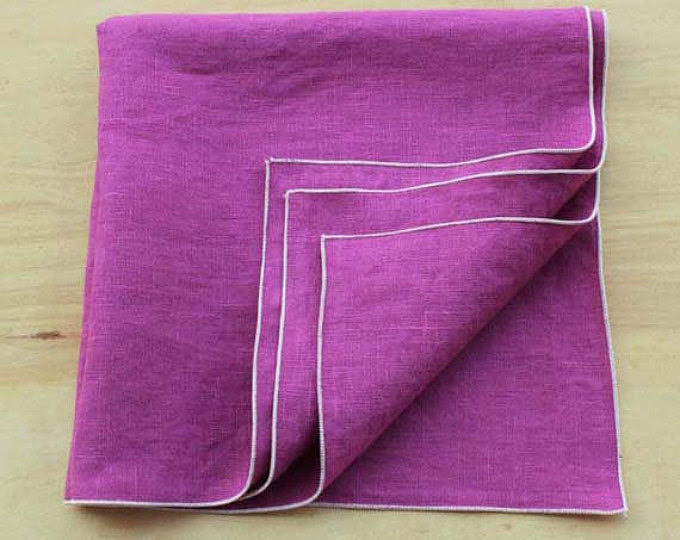 Beautiful, colorful, embroidered linen napkins and placements, custom made just for you. Monograms, colored borders…I love linen and want them all. High quality European linen.
Beautiful, colorful, embroidered linen napkins and placements, custom made just for you. Monograms, colored borders…I love linen and want them all. High quality European linen.
Weber Company
 Custom solid wood cabinets and furniture, handcrafted in Lodi, California. Your choice of wood, can order unfinished and apply your own nontoxic paint or finish. They can make any style to your specifications.
Custom solid wood cabinets and furniture, handcrafted in Lodi, California. Your choice of wood, can order unfinished and apply your own nontoxic paint or finish. They can make any style to your specifications.
Non-Toxic Safe Bicycle Helmets
Question from Grace
Hi Debra,
I am looking to start bike riding again and wondered if helmets were generally non-toxic and safe for someone with MCS? Are there any brands you recommend?
Thanks.
Debra’s Answer
Well it only took 30 seconds to find out the materials used because someone had already compiled all the information at How Bicycle Helmets are Made. This website has a lot of information about helmets, but unfortunately not a list of least toxic helmets.
The liners are molded from Expanded Polystyrene (EPS) which is the same material used to make coffee cups. Years ago styrene was found in the blood of almost 100 percent of people tested. This part of the helmet is mostly made in China. Other foams are used as well, and they have a separate page just for Bicycle Helmet Liners: Foam and Other Materials.
“Polystyrene contains the toxic substances Styrene and Benzene, suspected carcinogens and nurotoxics that are hazardous humans.” Polystyrene Fast Facts, Harvard University.
The hard shell is PET (the plastic used for bottled water containers). It is glued to the liner, so there may be some toxic adhesive there. More expensive helmets have shells made of polycarbonate (that’s the plastic that contains BPA).
I’m just going to stop here. I think you get the idea. Many more chemicals are mentioned in this article.
I know this is a safety thing to wear a helmet, and in some states they are required by law for children, but not for adults.
A helmet could be manufacturered from nontoxic materials, but it seems that everyone thinks they are OK.
Eco-Friendly Travel Trailer
Question from TA
Hi Debra,
I just came across this cute eco-friendly travel trailer made with non-toxic materials, composting toilet, etc.
I thought you might like to know about it. (I admit I just did a quick skim and didn’t check into all the details about materials and such, but did see the claim of non-toxic materials).
I know the subject of safe campers has come up before on the Q&A. Obviously, the price of this isn’t something that everyone can rush out and by. 🙂 But for those who are looking for something like this, or even those who are looking for safe living quarters, might be happy to know about it.
It doesn’t appear to have a shower, but it’s pretty cute. 😉
I don’t know how long they’ve been in business; it looks like they just have this one model right now, so I wonder if down the road they’ll have more options available (perhaps including a shower or other bed configurations, as most of us wouldn’t need bunk beds).
At any rate, it seems worth checking out and surely has to be better than all the “regular” brands that are available. And it would certainly draw attention from others, I suspect, since it’s very unique looking.
By the way, they do rentals in the Pacific Northwest. So even if a person can’t buy one, renting might be an option if a person needs safe travel accommodations in that area of the country. I’d definitely look into it if I ever travel to that area again.
Debra’s Answer
That IS cute! Couldn’t resist showing you the picture. I didn’t see a list of materials, but it does say “No toxic chemicals or VOCs.” How great!

Corporate Progress Toward Safer Chemicals
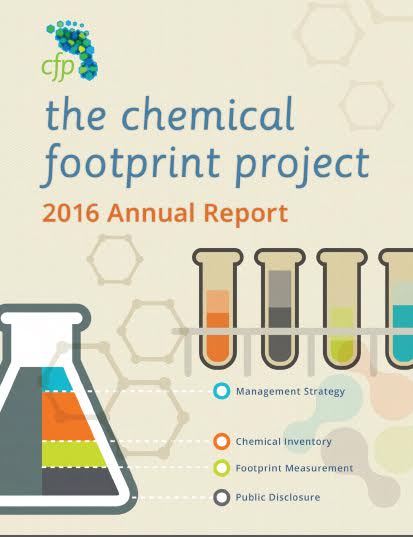 Last week, the Chemical Footprint Project has published its inaugural report — the first initiative of its kind to publicly benchmark corporate chemicals management..
Last week, the Chemical Footprint Project has published its inaugural report — the first initiative of its kind to publicly benchmark corporate chemicals management..
The results provide valuable insights into how leading companies manage chemicals in their products and supply chains, and how all companies might manage these issues in the future.
Last year, a select group of 24 leading-edge businesses both small (millions in annual revenue) and large (tens of billions in annual revenue) stepped forward to participate in the Chemical Footprint Project and to receive a score on their corporate chemicals management practices. Participants included: Levi Strauss & Co.; Seagate Technology, PLC; Johnson & Johnson; GOJO Industries; Becton, Dickinson and Company; Beautycounter; and California Baby, among others.
The report analyzes participants’ responses to a 20-question survey regarding chemicals management across four categories: Management Strategy, Chemical Inventory, Footprint Measurement, and Disclosure & Verification. Key findings include
- Senior leadership matters: The 29% of firms with Board-level oversight or senior management incentives performed better overall than firms with no such accountability.
- Companies need comprehensive policies: Without policies that address chemical hazards in manufacturing, supply chains, and packaging – in addition to products – companies face hidden liabilities and chemical risks.
- Disclosure lags practice: Across every category – Management, Inventory, Footprint, and Disclosure – companies have more chemicals management practices in place than they share publicly. For example, 83% have a legally restricted substances list, but only 17% of those companies make that list public.
- “Design for Health” sets leading edge: companies whose entire product portfolios are based on minimizing or eliminating chemicals of high concern performed well above average.
- Chemical footprint measurement is new and challenging: Before they can reduce their chemical footprints, companies need to know the chemical ingredients in their products and identify chemicals of high concern, so it’s no surprise that in this first year, companies scored low for measuring baseline chemical footprint.
The Chemical Footprint Project (CFP) was launched in 2014 with the support of investors representing $2.3 trillion in assets under management and institutional purchasers with over $70 billion in purchasing power. Similar to carbon footprinting, the project applies clear and consistent metrics to help purchasers select suppliers based on how they manage their chemical footprint. These metrics also enable investors to integrate chemical risk into their sustainability analyses and investments.
“You can’t manage what you don’t measure,” said Dr. Mark Rossi, Executive Director of the nonprofit Clean Production Action and one of the project’s founders. “By scoring companies on their overall progress in avoiding Chemicals of High Concern and using safer alternatives, the Chemical Footprint Project fills a critical missing piece in the sustainability mosaic for investors, purchasers, and other stakeholders.”
Companies participating in the survey see not only an opportunity to improve their performance on environmental measures, but ultimately to reap business benefits like increased sales and market share, higher rates of customer loyalty and employee satisfaction, and lower compliance costs.
Nanoparticles in Baby Formula
 A new report from Friends of the Earth found that popular infant formulas sold throughout the United States contain infinitesimally small ingredients known as engineered nanoparticles,
A new report from Friends of the Earth found that popular infant formulas sold throughout the United States contain infinitesimally small ingredients known as engineered nanoparticles,
The commissioned independent laboratory analysis found nanoparticles in six infant formulas tested. These ingredients are not labeled and are not regulated by the U.S. Food and Drug Administration.
FRIENDS OF THE EARTH: New report: Nanoparticles in baby formula
Polymer Environmental Resin (PER), Thermoplastic Elastomers (TPE) and Least Toxic Yoga Mats
A reader wrote to me as a comment, asking about a yoga mat. Doing research on the response opened up the whole issue of materials used to make yoga mats. So I turned it into a post.
The issue with yoga mats is that in the past, most were made with polyvinyl chloride (PVC), which is made from and emits vinyl monomer (VCM), phthalates, and lead. Together, these materials release chemical gasses that can cause cancer, endocrine disruption, and all kinds of neurological problems.
So within the yoga world, there had been a movement going on towards finding the perfect “PVC-free” yoga mat.
Polymer Environmental Resin (PER)
The yoga mat that prompted this post is made from a material called “PER.”
Somewhere the reader found the following and pasted it into the comment. I’m not sure where she got this as I couldn’t find it on the page of the link she gave me.
This mat has been Oeko-Tex 100 Tested and Approved and are Safe, Non Toxic, Hypoallergenic, No Phthalates, Phenols or PAHS, Free from Latex, Rubber or Silicone.
4) Our Patented PER Mats are made from a new non toxic resin, free of rubber, silicone, latex and does not emit any toxic chemicals or gases.
Please note that PER is a patented product and not PVC as many less expensive products. Be careful of Imitations not registered PER;
5) The mat has been successfully tested against harmful substances; Oeko-Tex Standards Class-1- Baby Articles and US FDA approved by SGS”
So what is this PER and is it really safe?
PER is the acronym for Polymer Environmental Resin. This is kind of a strange name because usually substances are named for the chemicals used to make them. This name simply says it’s a polymer (plastic) resin that has environmental benefits.
Ironically, PER starts as polyvinyl chloride (PVC), which has been plasticized and stabilized with acetyl tributyl citrate instead of phthalates and lead. So it’s not “PVC-free” as advertised. It actually is PVC, with different plasticizers and stabilizers.
Certainly acetyl tributyl citrate is much less toxic than phthalates and lead, so this is an improvement, but what I’m concerned about is that the basic vinyl chloride monomer (VCM) used to make PVC is itself a carcinogen. Swapping out the plasticizers and stabilizers doesn’t change that.
Their claim that it contains no phthalates, phenols, PAHs, latex, rubber, and silicone is certainly true.
They also say it is nontoxic and does not emit any toxic chemicals or gasses. I’ve never seen this material, but I do know something about PVC. And it just doesn’t react 100%. There tends to be some small amount of unreacted VCM. But it only takes a small amount of VCM to be toxic.
I went to the website of the yoga mat in the link the reeder gave me. I didn’t see any mention of Oeko-Tex or a certificate. Maybe it’s there, but I didn’t find it on a sales page.
I also couldn’t find any data on the health effects of PER, either pro or con. No Safety Data Sheet. Nothing.
Here are the only two references I could find on PER:
APPROPEDIA: Polymer Environmental-Friendly Resin
STACK EXCHANGE CHEMISTRY: What is Polymer Environmental Resin (PER)?
Thermoplastic Elastomers (TPE)
Another material used to make PVC-free yoga mats is TPE.
TPE is the acronym for ThermoPlastic Elastomers, a class of copolymers that have the elastic properties of rubber and re-meltable property of thermoplastics.
There are six generic classes of TPEs:
- Styrenic block copolymers (TPE-s)—made of styrene
- Thermoplastic olefins (TPE-o)
- Elastomeric alloys (TPE-v or TPV)
- Thermoplastic polyurethanes (TPU)—made of polyurethane
- Thermoplastic copolyester—made of polyester
- Thermoplastic polyamides
But Safety Data Sheets say only that the material composites are trade secrets.
TPE is such a nebulous term that it could mean many things.
It’s certainly a petroleum product, so if you are sensitive to petrochemicals it wouldn’t be a wise choice.
TPE is being used more and more as an alternative to PVC in various types of products, including medical devices and food packaging.
Oh. Now here is a MSDS for “TPE 5187”: www.ttmarketinginc.com/tds/MSDS-TPE5187.pdf
It lists these ingredients for “TPE”:
- EPDM [ethylene propylene diene monomer (M-class) rubber, a type of synthetic rubber]
- Bromine Flame Retardant
- Antimony Trioxide [another flame retardant]
- Polypropylene [a nontoxic plastic]
- Proprietary Stabilizers [who knows what these are]
OK. That’s as far as I need to search. It’s likely most TPEs contain similar ingredients.
Least Toxic Yoga Mats
While PER and TEC are far better than PVC, they are not good enough for me.
Now we get down to the natural materials used to make yoga mats.
There are a number made from natural latex, but many people are allergic to latex or do not like the natural odor (I am one of them).
So then there are a few yoga mats made from natural fibers.
Yogasana Cotton Yoga Mats
Listen to interview with co-founder and owner Kevin Aylward on Toxic Free Talk Radio
Rawganique Hemp Yoga Mats
Listen to interview with co-founders Klaus Wallner and Thammarath “Touch” Jamikorn on Toxic Free Talk Radio
There may be more, but these are two I know about.
I think it’s great that there are “better” alternatives that are less toxic. But why be less toxic when you can be least toxic?
Personally, I’m always looking for the least toxic materials I can find. PER and TPE are still too toxic for me.
Earthview Products
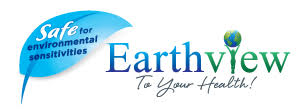
A full line of fragrance-free household cleaning and laundry products—plus skin care, hair, care, and shaving products—formulated by a man experienced with MCS. Made from safe plant- and mineral-derived ingredients—without any aromatics, essential oils, or petrochemical ingredients—and designed for exceptional functionality and performance (I’ve been using these products and they really work well). Sample sizes and economical bulk refills available. “Our experience with MCS led us to create a brand of natural products that work great, and that anyone with environmental sensitivities could always trust to be free of harmful fragrances and chemicals. This was the simple inspiration for Earthview® products…which after 10 years of research and development, has created some incredible product formulas. Our hope is that for lives otherwise changed forever, by toxic chemical exposure we can bring a small measure of beauty and enjoyment in great personal care and cleaning products.” While designed for MCS, these are just great products for everyone to use.
Genopalette
 Natural color wool yarns, from rare, natural-colored Merino sheep. Yarn designed by the shepherd and created at a small American mill. “Materials: wool, fiber, natural fiber, undyed wool, undyed fiber, USA materials, small farm materials, sunshine, grass, rain, made in USA, soil, farm.” Amazing!
Natural color wool yarns, from rare, natural-colored Merino sheep. Yarn designed by the shepherd and created at a small American mill. “Materials: wool, fiber, natural fiber, undyed wool, undyed fiber, USA materials, small farm materials, sunshine, grass, rain, made in USA, soil, farm.” Amazing!
Countryside Gifts
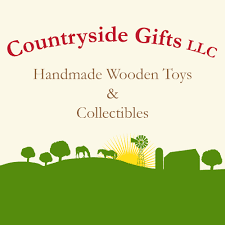 Handmade wooden toys, banks, crayon holders, models, desk accessories and more, with traditional and creative designs. Some can be personalized.”All of our products are lovingly hand-crafted in our wood shop using the finest grade woods and materials. Our products are beautifully finished using only nontoxic finishes. The majority of our products are made from woods harvested using Sustainable Forestry Practices and feature Environmentally Friendly, Organic and Natural Finishes. All our products are 100% Handmade in the USA.
Handmade wooden toys, banks, crayon holders, models, desk accessories and more, with traditional and creative designs. Some can be personalized.”All of our products are lovingly hand-crafted in our wood shop using the finest grade woods and materials. Our products are beautifully finished using only nontoxic finishes. The majority of our products are made from woods harvested using Sustainable Forestry Practices and feature Environmentally Friendly, Organic and Natural Finishes. All our products are 100% Handmade in the USA.
D AND ME
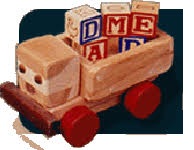 Handcrafted wood toys. Mostly cars and trucks and trains, but if you have an idea for a toy that you’d like, they are happy to make it for you. “All of our handcrafted wood toys provide hours of imaginative play for toddlers and children of all ages. The toys may be ordered with or without (natural) a child safe oiled finish.”
Handcrafted wood toys. Mostly cars and trucks and trains, but if you have an idea for a toy that you’d like, they are happy to make it for you. “All of our handcrafted wood toys provide hours of imaginative play for toddlers and children of all ages. The toys may be ordered with or without (natural) a child safe oiled finish.”
Mountain Pet Products
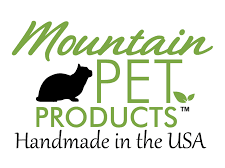 Solid wood cat furniture and toys—all made with natural materials. Cat trees made of solid wood and sisal (no carpet!), a variety of cat scratchers, climber shelves, and toys. Trees and scratchers can be customized to your cat’s content.
Solid wood cat furniture and toys—all made with natural materials. Cat trees made of solid wood and sisal (no carpet!), a variety of cat scratchers, climber shelves, and toys. Trees and scratchers can be customized to your cat’s content.
Fertilizer for Lawn
Question from Joanna
Hi Debra,
Is there a non chemical organic lawn fertilizer and also weed killers that you recommend for someone with extreme MCS? The grass is brown from lack of water in California. Thank you.
Debra’s Answer
I lived in California most of my life, so I can tell you that when you start getting more rain, the lawn will come back to life.
In terms of fertilizer…well, gardening is very localized, and different parts of the country have different conditions and different types of lawn.
So here are my suggestions.
Go online and search on “organic lawn care.” When i just searched I got
- local lawn service companies that use natural methods
- instructions on how to maintain your lawn organically
- Natural lawn care products
Also see if you have a local organic nursery. They would be able to help you with this too.
Foam in a Chair
Question from David
Hi Debra,
I was looking at an office chair, it had vinyl so I read that that has varying levels of toxicity.
But regarding the foam underneath, they said: we use a conventional high density foam for the lower cushion, and a layer cake of four different densities for the smaller cushion. They come from a company in Kansas City that specializes in hospital grade furniture cushions and bedding.
Is this potentially toxic? Yikes, first the outside, now the inside of the chair. I guess it is likely Polyurethane?
Debra’s Answer
Virtually all foam in any chair is going to be polyurethane, unless otherwise stated.
There are many types of polyurethane with various additives for different purposes.
I have no idea what “hospital grade” means. There is no definition I could find on the internet.
It could mean physical safety requirements or it’s more heavy duty or simply that it’s intended for use in hospitals.
Readers, if any of you know or can find out, please let us know.
If you need an office chair, see Totally Toxic-Free Office Chair—Stylish and Affordable Too
Mephisto Shoes
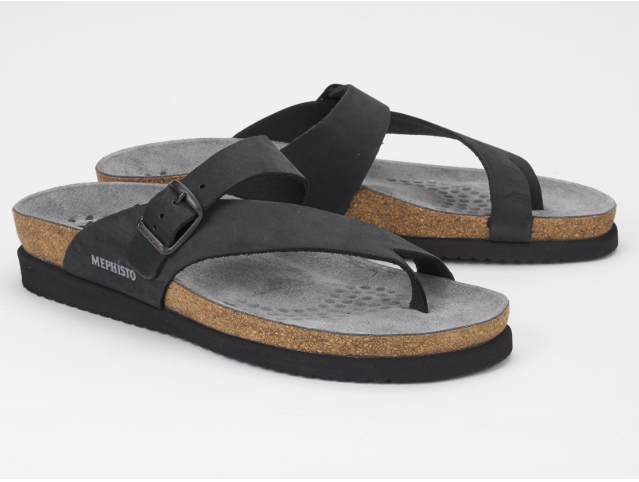 I’ve been wearing Mephisto sandals almost every day for I don’t know how long. At least 15 years. I just buy the same Helen sandals over and over. They are the only shoes I can walk any distance in and never have my feet hurt or get tired. Finally I found some information about the materials. They are handcrafted in France and Portugal. The leathers are highest quality and have “natural tanning.” The soles are natural rubber obtained from latex. I’ve never had any problems of toxic exposure from any pair of Mephitis shoes I’ve purchased.
I’ve been wearing Mephisto sandals almost every day for I don’t know how long. At least 15 years. I just buy the same Helen sandals over and over. They are the only shoes I can walk any distance in and never have my feet hurt or get tired. Finally I found some information about the materials. They are handcrafted in France and Portugal. The leathers are highest quality and have “natural tanning.” The soles are natural rubber obtained from latex. I’ve never had any problems of toxic exposure from any pair of Mephitis shoes I’ve purchased.
Pack-It Cooler Bags
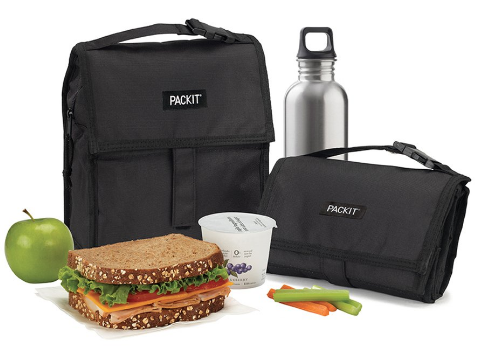 Here’s a bag that freezes overnight, then chills all day. “It’s the only bag that keeps food and drinks cool up to 10 hours – No ice packs needed.” These bags have a freezable gel right inside the sides of the bag, so foods are kept cold from all directions. I can see these bags being useful for shopping, travel, lunch, so you can really take your food with you.”Made from food-safe, nontoxic poly canvas and waterproof EVA. PVC-, BPA-, phthalate- and lead-free. What a great idea! Bags come in 12 sizes, including a grocery-size bag.
Here’s a bag that freezes overnight, then chills all day. “It’s the only bag that keeps food and drinks cool up to 10 hours – No ice packs needed.” These bags have a freezable gel right inside the sides of the bag, so foods are kept cold from all directions. I can see these bags being useful for shopping, travel, lunch, so you can really take your food with you.”Made from food-safe, nontoxic poly canvas and waterproof EVA. PVC-, BPA-, phthalate- and lead-free. What a great idea! Bags come in 12 sizes, including a grocery-size bag.
Midnight Laboratory
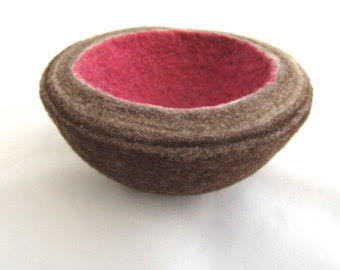 “Practical hand-felted home goods created through an almost alchemical synthesis of natural wool, natural dye plants and unique felting techniques.”Mostly trivets and bowls (to hold little things, not for food).
“Practical hand-felted home goods created through an almost alchemical synthesis of natural wool, natural dye plants and unique felting techniques.”Mostly trivets and bowls (to hold little things, not for food).
Traditional Foods Market
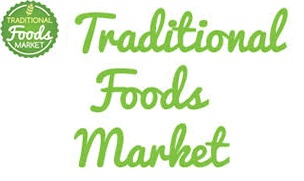 A collection of whole food supplements developed by Ramiel Nagel, author of three popular nutrition books that recommend whole foods for healing. “I found many of the foods I wanted to buy at the health food store did not reflect my own personal food values. I know that my family and yours needs food without additives, food that is pure, and food that comes from humanely raised pasture-fed animals. I want you to enjoy what you buy here, and I want what you buy here to make you healthier and to sustain you and your family…If we won’t eat it, we won’t sell it, no matter how profitable it could be.” Supplements include things like Organic True Whole Food Vitamin C made from certified organic acerola cherries from a biodynamic farmer, free-range pasture-fed organic colostrum, and free-range pasture-red whole bone calcium.
A collection of whole food supplements developed by Ramiel Nagel, author of three popular nutrition books that recommend whole foods for healing. “I found many of the foods I wanted to buy at the health food store did not reflect my own personal food values. I know that my family and yours needs food without additives, food that is pure, and food that comes from humanely raised pasture-fed animals. I want you to enjoy what you buy here, and I want what you buy here to make you healthier and to sustain you and your family…If we won’t eat it, we won’t sell it, no matter how profitable it could be.” Supplements include things like Organic True Whole Food Vitamin C made from certified organic acerola cherries from a biodynamic farmer, free-range pasture-fed organic colostrum, and free-range pasture-red whole bone calcium.
Holistic Dental Store
Tooth powder and mouthwash made with organic and wildcrafted herbs. Tested and approved by Remiel Nagel, author of Cure Tooth Decay.
Winterwoods Tea Company
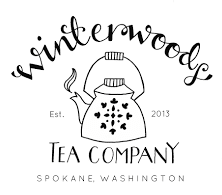 “Farm to Tea Cup…Winterwoods Tea Company produces small batch artisan teas hand mixed in Spokane, Washington. We’re passionate about creating delicious gourmet teas using only the finest 100% organic and fair trade ingredients. We begin by sourcing our ingredients from high quality small, local farms and distributors, many of them from within the Northwest. As a mother-daughter based business we are able to hand mix each batch of tea in small batches to ensure top quality flavor and freshness.”
“Farm to Tea Cup…Winterwoods Tea Company produces small batch artisan teas hand mixed in Spokane, Washington. We’re passionate about creating delicious gourmet teas using only the finest 100% organic and fair trade ingredients. We begin by sourcing our ingredients from high quality small, local farms and distributors, many of them from within the Northwest. As a mother-daughter based business we are able to hand mix each batch of tea in small batches to ensure top quality flavor and freshness.”
Skinsentials
Skin care products that are organic all the way down to the essential oils. They offer a scrub that you can customize to be sea salt or organic sugar, with your choice of oil and essential oils.
Plant Inspiration
Highly functional planters with a minimalist design that are deal for culinary herbs, succulents and houseplants. These space-saving planters can be hung, wall mounted, or arranged as seated decor. Handcrafted in powder-coated steel for indoor and outdoor use.
Is It Safe To Swim in Local Waters?
The results of a study done by the Izaak Walton League of America say we don’t have enough information to know—but it’s likely that they contain the same toxic chemicals we are exposed to every day in consumer products.
The vast majority of the nation’s streams and rivers are not effectively studied for water quality.
Though states are required to test the water quality of their streams and rivers under the Clean Water Act of 1972, IWLA says that “funds are limited and most waterways are not tested regularly or accurately.” In fact, only 2 percent are effectively tested for water quality. Adding to the concern is the fact that half have failed to meet state water quality standards, which means they are too dirty for swimming or fishing. The harsh reality is that for too long, Americans have been in the dark about the health of their local waters, many of which may harbor undetected pollution.
We can read about today’s air quality in the morning’s newspaper or watch it on the news, and look up realtime data online. But data about the health effects of local streams and reverses five to ten years old.
The report found
Just 2 percent of rivers and streams are effectively tested. In terms of the overall effectiveness of a state’s stream monitoring efforts, more than half of all states (26) received D or F grades.
and
Water that runs off our yards, roads, and farm fields carries a laundry list of pollutants into streams and rivers across the country: bacteria and pathogens; nutrient-rich fertilizers and pesticides; oil, antifreeze, and other chemicals; and heavy metals and acid drainage. This runoff is flowing untreated into the streams and rivers that are the lifeblood of an interconnected system of waterways nationwide. Neither the Clean Water Act nor most state laws effectively address this problem—or address it all.
ECOWATCH: 5 Reasons Why You Should Think Twice Before Jumping Into Your Local River
Phthalates from Plastic Pool Liners
I used to have a above-ground pool, with a soft vinyl liner. At the time I wondered if any toxic chemicals were being released from it. When I asked the manufacturer of the liner I was assured it was perfectly safe.
Today I came across a study about the migration of plasticizers used to make soft PVC (phthalates) into water.
It’s a study regarding pond liners, but that’s close enough to a pool liner.
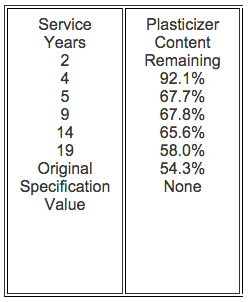
These numbers show that the greatest migration of plasticizer occurs in the first five years. A pool liner that has been in use for more than 5 years would be much less toxic.
But here it is…evidence that vinyl pool liners and little plastic pools kids play in are releasing phthalates into the water, which in turn gets into our bodies via absorption through the skin.
EWG is Rethinking Cancer
This week Environmental Working Group launched a new website called Rethinking Cancer
It’s all about preventing cancer in the first place, instead of finding a cure.
And I totally agree with this approach. I’ve been working to that end for more than thirty years.
If you are concerned about cancer, this is a good place to start to get some ideas about what to do.
What Is Lyocell (Tencel)?
Question from B J
Hi Debra,
Could you please tell me what it is? There are a ton of clothes made out of it this year.
Debra’s Answer
Tencel has been around for quite a while. I remember when it first came on the market in 1997. I was doing some consulting work for Esprit de Corps in San Francisco and they were looking at Tencel.
There are actually three categories of fibers:
- natural fibers – fiber as it occurs in nature
- regenerated cellulose fibers – cellulose from plants put through industrial process
- synthetic fibers – industrial an-made fibers made from petroleum
Tencel is akin to rayon and modal in that they all start as natural cellulose from plants, thus their generic term is “regenerated cellulosic fibers.” Bamboo actually is another one.
The difference between “regenerated cellulosic fibers” and actual “natural fibers” (cotton, linen, silk, wool, and others) is that the natural fibers are actually fibers taken directly from the plant and spun into yarn, whereas the regenerated fibers start as plants but get turned into an industrial product before they become yarn and then fabric.
If you go to the Tencel website , you will see that they call Tencel “botanic fiber” because the raw material—word—comes from Nature. And it does. But as Tencel, the natural material is no longer in it’s natural state. The website also states that solvents are used in the process of turning wood into Tencel.
Tencel is an “eco-friendly” fabric because it saves resources and recycles it’s solvent. The wood comes from single-species tree farms.
Tencel was the first cellulose fiber to utilize nanotechnology for performance.
I personally wear natural fibers as my first choice and occasionally wear regenerated cellulose fibers as a second choice if it’s something like a scarf that I really love. But since natural fibers are widely available, I just wear natural fibers.
While there do not seem to be any known health effects from Tencel, I wouldn’t recommend it for anyone with MCS. Many readers have written in saying they react to Modal (that post seems to be lost).
I also don’t recommend clothing made from Tencel. There are manywebsites that sell clothing made from organic cotton plus Tencel or Modal, and I don’t list them on Debra’s List. There’s just a wholeness about natural fibers that have health benefits of their own, and I don’t want to alter that.
Here are some articles with more information on Tencel:
Tencel: Sustainable but not necessarily healthy gives a good overview about Tencel, benefits and concerns
Eco-Fiber or Fraud? Are Reyon, Modal, and Tencel Environmental Friends or Foes? puts Tencel in the context of the history of regenerated cellulose fibers.
Tencel or Lyocell ecofriendly — caution for those with MCS. Not recommended for MCS.
Haven Natural Brew Soil Conditioner Teas
A special line of all natural soil conditioning tea, from manure harvested exclusively from the by-product of Haven owned livestock. “Haven Livestock Producers, since 1924, has ‘only’ raised natural grass field livestock. Our livestock is raised through rotation on native and permanent grass pastures. For generations Have Livestock Producers has been committed to raising our livestock free of antibiotics, growth hormones and pesticides.” Unfortunately, their meat is not available for online purchase. Click here.
EcoStatic Adhesive-Free Slickynotes
A “slick” alternative to post-its, these note papers have an electrostatic charge that makes them stick. Because they have no adhesive, you can write on them front and back. “You can stick to any smooth, dry surface like drywalls, windows, wallpaper, wood desk, doors and more. Their stable electrostatic charge lasts for weeks. Stick, re-stick and slide them around.”
Rawclates
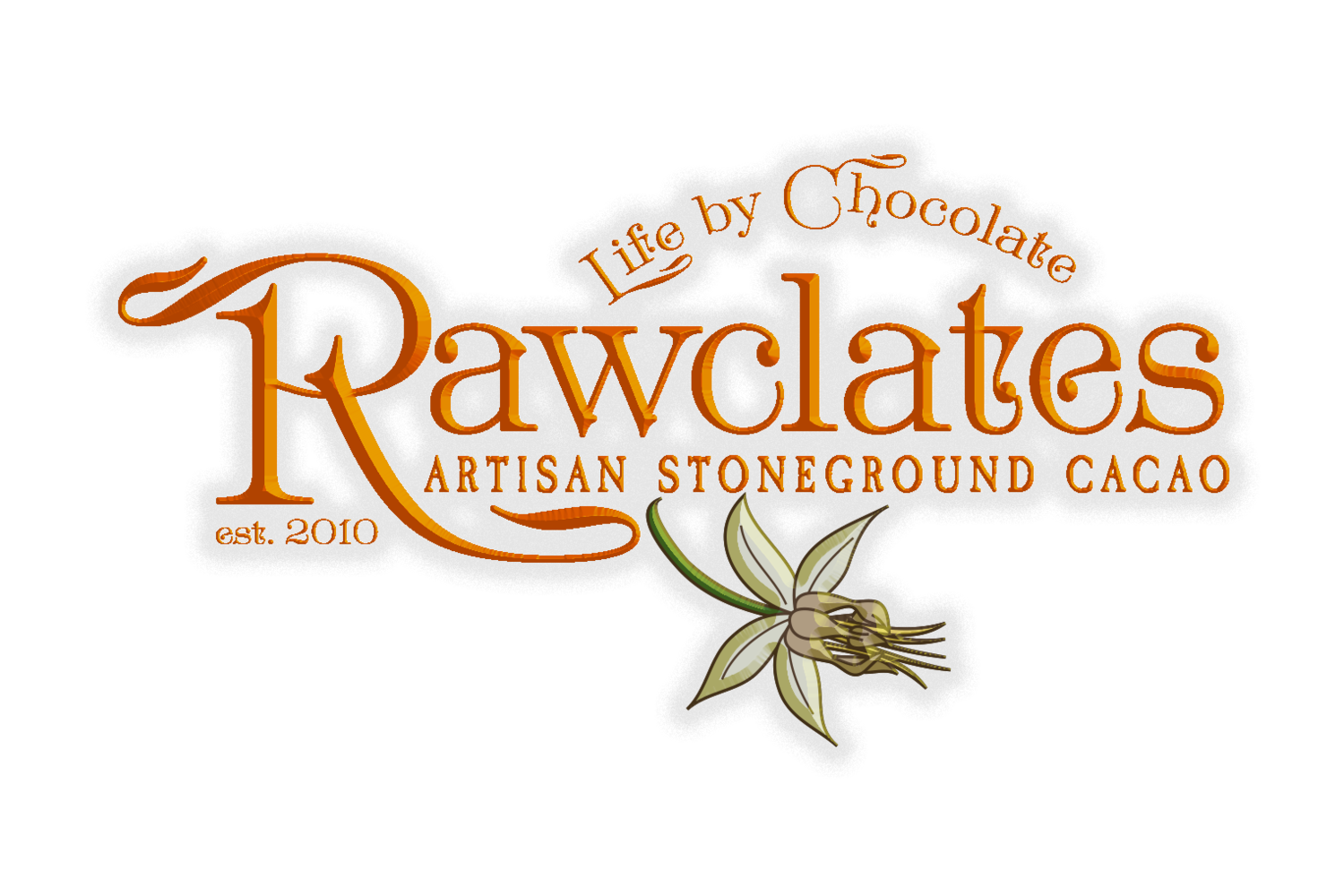 Chocolate bars made from raw, artisan stoneground cacao, coconut sugar and superfoods. “All of Rawlates’ handcrafted gluten free, kosher artisan chocolates are made locally in Brooklyn, NY, created with a passion for pleasing the most enthusiastic chocolate lover…Hadara blends her 25 years of expertise in culinary arts and healing practices to create each unique Rawclate.” I tried these and they are delicious. Very low glycemic. Soy-free, dairy-free, non GMO, organic.
Chocolate bars made from raw, artisan stoneground cacao, coconut sugar and superfoods. “All of Rawlates’ handcrafted gluten free, kosher artisan chocolates are made locally in Brooklyn, NY, created with a passion for pleasing the most enthusiastic chocolate lover…Hadara blends her 25 years of expertise in culinary arts and healing practices to create each unique Rawclate.” I tried these and they are delicious. Very low glycemic. Soy-free, dairy-free, non GMO, organic.
Scratch and Peck Feeds
Got backyard chickens? This feed will produce the best eggs. All of our feeds are soy free and canola free, while our Natural Free Line of products are also Corn Free. Our feeds are completely raw with our limited processing technique. We source grains organically grown and we mill to order in the Pacific Northwest. When you use our Certified Organic Feed, you can rest assured that you are protecting your animals, your family and your health because “you are what your animals eat.”
The Simply Co
Unscented or Lavender Laundry Detergent, make from baking soda, washing soda, organic castile soap and organic essential oils. “We’re all about keeping it simple. No SLS. No dyes. No 1-4 dioxane. No EDTA. No petrochemicals. No Chlorine. No Phosphates. No DEA. No formaldehyde. No optical brighteners. No synthetic preservatives. No animal testing. – EVER!”
Fruition Seeds
Over 200 varieties of certified organic open-pollinated, GMO-free seeds, customized to thrive in the Northeast USA.
Zosimos Botanicals
“Our skilled Artisans handcraft mineral makeup and natural skincare in a 100% wind-powered studio. Healthful cosmetics are mindfully created in small batches using pure mica, certified organic essential oils, waxes, herbs, certified organic fruit extracts and floral waters. Zosimos Botanicals gives you the absolute freshest nontoxic cosmetics possible…we are dedicated to reducing our customers dependence on chemical exposure “ Make-up, hair care, skin care. Trial sizes available.
Oristand
Turn your sitting desk into a standing desk for only $25. This well-designed industrial-grade cardboard box sits on top of your desk, bring your workspace to the proper height to use when you are standing. “No screws. No assembly. No instructions.” Looks like you can set it up in seconds.
Tried & True Wood Finishes
This wood finish is now being used on many wood products that choose to eliminate toxic exposures. “Made from all-natural renwable ingredients that do not contain solvents, toxins, or heavy metal dryers. Safe for food and skin contact…made from sustainable agricultural resources. Linseed oil is a plant derived material, pressed from the seeds of the flax plant. The beeswax used in Original Wood Finish is a by-product of honey production, and varnish resin used in Varnish Oil (hardened tree sap) is a natural forest product…After the impurities are removed, the linseed oils we use are polymerized or “aged”, this means they have enhanced drying properties. No petroleum distillates, or other solvents, or their derivatives are added. No heavy metal driers are used. The methods we employ are adapted from 18th to early 20th century finish making. We combine quality control, current technology and traditional formulations to enhance the properties of the natural ingredients used in Tried & True…All Tried & True wood finishes comply with the product safety standards established by the FDA: “safe for food contact surfaces” (FDA 21, Sec 175.300). Beeswax and natural varnish resin are FDA approved as non-allergic and non-hazardous. Our products, or any of its ingredients, are not regulated under the Hazardous Materials Transportation Act (Title 40) or the EPA Resource and Recovery Act (Title 49).”
Get Stinky Perfume Off Your Skin
Question from Mary
Hi Debra,
Debra, I can’t wait to try this –when I use the restroom and they have liquid soap and the odor stays on my hands for the rest of the day!
www.bottomlinepersonal.com/household-magic/get-stinky-perfume-off-skin
Azure Standard
 A free-to-join food coop. “Azure reduces waste and saves you money by connecting directly with independent growers and food producers, shortening the cycle and handling of your food. You have access to organic farm-fresh veggies and dried bulk foods, grass-fed dairy and frozen meats, raw honey and non-GMO oils, packaged foods, nutritional supplements and beauty products. Your order is processed at our massive warehouse in Oregon, packed in recycled boxes with your name on it, and put on a truck that delivers straight to you…What started out as an organic farm over 40 years ago, has since grown into the largest independent natural and organic food distributor in the country. As a result of extraordinary growth and steadfast commitment, Azure now delivers more than 12,500 non-GMO and organic products direct to families, manufacturers and retailers across the nation, including Hawaii and Alaska. Customers love the many options for bulk and family-friendly sizes…We support a free and independent food supply chain where our customers can choose clean and quality foods they trust. And, we provide food producers with a strong base of ardent customers who appreciate them, will support them and help them thrive.”
A free-to-join food coop. “Azure reduces waste and saves you money by connecting directly with independent growers and food producers, shortening the cycle and handling of your food. You have access to organic farm-fresh veggies and dried bulk foods, grass-fed dairy and frozen meats, raw honey and non-GMO oils, packaged foods, nutritional supplements and beauty products. Your order is processed at our massive warehouse in Oregon, packed in recycled boxes with your name on it, and put on a truck that delivers straight to you…What started out as an organic farm over 40 years ago, has since grown into the largest independent natural and organic food distributor in the country. As a result of extraordinary growth and steadfast commitment, Azure now delivers more than 12,500 non-GMO and organic products direct to families, manufacturers and retailers across the nation, including Hawaii and Alaska. Customers love the many options for bulk and family-friendly sizes…We support a free and independent food supply chain where our customers can choose clean and quality foods they trust. And, we provide food producers with a strong base of ardent customers who appreciate them, will support them and help them thrive.”
Hudson Valley Seed Library
One of the most creative seed sites I’ve seen, you’ll love browsing this site for certified organic seeds for vegetables, flowers, and herbs. I love the “Art Packs” which “celebrate the diverse stories of seeds and their stewards. Each year we expand our collection putting out an open call for artists.” Many heirloom varieties. “We took 4 of the oldest, yet most sought after and high quality heirloom lettuce varieties and brought them together in this mix.”
Hammons Black Walnuts
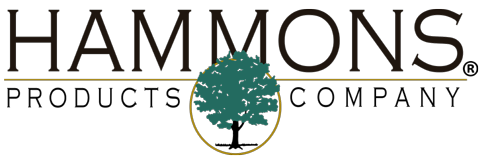 Hand-harvested wild black walnuts and their shells (ground to various sizes for various uses.
Hand-harvested wild black walnuts and their shells (ground to various sizes for various uses.
Golden Moon Tea
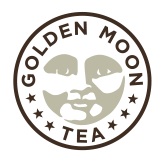 “Tea, the whole tea, nothing but the tea…no pesticides, no GMOs, no chemically treated teabags and not “natural” or artificial flavors.” Plus “toxin free teaware, including a double wall glass tea cup to keep your tea hot.
“Tea, the whole tea, nothing but the tea…no pesticides, no GMOs, no chemically treated teabags and not “natural” or artificial flavors.” Plus “toxin free teaware, including a double wall glass tea cup to keep your tea hot.
Tuckerman & Co.
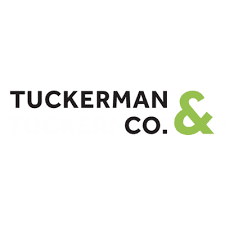 Men’s dress shirts±long-staple organic cotton, the world’s finest Italian mills, quality craftsmanship backed by 80 years experience. Made in New England. Tuckerman was created for a simple but powerful reason: we were frustrated trying to find high quality clothing that we felt good about. Most of what was available on the rack or in stores just wasn’t very well made and didn’t last very long. Curious by nature, we started asking questions, and the more we learned the less we liked it. There had to be a better way. Our approach has been to try and reimagine clothing the way that it should be made. We have a bias toward the timeless over the fleeting. We believe in using the finest materials and partnering with those who take genuine pride in their work. We have a strong commitment to environmental responsibility, and wherever possible use less harmful materials over their conventional counterparts. Together, we believe these all make for a better product.
Men’s dress shirts±long-staple organic cotton, the world’s finest Italian mills, quality craftsmanship backed by 80 years experience. Made in New England. Tuckerman was created for a simple but powerful reason: we were frustrated trying to find high quality clothing that we felt good about. Most of what was available on the rack or in stores just wasn’t very well made and didn’t last very long. Curious by nature, we started asking questions, and the more we learned the less we liked it. There had to be a better way. Our approach has been to try and reimagine clothing the way that it should be made. We have a bias toward the timeless over the fleeting. We believe in using the finest materials and partnering with those who take genuine pride in their work. We have a strong commitment to environmental responsibility, and wherever possible use less harmful materials over their conventional counterparts. Together, we believe these all make for a better product.
Cake in the Morn
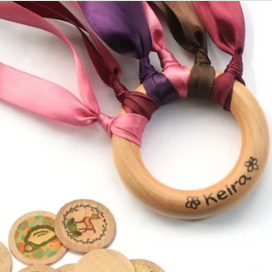 Cake in the Morn specializes in natural, eco friendly Montessori and Waldorf toys. Each toy is made to order. It is hand cut, hand painted, and hand sewn by Heidi. Each design you see is created by Heidi and unique to Cake in the Morn. You won’t find toys like ours anywhere else! We use eco-friendly felt, all American hardwood, and an AP-certified non-toxic paint wash on all of our wood products. All of our toys are sealed with our very own homemade local beeswax seal.
Cake in the Morn specializes in natural, eco friendly Montessori and Waldorf toys. Each toy is made to order. It is hand cut, hand painted, and hand sewn by Heidi. Each design you see is created by Heidi and unique to Cake in the Morn. You won’t find toys like ours anywhere else! We use eco-friendly felt, all American hardwood, and an AP-certified non-toxic paint wash on all of our wood products. All of our toys are sealed with our very own homemade local beeswax seal.
Conway Electric
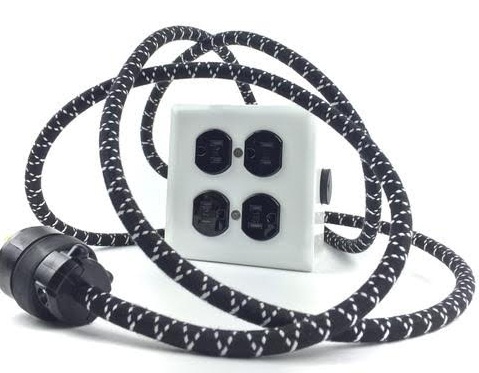 Modern, powerful, electrical extensions that are safer and more stylish than your power strip. The square cast-aluminum housing is grounded, fire-resistant, and powder-coated in colors. And the cords are cloth-covered, not plastic. You can also buy the made-in-USA cord by the foot (only $1!).
Modern, powerful, electrical extensions that are safer and more stylish than your power strip. The square cast-aluminum housing is grounded, fire-resistant, and powder-coated in colors. And the cords are cloth-covered, not plastic. You can also buy the made-in-USA cord by the foot (only $1!).
Kaufmann Mercantile
![]() If I lived down the street from this store, I would be there constantly. First I would buy the waterproof waxed cotton canvas lunch bag. “Home pared down to the essentials….From the very beginning, the Kaufmann Mercantile team has worked closely with makers and manufacturers from around the world, sharing a deep appreciation for products made with honest, lasting materials and grounded in a sense of place. Our new endeavor, Kaufmann, is dedicated to the simple yet focused pursuit of distilling a piece to its most essential elements. Each is made in the United States by hand.” Furniture, dinnerware, bags, kitchenware, candles, all thoughtfully and beautifully designed from natural materials. Cookware and bakeware is all clay, porcelain and soapstone.
If I lived down the street from this store, I would be there constantly. First I would buy the waterproof waxed cotton canvas lunch bag. “Home pared down to the essentials….From the very beginning, the Kaufmann Mercantile team has worked closely with makers and manufacturers from around the world, sharing a deep appreciation for products made with honest, lasting materials and grounded in a sense of place. Our new endeavor, Kaufmann, is dedicated to the simple yet focused pursuit of distilling a piece to its most essential elements. Each is made in the United States by hand.” Furniture, dinnerware, bags, kitchenware, candles, all thoughtfully and beautifully designed from natural materials. Cookware and bakeware is all clay, porcelain and soapstone.
EcoButterfly Organics
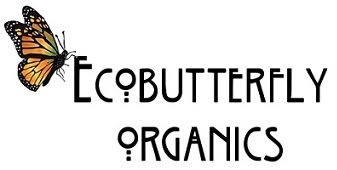 A variety of organic cotton yarns, hemp yarns and natural beads and buttons. “We decided never to offer highly chemical processed synthetic rayon yarns just because they are made from natural bamboo, soy, corn, tencel, banana, milk etc. These natural fibers are made into a chemical soup and extruded like spaghetti to make the silky “rayon” yarns and they are nowhere near eco-friendly. GMOs (Genetically Engineered corn & soy) are also unacceptable. ”
A variety of organic cotton yarns, hemp yarns and natural beads and buttons. “We decided never to offer highly chemical processed synthetic rayon yarns just because they are made from natural bamboo, soy, corn, tencel, banana, milk etc. These natural fibers are made into a chemical soup and extruded like spaghetti to make the silky “rayon” yarns and they are nowhere near eco-friendly. GMOs (Genetically Engineered corn & soy) are also unacceptable. ”
Lakeshore Linen
 Rustic textured 100% linen made into products for kitchen, table, bedroom and bath. “Simple, natural, comfortable.”
Rustic textured 100% linen made into products for kitchen, table, bedroom and bath. “Simple, natural, comfortable.”
Formaldehyde Emissions from Laminate Flooring
While searching for something else, I just happened to find a new report, released on 22 March 2016, called POSSIBLE HEALTH IMPLICATIONS FROM EXPOSURE TO FORMALDEHYDE EMITTED FROM LAMINATE FLOORING SAMPLES TESTED BY THE CONSUMER PRODUCT SAFETY COMMISSION
You can read the full report. Prompted by last years expose by 60 Minutes of formaldehyde emissions from laminate flooring made in China, sold at Lumber Liquidators, the CPSC did their own study on laminate flooring and evaluated the health effects from this particular exposure to formaldehyde.
Here are the results.
NOTE: Because of the small number of laminate flooring samples tested, these conclusions do not represent the range of all possible formaldehyde concentrations and should not be generalized to all laminate flooring manufactured during the period of concern.
As a result of this evaluation, NCEH/ATSDR has come to the following conclusions:
Health effects from estimated formaldehyde exposures
Non-cancer effects
Floorboard contributions
- The amount of formaldehyde released could cause health symptoms in residents. Those symptoms include an increase in breathing problems and short-term eye, nose, or throat irritation. These symptoms are more likely to occur at lower concentrations for people with pre-existing health conditions like asthma or chronic obstructive pulmonary disease (COPD).
- The higher the emissions the more likely people are to experience health effects, regardless of their age or pre-existing health conditions.
- Flooring in small chamber tests had lower emission rates than flooring in large chamber tests. Across all testing, the NCEH/ATSDR model results show that in 95% of the samples, the amount of formaldehyde released by new laminate flooring alone could range from at or below 185 micrograms of formaldehyde per cubic meter of air (µg/m3) to at or below 930 µg/m3.
Floorboard contributions plus typical indoor levels
- Formaldehyde is a common indoor air pollutant found in almost every home in the United States. It comes from manufactured wood products, permanent press fabrics, and other common household products. The typical amount of formaldehyde in indoor air ranges from a few µg/m3 to 240 µg/m3, with an average less than 50 µg/m3. This range
includes lower levels in older, less energy efficient homes, and higher concentrations in newer or newly renovated homes (ATSDR 1999; ATSDR 2010).- NCEH/ATSDR added the estimated amount of formaldehyde released by new laminate flooring to typical home indoor air levels.
- Our calculations show that if homes already contain new materials or products that release formaldehyde, the new floorboards could add a large amount of additional formaldehyde to what is already in the air from other sources. This additional amount of formaldehyde increases the risk for breathing problems as well as short-term eye, nose, and throat irritation for everyone.
Cancer effects
We estimated the risk of cancer from the CPSC-tested flooring based on conservatively high exposure assumptions:
- Installing flooring with the highest formaldehyde levels, and
- Breathing in formaldehyde at those levels in the house all day long for two years.
Using these assumptions, we estimated the lifetime risk of cancer to be between 6 and 30 extra cases for every 100,000 people. Formaldehyde levels are higher when products are new and get lower over time. Several studies have shown that indoor air concentrations of formaldehyde from new building products usually decrease over time, particularly during the first two years. Even though levels reduce over time, we calculated lifetime risk very conservatively and in a manner that is most protective of health, assuming a constant 24-hour, 7-day a week exposure to the measured floorboard emissions for the entire 2-year off-gassing period. If we instead assume a constant formaldehyde decay rate over the same 2-year period, these cancer risks would be reduced by half. If formaldehyde concentrations are assumed to remain elevated after a two-year period, the cancer risks would be proportionally increased.
To put those numbers in perspective, the American Cancer Society (http://www.cancer.org) estimates that the lifetime cancer risk for people living in the United States is one in two men (50,000 per 100,000 people) and one in three women who may develop cancer from all causes (33,333 per 100,000 people).
Quality of life
People can generally smell formaldehyde before being adversely affected by it. Formaldehyde released from laminate flooring at levels that individuals can smell may affect their quality of life. Exposure to the estimated formaldehyde levels discussed in this report may cause sensory irritation, nausea, stress, and headaches.
Now this applies only to the actual laminate flooring tested, but it may apply to other laminate flooring.
We need to be careful to not extrapolate that just because this batch of flooring tested has these results that all other laminate flooring would have similar results.
I have been recommending against laminate flooring since Pergo came out years ago. I called them and without hesitation they told me that their flooring emits formaldehyde and they sent me the emissions tests.
I would like to see ALL laminate flooring be tested and provide the test results to consumers considering their products.
Retro Foam
Question from Bonnie Johnson
Hi Debra,
Do you know anything about the company called Retro Foam. They are advertised as being toxic free for brick homes in many areas.
Debra’s Answer
I didn’t find much information on the main company website, but there is a lot more at one of their dealer websites: http://mwretrofoam.com/faq
They say the foam is “a tri-polymer, water-based, plastic foam; it contains a resin, foaming agent (catalyst) and pressurized air (200psi). The three components remain separate until the time of injection. The actual foam is mixed in the 10’ vinyl hose we use for installations.” aminoplast acid based air
So this tells me nothing. I called the main office and they told me the foam is three parts: aminoplast plastic, acidt-based resin and air. Combined they make foam.
I looked up “aminoplast.” but there isn’t much information.
An search for aminoplast MSDS resulted in an MSDS that says the synonym is “aminoplast polymer” and the chemical name is “urea-formaldehyde polymer.”
Yet Retro Foam’s MSDS is very different (see below).
I’m hesitant to say anything about this one way or the other. The company says it’s not hazardous, but I can’t confirm that, even with another MSDS.
They say “Does it contain formaldehyde? Yes, a very small amount: .016 ppm, which is well below EPA restrictions. Formaldehyde is also naturally produced in very small amounts in our bodies as a part of our normal, everyday metabolism and causes us no harm. It can also be found in the air that we breathe at home and at work, in the food we eat, and in some products that we put on our skin. For example: lotions, shampoos, sunblock, body wash, toothpaste, cosmetics… The point: Is formaldehyde dangerous? It depends on the amount. Is RetroFoam™ dangerous? No.”
This sounds like they are trying to make us think formaldehyde isn’t harmful.
They say “Is it safe? Yes. It’s environmentally friendly. It’s non-toxic, odor free, safe for everyone involved.”
I asked customer service about substantiation for these claims and she sent me their specifications sheet, which says
ENVIRONMENTALLY “GREEN” CHARACTERISTICS
RetroFoam is an environmentally safe and friendly product made from nitrogen-based organic polymers. The foam is non-toxic and contains no solvents or petro-chemicals. Other “green” characteristics of Polymaster foam are:
- Biodegradable—no disposal problems
- No CFC’s
- No ozone depleting off-gassing
- No container disposal problems
- Does not require potable water
- Ships dry—utilizes less energy for transportation
- Pollution prevention alternative to rigid foam boards
- No residues following incineration
The MSDS sheet lists no hazardous chemicals.
Is the Hose on the Kitchen Faucet Safe?
Question from NA
Hi Debra,
Redoing my kitchen and I am looking for a toxic free kitchen sink faucet.
I notice that many of them have a PVC hose from the faucet that can be pulled down and also used as a spray nozzle.
Went to Loews and of course they said that it was safe.
Should I stick with old fashioned one. Are there any that “hoses” are totally stainless steel lined that permit flexibility and the ability to “pull it down”.
I never drink water from the facet but obviously use it to wash veggie, fruits and everything else. Thanks for your help..
Hope you can get back to me asap….I bouht a MOEN and the plumber wants to put iti this weekend. Yikes…
Love your site!!! YOU GO GIRL!!!
Debra’s Answer
First of all, whatever any faucet hose is made from, you can always replace it with a different hose. Your plumber should be able to do that.
I’m looking around for spray hoses. Many say “vinyl” or “plastic” but here’s one at Lowe’s that’s stainless steel.
I think if you are buying a faucet it would be good idea to check the hose that comes with it and also possible replacement hoses.
Polyethylene tubing is very common and some faucets might have polyethylene or you could replace the tube with polyethylene.
I just haven’t researched all the tubing in all the kitchen faucets.
Testing Reveals Presence of Glyphosate in Popular Breakfast Foods
Today, the Alliance for Natural Health-USA (ANH-USA) released the results of food safety testing conducted on an assortment of popular breakfast foods. Enzyme-linked immunosorbent assay (ELISA) testing revealed the presence of glyphosate; the most widely used agricultural herbicide, in 11 of the 24 food samples tested.
“We decided to do this testing to see just how ubiquitous this toxin has become in our environment. We expected that trace amounts would show up in foods containing large amounts of corn and soy,” explained Gretchen DuBeau, executive and legal director of ANH-USA. “However, we were unprepared for just how invasive this poison has been to our entire food chain.”
Glyphosate was detected in 11 of the 24 breakfast foods tested. Analysis revealed the presence of glyphosate in oatmeal, bagels, eggs (including organic), potatoes and even non-GMO soy coffee creamer.
“Glyphosate has been linked to increases in levels of breast, thyroid, kidney, pancreatic, liver, and bladder cancers and is being served for breakfast, lunch and dinner around the world,” said DuBeau. “The fact that it is showing up in foods like eggs and coffee creamer, which don’t directly contact the herbicide, shows that it’s being passed on by animals who ingest it in their feed. This is contrary to everything that regulators and industry scientists have been telling the public.”
The presence of glyphosate in eggs and dairy supports the fear that the chemical is accumulating in the tissue of these animals, and therefore presumably also in human tissue, in a process called bioaccumulation.
Furthermore, testing for glyphosate alone does not even give us the full picture. The amounts detected by the ELISA test for glyphosate do not include any analogs of glyphosate, such as N-Acetylglyphosate, which is used by DuPont in its GMO formulations. These analogs may also be present in food and would add to the amount of glyphosate accumulated in human tissue. Glyphosate and its analogs are known endocrine disrupters for humans.
Clearly Americans are consuming glyphosate daily. The true safety of this chemical, just last year identified as a probably carcinogen by the WHO, is unknown. Current EPA standards have not been rigorously tested for all foods and all age groups. Evidence linking glyphosate with the increased incidence of a host of cancers is reason for immediate reevaluation by the EPA and FDA.
VIDEO: Are Your Eating Glyphosate For Breakfast?
ALLIANCE FOR NATURAL HEALTH USA: Glyphosate Levels in Breakfast Foods: What is safe?
Static Schmatic
All-natural static control for clothing, hair, and pets.
Life of Riley Foods
Specialty small-batch nut butters, with interesting twists. The cashew butter, for example, contains two kinds of cinnamon, ginger, nutmeg, other spices, and honey. Their sunberry butter has bits of dried cherries and strawberries. “We promote the good life through good food. We craft our small-batch specialty nut butters using only the highest quality ingredients to create unique blends inspired by our passion for superb eats and healthy living. We source local, organic, non-GMO ingredients wherever possible, and our products are always gluten, grain, soy, dairy, and artificial stuff-free, sweetened only with touches of pure maple sugar, raw honey or dried fruit.”
Hive Mind Bee Pollen
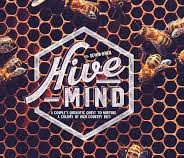 Purveyors of high quality raw bee pollen from California honey bees, collected by family-run beekeepers. “Our product is 100% California-raised, fresh, raw and cold stored directly from the hive until shipped to your door.”
Purveyors of high quality raw bee pollen from California honey bees, collected by family-run beekeepers. “Our product is 100% California-raised, fresh, raw and cold stored directly from the hive until shipped to your door.”
The Joinery
“Solid Wood Furniture for Life…The Joinery designs and handcrafts beautiful hardwood furniture for residential and commercial spaces. Using traditional woodworking techniques and hardwoods from sustainable forest resources, each piece of Joinery’s wood furniture is wholly built and proudly signed by an individual builder in our Portland, Oregon wood shop. All of our handmade furniture for the home is warranted for a lifetime of real-world use.” These pieces are simply beautiful. Sustainably harvested woods are finished with their own linseed/tung/citrus/soy blend (no solvents), then sanded and finished with their own beeswax/citrus wax. Customer service told me “new pieces do have a smell to it, but if people are sensitive, we can hold the pieces here they have purchased until the smell is gone.”
Unfinished Furniture Giant
 “America’s Favorite Custom Unfinished Furniture Expert! NO particle board, simulated wood grain vinyls or other shortcuts are used in crafting our furniture. Our real wood furniture is made out of premium North American cherry, maple and oak. Our construction details include solid wood face frames, solid wood drawers and posts, dovetail drawer joints, metal glides, real wood tops and concealed adjustable hinges on doors. Individually made by Pennsylvania craftsmen. Most of our products are available in four species of wood: PINE, MAPLE , OAK and Cherry . We offer almost endless combinations and options to create thousands of designs in many different styles: SHAKER, MISSION, TRADITIONAL, COLONIAL, CONTEMPORARY and COUNTRY.”
“America’s Favorite Custom Unfinished Furniture Expert! NO particle board, simulated wood grain vinyls or other shortcuts are used in crafting our furniture. Our real wood furniture is made out of premium North American cherry, maple and oak. Our construction details include solid wood face frames, solid wood drawers and posts, dovetail drawer joints, metal glides, real wood tops and concealed adjustable hinges on doors. Individually made by Pennsylvania craftsmen. Most of our products are available in four species of wood: PINE, MAPLE , OAK and Cherry . We offer almost endless combinations and options to create thousands of designs in many different styles: SHAKER, MISSION, TRADITIONAL, COLONIAL, CONTEMPORARY and COUNTRY.”
A & B American Style
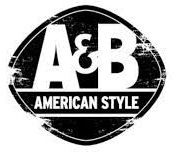 They had me with their headline: “Our mission is to take sugar out of the American diet.” They make all-natural condiments using real, whole ingredients. No sugar. Nothing artificial. At the moment it’s a few pepper sauces. But I hope they do more and go organic.
They had me with their headline: “Our mission is to take sugar out of the American diet.” They make all-natural condiments using real, whole ingredients. No sugar. Nothing artificial. At the moment it’s a few pepper sauces. But I hope they do more and go organic.
Ciberia Soap Supply
Wholesale organic oils and butters that anyone can purchase for soap making.
Phthalates in Fast Food—But That’s Not All…
Researchers at George Washington University have found that people who eat fast food tend to have significantly higher levels of certain phthalates that have known health effects.
The danger isn’t from the food itself, but rather the process by which the food is prepared.
To determine how fast food processing methods affects the presence of certain non-natural chemicals, researchers analyzed data for nearly 9,000 people, that was collected as part of federal nutrition surveys conducted between 2003 and 2010. The surveys included detailed information about the participants’ diets, including what each had eaten in the last 24 hours. They also contained the results of urine samples taken at the same time, which allowed the researchers to measure the levels of three separate chemicals, including the phthalates DEHP and DiNP.
| DEHP | DiNP | ||
| fast food in 24 hours before the test | “much higher” | “Much higher” | than those who had eaten none |
| a sizable amount of fast food | 24% higher | 39% higher | than those who had eaten none |
| a little fast food | 15% higher | 25% higher | than those who had eaten none |
Exposure to phthalates is widespread. The group of chemicals is used in many products, such as food packaging, where it does not appear on the label. Even though the dangers of phthalates are not yet generally accepted, studies show a strong link between DEHP and diabetes, an increase in allergies in children and negative child behavior. The phthalate DiNP has been association with higher blood pressure.The amount of phthalates in fast food seems to be associated with the amount of processing equipment food goes through in quick-serve restaurants. More contact with plastics, conveyor belts, and various machines results in more phthalates in the food.
But fast foods are not the only source of phthalate exposure. Phthalates from food processing are widespread in the food industry. An article in The Guardian reports:
In food, for example, even milk packaged in glass may have passed through plastic tubes on its way from the cow to the bottle, taking DEHP along with it. “Milking machines use a lot of plastic and DEHP is free and very lipophilic (fat soluble), and milk is full of lipids, so it just pulls the DEHP out of the plastic tubing and into the milk,” explains Robin Whyatt, professor of environmental health sciences at the Columbia University Medical Center and the lead author on several landmark phthalate studies. “So my guess would be that milk is a pretty important source of dietary exposure to DEHP.”
In the same article, a study showed imported organic spices to be contaminated with phthalates:
Spices are another surprising source of phthalate exposure. A 2013 study, published in the journal Nature, compared the phthalate levels of two groups, one eating their regular diet but armed with a handout of recommendations for ways to reduce BPA and phthalate exposure in their diet, and the other eating a catered diet consisting solely of local, organic fare, none of which had touched plastic packaging. The study authors were shocked to find that DEHP levels in the local, organic group jumped 2,377% over the course of the experiment. Determined to figure out why, the researchers tested all of the foods consumed by the group and found high levels of the phthalate in dairy products and various organic, imported spices.
This just points out once again the importance of preparing your food at home from fresh ingredients that have not been through industrial processing. Even organic foods packaged in glass have still been run through machines with soft plastic tubing.
See my food blog Toxic Free Kitchen for recipes and more information on preparing food yourself at home.
THE WASHINGTON POST: Researchers have found a ‘striking’ new side effect from eating fast food
NHANES is the [National Health and Nutrition Examination Survey
THE GUARDIAN: Phthalates are everywhere, and the health risks are worrying. How bad are they really?
HealthLabs.com
 Offers lab tests without requiring a doctor’s prescription. You order the tests online or by phone, then take your receipt to one of 2000+ local labs, where your blood is drawn. Get results within 3 business days. Tests include Allergy Testing, Anemia, Anti-Aging / Hormones, Arthritis, Blood Typing, Cancer, Cardiac / Cholesterol, Celiac Disease, Diabetes, Drugs, Fertility, Gastrointestinal, General Health / Wellness, Heavy Metals / Toxins, Hepatitis, Immunity Detection, Kidney (Renal) Function, Liver Function, Military Testing, Pregnancy / Prenatal, Prostate, Sports Testing, STD Testing, Thyroid, andVitamin & Nutritional Testing.
Offers lab tests without requiring a doctor’s prescription. You order the tests online or by phone, then take your receipt to one of 2000+ local labs, where your blood is drawn. Get results within 3 business days. Tests include Allergy Testing, Anemia, Anti-Aging / Hormones, Arthritis, Blood Typing, Cancer, Cardiac / Cholesterol, Celiac Disease, Diabetes, Drugs, Fertility, Gastrointestinal, General Health / Wellness, Heavy Metals / Toxins, Hepatitis, Immunity Detection, Kidney (Renal) Function, Liver Function, Military Testing, Pregnancy / Prenatal, Prostate, Sports Testing, STD Testing, Thyroid, andVitamin & Nutritional Testing.
Are Organic Strawberries Really Organic?
Question from Jackie
www.realfarmacy.com/dirty-little-secret-organic-strawberries-arent-really-organic
I saw the above on Facebook and they showed a picture of Driscoll’s Strawberries with it.
So I wrote to them regarding the above and below is there answer.
You cut through this much better than I do.
What do you think, should we not be buying them???
Thanks
Dear Jackie,
Thank you for taking the time to ask about our growing practices at Driscoll’s. Growing conditions vary from farm to farm and among different growing regions around the world. Depending on these conditions, berry farmers may need to take action to protect their crop by using protective materials. Any pesticide that is used must be in compliance with federal and state laws, and must comply with the pesticide registration policies of the U.S. Environmental Protection Agency (US EPA), and the berries must also be in compliance with legal pesticide tolerances established by the U.S. Food and Drug Administration (US FDA). For additional information on specific pesticides available for use by berry farmers, please refer to the US EPA’s website at www.epa.gov/pesticides/factsheets/index.htm
The type of farming method used to grow the berries (organic or non-organic) will also determine what options the farmer has to protect the crop. An organic farmer can only use pesticides that have been approved for certified organic farming by the United State Department of Agriculture’s (USDA) National Organic Standards Program. A non-organic farmer can choose to use either an approved organic or a non-organic pesticide. Driscoll’s is also one of the largest suppliers of organic berries with a product line that includes strawberries, raspberries, blueberries and blackberries. We are proud to offer consumers a wide assortment of organic and non-organic berries that allows consumers to have a choice when purchasing Driscoll’s berries.
Hopefully this information has offered some insight into our growing practices. Please let me know if you have any additional questions that haven’t been answered.
Best Regards,
Hannah Hughes
Driscoll’s Customer Care Representative
Debra’s Answer
Oh this is a difficult question.
If you didn’t click through and read the article, it was making the point that the SEEDLING is treated with methyl bromide, even for organic strawberries.
First of all methyl bromide degrades in the sun in 10 days. So it’s highly likely that as the plant grows there is no residue of methyl bromide by the time the fruit is formed and you eat it.
Here’s more about fumigation from NPR
California’s strawberry growers don’t want to take any risk that their crop will fail…
So every year, a month before planting time, fumigation machines move slowly across California’s strawberry fields. They inject chemicals into the soil and seal the fumes into the soil with sheets of plastic.
The chemicals kill practically everything in the soil: Insects, weeds, and fungi..
Organic strawberry growers don’t fumigate. They stay a step ahead of diseases by moving from field to field. This also means that they only get to grow strawberries on a particular field once every three to five years, or sometimes even longer. Yet even California’s organic strawberry growers buy their plants from nurseries that do use fumigation. Nobody wants to run the risk of bringing diseased plants into their fields.
This technology has done wonders for strawberry production. But it’s under attack. And it may have to change.
The most powerful fumigant — methyl bromide — is supposed to be phased out gradually because it can eat away at Earth’s ozone layer. It’s still used under a “critical use exemption” that the Environmental Protection Agency has obtained each year.
But I’m not sure it’s a big deal for the end eater of the organic strawberry.
And I just don’t like being sensational about something so small.
We don’t live in a perfect world and we need to make our choices from what is available while at the same time striving to improve the overall problems.
I would say that an organic strawberry from a methyl bromide treated seedling is far better than a conventional strawberry that would have even more toxic pesticides.
So either choose organic, however flawed, or don’t eat strawberries, or grow your own.
I think Driscoll’s response is sufficiently vague as to say nothing. But since they are selling fruit from multiple farms under their brand, they can’t possibly describe the growing conditions for any specific box of strawberries.
That’s why farmer’s markets and gardening are so wonderful!
I just called my local organic nursery and she said organic seedlings sold in nurseries are NEVER treated with methyl bromide or anything else. She said it’s different for commercial seedlings.
My friend Joyce just planted strawberries in cement blocks. The strawberries then hang on the outside of the block instead of in the dirt. I liked this so much I had her come over and help me set up some cement blocks too in my garden, Now I need to go down to the organic nursery and buy some untreated strawberry seedlings.
Have some fun! Grow your own strawberries.

Equipment for Making Kombucha Tea
Question from Linda H
Hi Debra,
I am making kombucha tea for its probiotic and healing properties. It appears that a continuous brewing method promotes a more prolific probiotic colony. Can anyone help me find a “Sun Tea-like” decanter with the following criteria (or suggest the best alternative)?
1. glass container
2. STAINLESS STEEL spigot
3. SILICONE (rather than metal or plastic) seal 4. 1 gallon to 3 gallon capacity
4. NO METAL coming in contact with any beverage (as it could damage/kill scoby)
So far, this is the closest I have come, based on information obtained through live chat at Wayfair.com. They told me it is a stainless steel spigot and glass decanter. I haven’t been able to get through to Wayfair to determine if there is any plastic, but there probably is:
www.wayfair.com/Qualia-Glass-Celebration-3-Gal.-Beverage-Dispenser
The shape of the decanter is not ideal. Cylindrical would be better, with a large mouth. But this could work, if what I was told is true.
I would appreciate any guidance you have to offer. Thank you!
Debra’s Answer
This page has a whole list of kombucha equipment, including large wide mouth glass jars with and without dispensers and a stainless steel replacement spigot. Plus a kombucha starter kit.
I think you’ll find what you need here.
Cultures for Health
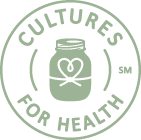 The best way for me to describe this website is “organic do-it-yourself heaven!” They sell all kinds of DIY for making foods like fermented foods, cheesemaking, brewing, sprouting, and more. Their message is You Can Do This yourself at home, and they provide everything from supplies to instructions to cheering you on. I love this site and can’t wait to use it to make these foods myself.
The best way for me to describe this website is “organic do-it-yourself heaven!” They sell all kinds of DIY for making foods like fermented foods, cheesemaking, brewing, sprouting, and more. Their message is You Can Do This yourself at home, and they provide everything from supplies to instructions to cheering you on. I love this site and can’t wait to use it to make these foods myself.
Coconut Secret
 Delicious condiments made from the sap of the coconut tree, using raw methods aging or evaporating at low temperatures. Their Coconut Aminos is one of my favorite condiments—slightly sweet with very low carbs. They also make Coconut Vinegar, Coconut Nectar (sweetener) and coconut crystals (sweetener). Read their website for lots of information about coconut nutrition and harvesting.
Delicious condiments made from the sap of the coconut tree, using raw methods aging or evaporating at low temperatures. Their Coconut Aminos is one of my favorite condiments—slightly sweet with very low carbs. They also make Coconut Vinegar, Coconut Nectar (sweetener) and coconut crystals (sweetener). Read their website for lots of information about coconut nutrition and harvesting.
PACT
 This is what I like. You go to their website and the first thing you see is “Super Soft ORGANIC cotton. No toxic dyes. No toxic pesticides. No sweatshops. No child labor.” That pretty much says it. Casual clothing, underwear, socks and leggings, tank tops, hoodies. Women, men, baby. GOTS certified.
This is what I like. You go to their website and the first thing you see is “Super Soft ORGANIC cotton. No toxic dyes. No toxic pesticides. No sweatshops. No child labor.” That pretty much says it. Casual clothing, underwear, socks and leggings, tank tops, hoodies. Women, men, baby. GOTS certified.
Little Seed Farm
Organic skin care from a solar-powered family farm that raises goats. Liquid and bar soaps are made from the raw milk of their own goats with certified organic olive and coconut oils. Additions are real ingredients, such as vanilla extract derived from fermented vanilla beans, and poppy seeds for “scrub.”
Bamboo Leaf Tea
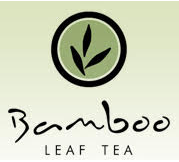 Tea “made from 100% bamboo leaves grown and processed by hand in sunny Florida without the use of any chemicals. We grow our plants with the utmost care and attention to nutritional value and sustainable agriculture.” Bamboo leaf tea has a wonderful sweet, green flavor and is rich in antioxidants, soluble fiber, and silica.
Tea “made from 100% bamboo leaves grown and processed by hand in sunny Florida without the use of any chemicals. We grow our plants with the utmost care and attention to nutritional value and sustainable agriculture.” Bamboo leaf tea has a wonderful sweet, green flavor and is rich in antioxidants, soluble fiber, and silica.
Abigail’s Studio
Abigail makes candles out of beeswax—“A renewable resource,” she says, “As long as there are bees around us.” And so her mission is to save the bees. “How does burning beeswax candles have anything do with restoring bee populations all over the world? Well, if all the people who love burning candles switched to burning beeswax candles the demand for beeswax would dramatically increase. Wax would not be just a byproduct of honey production, but a major source of income for bee keepers. This economic benefit would stimulate the need for bees, which are the only natural source of wax. Beeswax candles are made from a natural renewable and sustainable resource that supports the cultivation of the honey bee.” Makes sense to me.
Bannor Toys
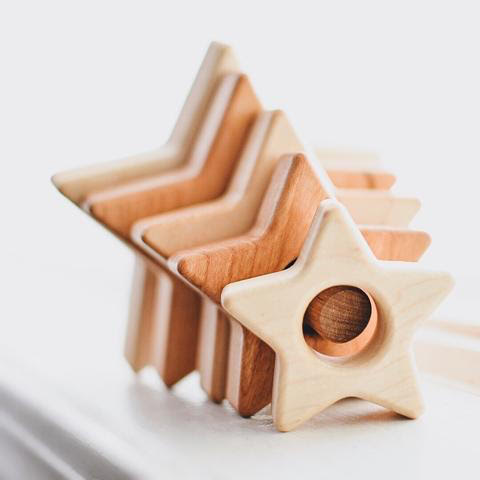 Charming wooden toys, with no toxic anything, handcrafted completely in the USA. “Our wood is natural, we do not stain it. We use Maple, Cherry, and Walnut woods and their natural colors. Our finish is an organic beeswax and flaxseed oil mixture that is all natural and nontoxic so it is the perfect finish for baby’s mouth. The oil brings out the color and the beeswax provides durability. Our glue and paint are organic as well made from a company in the United States. They are 100% safe, lead free, no VOC’s, and non-toxic. Our teethers are left “naked”, there is no finish on them.”
Charming wooden toys, with no toxic anything, handcrafted completely in the USA. “Our wood is natural, we do not stain it. We use Maple, Cherry, and Walnut woods and their natural colors. Our finish is an organic beeswax and flaxseed oil mixture that is all natural and nontoxic so it is the perfect finish for baby’s mouth. The oil brings out the color and the beeswax provides durability. Our glue and paint are organic as well made from a company in the United States. They are 100% safe, lead free, no VOC’s, and non-toxic. Our teethers are left “naked”, there is no finish on them.”
Fisher Blacksmithing
Hand forged garden tools, handcrafted in Montana. “Each tool is built using traditional blacksmithing tools and techniques and the result is an heirloom-quality garden tool that you won’t want to take your hands off of!” They are beautiful too.
Willful
 Extraordinary wooden bowls, plates, cutting boards, utensils and more, with unique, colorful, stylish design details. “All of our wood comes from the USA and is either FSC certified or salvaged locally from naturally felled trees.” They also use a food-safe synthetic silicone rubber.
Extraordinary wooden bowls, plates, cutting boards, utensils and more, with unique, colorful, stylish design details. “All of our wood comes from the USA and is either FSC certified or salvaged locally from naturally felled trees.” They also use a food-safe synthetic silicone rubber.
Flannel and Floral
 Amazing wooden spoons and kitchen ware with designs like I’ve never seen before. Unusual woods sealed with food-safe tung oil and beeswax.
Amazing wooden spoons and kitchen ware with designs like I’ve never seen before. Unusual woods sealed with food-safe tung oil and beeswax.
New Directions Aromatics
The leading international wholesale supplier of natural and organic raw materials and essential oils for making bodycare products. They have every ingredient you could possibly want. But they are oriented to manufacturers, so what you get here is materials, not bottles and recipes and other things you find on consumer-oriented sites. You can order from them with $100 minimum order. And there are minimum amounts as well.
Playmat for kids – toxic?
Question from Martina
Hi Debra,
Thanks for your work – I’ve been reading your newsletter/website for a long time and appreciate the research you do.
I have a young child at home and am trying to find a non-toxic play mat for him where he can play and learn to crawl (so I’d prefer a mat that isn’t slippery). After spending a lot of time researching this, I’ve run across this mat:
Dwinguler My Town Large Kid’s Playmat.
In reading the comments, it seems like the mat is 45% PVC and 55% plasticizer. What are your thoughts on this? Is it safe for a young child to spend a lot of time on?
Debra’s Answer
NO NO NO NO NO. It’s NOT safe.
I was just researching this yesterday.
What “45% PVC and 55% plasticizer” means is it’s 45% vinyl chloride monomer (VCM) which causes cancer, and 55% phthalates, which are endocrine disruptors.
Do not use this mat.
I recommend instead SoftTiles, which I looked into thoroughly and even ordered samples. They are made from EVA, which is much less toxic, and were tested to be free of formaldehyde, BPA, and phthalates.
And here are many EVA floor tiles and play mats online.
SOL Organics
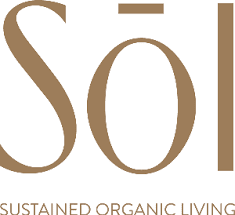 Affordable luxury bed sheets and pillow cases made from GOTS certified organic cotton. “Beautifully ultra soft organic cotton made with fine long staple yarns in a luxurious and comforting sateen weave…Uncompromising luxury is about quality, comfort, honesty, transparency & affordability, clean & safe work conditions, fair trade wages & a fair price for you, are part of the Sol Equation.” Pure white, ivory and blue.
Affordable luxury bed sheets and pillow cases made from GOTS certified organic cotton. “Beautifully ultra soft organic cotton made with fine long staple yarns in a luxurious and comforting sateen weave…Uncompromising luxury is about quality, comfort, honesty, transparency & affordability, clean & safe work conditions, fair trade wages & a fair price for you, are part of the Sol Equation.” Pure white, ivory and blue.
Boll & Branch
 GOTS certified luxury organic cotton sheet sets “made with love, care and total transparency.” Also pillowcases, duvet covers, and shams, with decorative touches including simple trim, hand embroidery, and bands. Available colors are white, beige and light and dark grey, and light and dark blue. Also nath towels, throws, crib sheets and blankets.
GOTS certified luxury organic cotton sheet sets “made with love, care and total transparency.” Also pillowcases, duvet covers, and shams, with decorative touches including simple trim, hand embroidery, and bands. Available colors are white, beige and light and dark grey, and light and dark blue. Also nath towels, throws, crib sheets and blankets.
Wandering Goat Handcrafted Goat Milk Soap
“We are a mother-daughter team producing hand made goat milk soap on our family farm in Union, Maine. We use fresh milk from our own herd of goats and blend it with organic oils, herbs and spices. Our soaps are scented only with pure essential oils and contain absolutely no chemicals or fragrances. The bars are cut by hand and cured five weeks to produce a long lasting soap. We are passionate about our goats and really enjoy creating amazing products with their help and the best that nature has to offer. “ Their scents go beyond floral to include spices and woodsy. Also unscented.
Organic Designs
Organic toddler/preschool nap mats, made by a parent-owned company in New Hampshire. They also make a toddler comforter that doubles as a playmat, and toddler pillows. “We Make Modern, Stylish, Durable yet Super Comfy Organic Children’s Nap Mats from Certified Organic Cotton Fabric and Certified Organic Cotton Batting. Our Organic Nap Mats are Ideal for Toddlers, Daycare, Preschool and Rest Time at Kindergarten. They Can Also Be Used for Vacations and Sleep overs. There are NO Harmful Chemicals or Pesticides in Our Products. We DO NOT use Polyester, Toxic Dyes or Chemical Washes of any kind. Our Organic Nap Mats are Safe, Eco Friendly and Non-Toxic.”
Are You Eating Too Much Mercury?
EWG enrolled in a study 254 women who eat at least two meals of seafood, fish or shellfish every week. They measured the amount of mercury in their hair to assess how much mercury was in their bodies.
They found that almost 30 percent of their participants had too much mercury exposure according to Environmental Protection Agency guidelines for pregnant women.
If you want to eat seafood (I don’t eat it at all myself), EWG will make a personalized seafood list for you that gives you the benefits of eating seafood with the least amount of mercury.
GMO Labeling Coming to a Store Near You
While the federal government has been struggling with requiring the labeling of GMO ingredients on food products, the small state of Vermont has quietly passed a law that requires GMO labeling as of 1 July 2016.
And the result is that company after company—Campbell’s Soup, General Mills, Mars, Kelloggs, and more—have announced they will label GMOs in their products.
Just as manufacturers have removed toxic chemicals from products sold nationwide to comply with California law, so too are companies complying nationally with a Vermont law.
Every change needs to start somewhere. Yay Vermont!
Now let’s get the toxic chemicals on the label.
THE WASHINGTON POST: Tiny Vermont brings food industry to its knees on GMO labels
Study Confirms Benefits of Reducing the Amount of Chemicals you put on your Body
Many personal care products contain chemicals that disrupt the endocrine system, including phthalates, parabens, triclosan and oxybenzone.
A new study done on 100 Latina teens showed significant drops in levels of these chemicals in the body after teens stopped using the products for only three days.
Metabolites of diethyl phthalate, commonly used in fragrances, decreased 27 percent by the end of the trial period. Methyl and propyl parabens, used as preservatives in cosmetics, dropped 44 and 45 percent respectively. Both triclosan, found in antibacterial soaps and some brands of toothpaste, and benzophenone-3 (BP-3), found in some sunscreens under the name oxybenzone, fell 36 percent.
ENN: Study confirms benefits of reducing the amount of chemicals you put on your body
Can I Remove Glyphosate in my Garden?
Question from TA
Hi Debra,
Recently a yard worker sprayed something for weeds on my back patio. It turns out it was Round-up.
Any suggestions for mitigating damage, or is it just “what’s done is done”? It was a couple of weeks ago, so I suspect there’s really nothing to do about it now.
Debra’s Answer
Whenever any type of herbicide or pesticide is sprayed, the first thing to do is look up the “half-life,” which is the time required for half of the compound to dissipate or degrade.
Monsanto says the half-life of glyphosate varies, depending on conditions, which is true, ranging from as short as 2 days up to 141 days, with an average half-life of 32 days.
More interesting is the Environmental Fate of Glyphosate, published by the California Department of Pesticide Regulation. It describes how glyphosate can float through the air and damage plants outside of the zone where it was applied and is easily absorbed by soil.
In the soil environment, glyphosate is “resistant to chemical degradation, is stable to sunlight, is relatively nonleachables, and has a low tendency to runoff.” Yikes. It’s going to stay there a while.
I’ve had success in the past calling pesticide manufacturers and asking for the “cleanup” chemical that breaks down the pesticide. There might be one you can clean up with.
Are there nontoxic products for “No sew”?
Question from Tara
Hi Debra,
Do you know of a safe “no sew” option for fabrics. They make the no-sew fusing strips, but I don’t think they’re particularly non-toxic, though they would be convenient and work well. But perhaps there is a safe one I don’t know about? And there are fabric glues…but same question: are they non-toxic?
Debra’s Answer
I haven’t sewn in years. I’m looking online and see a lot of products for this purpose, but no ingredients.
If anyone uses these products, could you offer some advice?
If anyone wants to submit some specific products, and call the manufacturer to find out what the adhesive and materials are, I can help determine if they are toxic or not.
Treated Furniture from India
Question from Catherine Triplett
Hi Debra,
I first want to thank you for your resource over the years.
About fifteen years ago my parents returned from living in India, and with them came furniture they used when they were there, and they had given me a few items as well.
After my mom passed away my dad told me that a wicker dresser he had in his home (finished basement) had been treated for woodworms while living in India. His housekeeper bought some very strong smelling liquid in a medal can and applied it with a brush and then had to wash it down. My dad said the smell was so strong they had to keep it outside for a few days. I always felt there was a strange smell in his basement, and I am sure that is what it is.
My dad recently passed away and I was given a few old plates from the wall in his home, antique books, and framed artwork (print I think) as well as a very old dresser from the 1800’s.
I am not sure if the toxic dresser housed in his basement could have somehow affected these other pieces as they were probably moved together at some point when they purchased a new home shortly after returning from oversees. I have removed the items I know for a fact were in his flat in Madras, but I am not sure if I should have the other items are safe to display in my home.
I know this sounds complicated, but it is not easy to toss items that were in my parents home as easily as other items, but on the flip side, I have children and I want a safe home.
Debra’s Answer
It’s impossible for me to know what your father’s housekeeper used decades ago in another country, But from your description it sounds like some toxic substance. I don’t know anything about regulations in India, but it’s possible that a toxic substance banned here may be used there. I just don’t have the information.
If it were me, if there were any doubt, I would not have the items in my house if there were any question. I know it’s difficult to make this decision, but better safe than sorry, particularly when there is missing information.
Where Can I Buy “Uncontaminated” Paper Products
Question from Mary
Hi Debra,
Have you figured out a secret to getting paper products- paper towels, tp, kleenex-type stuff- scent-free?
My assistant just got paper towels at Von’s and they smell awful- probably a detergent odor.
I’ll try setting them on my balcony and see if they air out. One sniff, and the odor stays in my nose and I can’t get rid of it.
Some stores are better than others, though I’m not sure any are 100% reliable.
Debra’s Answer
I buy mine at Costco and it’s never a problem. The paper products aren’t anywhere near the detergents and cleaning products.
Readers, suggestions?
Naturepedic
 Certified organic luxury mattresses for adults, made by the same trusted family business that makes certified organic mattresses for babies and kids. Four models allow you to choose certified organic latex, wool, or cotton for padding over an organic encased coil innerspring. These are the same super-comfortable innersprings used in high-end mattresses, with the added benefit of Naturepedic’s certified organic fabrics and fibers, and non-toxic accessories. Quilted certified organic cotton fabrics are used for covers for all models. Not only are all the materials and components individually certified organic, the mattress as a whole is certified organic per the Global Organic Textile Standard (GOTS).
Certified organic luxury mattresses for adults, made by the same trusted family business that makes certified organic mattresses for babies and kids. Four models allow you to choose certified organic latex, wool, or cotton for padding over an organic encased coil innerspring. These are the same super-comfortable innersprings used in high-end mattresses, with the added benefit of Naturepedic’s certified organic fabrics and fibers, and non-toxic accessories. Quilted certified organic cotton fabrics are used for covers for all models. Not only are all the materials and components individually certified organic, the mattress as a whole is certified organic per the Global Organic Textile Standard (GOTS).
How to Get Information About Products
I want to post this story for two reasons.
One is to give you a glimpse of how I get whatever information there is about products and the other is to show how inadequate information is about products.
A woman contacted me today for a consultation regarding choosing a sofa for her teen’s bedroom.
She wrote to me:
Hi Debra,
I’ve noticed both Pottery BarnTeen and Ikea no longer treat the foam in their sofas with flame retardent chemicals.
Pottery Barn Teen also informed me that the fabrics are not treated with any chemicals and the sofas are not treated with any chemicals.
When looking for a more cost effective alternative to custom furniture is this a good option and is it safe?
Thank you! Look forward to your feedback!
I took a look at the Pottery Barn Teen website and didn’t see any information on materials at all.
I offered to call Pottery Barn Teen for her and she accepted. She said, “That would be great if you could call them. They usually don’t have the answers though.” I thought I could get some answers.
She told me the specific sofa she wanted and I called.
I called Customer Service and asked about the fabrics.
First I asked about the fiber. I asked if there were any natural fibers. All were synthetic except for one, a 100% cotton denim.
Then I asked about the finishes on the fabric. She put me on hold to connect me to the furniture department, which has a different database than customer service.
And here’s what I found out.
- All the fabrics are synthetic except the washed denim, which is 100% cotton.
- The woman in the furniture department also said “There are no chemicals on the fabric.”
- BUT the fabric DOES have a Scotchguard finish on it. (Hmmmm. They don’t understand Scothguard IS a finish that emits the toxic chemical formaldehyde.)
- The inside of the cushions are polyurethane foam WITH FIRE RETARDANT. No FR on the fabric, but it is on the foam.
- No info on wood or finishes.
I couldn’t recommend this product. Incomplete information. But what I could find out was enough for me to reject it as toxic.
My client said, “Wow. That’s unbelievable. Company touts that no fire retardants on foam. Scotch guard not good either.”
Exactly.
It took about half an hour to get this information.
I’m not picking on Pottery Barn here. This morning I called West Elm about a finish on a bed frame another reader asked about and I couldn’t find out if the finish was water-based or oil-based. There is a BIG difference between the two in terms of outgassing toxic chemicals and the length of time they continue to outgas.
These companies and others need to give us sufficient information to evaluate the toxicity of their products.
Please note it’s been my experience that I have no problem getting all the information I want from businesses that are making toxic-free products. They know their materials and are proud of them.
Infinity Jars
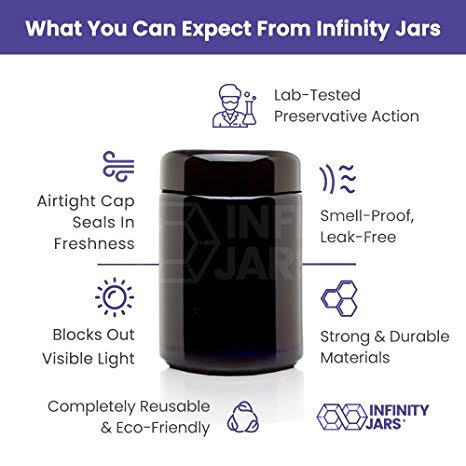 The largest collection of unique styles of ultraviolet glass jars that preserve the freshness of foods, herbs, and other organic materials. “We guarantee you can leverage the incredible power of these jars to maintain the optimum freshness of nearly any foodstuff, dried good, lotion, or essential oil.”
The largest collection of unique styles of ultraviolet glass jars that preserve the freshness of foods, herbs, and other organic materials. “We guarantee you can leverage the incredible power of these jars to maintain the optimum freshness of nearly any foodstuff, dried good, lotion, or essential oil.”
Bubble and Bee
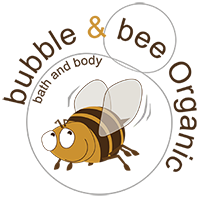 Certified organic personal care products made by a certified organic processor of personal care products. Choose from organic deodorant, facial care, toothpaste, lotions, soaps, lip balms, insect repellent, hair care, scrubs, and more, all available in a delightful assortment of fragrances and flavors using organic and natural essential oils. Their goal goes beyond selling products to informing others about the importance of staying away from the dangerous chemicals “in our world of fancy products with entrancing colors and fragrances.” ITo inform people of the hazards of Chemicals in Personal Care Products, their Chemical of the Day Blog gives accurate and concise information regarding cosmetic chemicals. They believe that organic products shouldn’t be just for those who can afford them, but for everyone who wants to live in a safer, more natural world, so they strive to offer reasonable prices and approachable products. At Bubble and Bee Organic, they say “We Make Organic Fun!”
Certified organic personal care products made by a certified organic processor of personal care products. Choose from organic deodorant, facial care, toothpaste, lotions, soaps, lip balms, insect repellent, hair care, scrubs, and more, all available in a delightful assortment of fragrances and flavors using organic and natural essential oils. Their goal goes beyond selling products to informing others about the importance of staying away from the dangerous chemicals “in our world of fancy products with entrancing colors and fragrances.” ITo inform people of the hazards of Chemicals in Personal Care Products, their Chemical of the Day Blog gives accurate and concise information regarding cosmetic chemicals. They believe that organic products shouldn’t be just for those who can afford them, but for everyone who wants to live in a safer, more natural world, so they strive to offer reasonable prices and approachable products. At Bubble and Bee Organic, they say “We Make Organic Fun!”
Is the Honest Company Actually Dishonest?
This past week Jessica Alba’s Honest Company has been in the news, after the Wall Street Journal tested their laundry detergent and found sodium lauryl sulfate (SLS).
This wouldn’t be so bad (Seventh Generation laundry detergent contains SLS), except for the fact that Alba specifically said that SLS was toxic and her products did not contain the ingredient.
Honest Company says there is no SLS in their product, yet the Wall Street Journal says there is.
People have been quick to assume that the company is being dishonest on one test from one source.
Sounds to me like there needs to be some random sampling done of bottles of detergent off store shelves, by an independent third party testing organization.
I just want to add that I’ve not ever recommended the Honest Company because there are less toxic products than theirs available. I took a new look at their ingredients this morning and their personal care products, for example,, contain many industrialized ingredients. Compare this to other companies that are offering products made from “whole” organic ingredients. And one step further, this morning I just added a new page for companies making body care products where the business is certified as an organic processor of organic ingredients.
Dish Drying Rack at Ikea
Question from TA
Hi Debra,
I just came across this dish drying rack on Ikea’s website. www.ikea.com/us/en/catalog/products/80213173. It comes in this darker color and in a silver color that is listed as nickel plated with clear lacquer. That seems more likely to be potentially toxic (what is the lacquer, etc), so I’m just looking at the darker colored one. The product description says “Steel, galvanized” — but this seems to pertain to the water-catching tray rather than the wire rack.
I clicked over to this related product, and it identifies the black wire part as steel with powder coating and the “shelf” (I’d call it a tray) as galvanized steel. That seems more accurate and appears to be the same as the dish rack. www.ikea.com/us/en/catalog/products/10238148
Would you consider this powder-coated steel rack and galvanized tray to be safe?
On a side note, I also noticed on Ikea’s site that they have been in the process of using “more sustainable” cotton in their products. Not organic, but grown in ways that use less water, less chemical fertilizer, less pesticide. It seems like a good step, especially for those of us who can’t get organic everything. www.ikea.com/ms/en_US/this-is-ikea/people-and-planet/energy-and-resources/index.html#cotton
Debra’s Answer
Powder-coated steel and galvanized steel are both materials I consider to be safe for their intended uses. Neither outgas toxic vapors into the air and they wouldn’t leave toxic residues on dishes. I wouldn’t eat it however, and it’s probably not designed for continuous skin contact.
That’s great that IKEA is moving in the direction of more sustainable cotton. Every step toward reducing toxics helps!
Glyphosate in Sugar Cane Paper?
Question from Mary
Hi Debra,
There is paper made from sugar cane, but isn’t sugar cane one of the crops grown from GMO and so wouldn’t the paper have residues of glyphosphate?
Debra’s Answer
I love sugar cane paper and was just about to buy some.
“GMO sugar can exists but is not widely used.” www.theorganicprepper.ca/sweet-life-how-to-source-non-gmo-sugar-for-your-pantry-11282012
So while I can’t say there is no glyphosate contamination from the environment, it isn’t routinely used on sugar cane crops.
Facts For Fighting Dryer Sheets
Here are some references about the toxic dangers from dryer sheets. Please add a comment with any others you know about.
THE HEALTH WYZE REPORT: The Toxicity of Dryer Sheets, Fabric Softeners, and Laundry Detergents
Are There Heavy Metals in Your Garden?
Heavy metals have been detected at high levels in Portland residential neighborhoods, around two glass factories.
Environmental authorities are recommending that citizens should avoid eating produce grown within a half=mile of the highest mapped metal concentrations until further notice.
Home gardeners nationwide are now asking questions about heavy metals in garden soil.
Read more about heavy metals in garden soil and if you need to test your soil…
CIVIL EATS: What Portland’s Soil Crisis Can Teach Us About Heavy Metals in the Garden
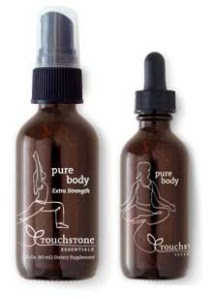 While your soil may be just fine, it also may be contaminated with heavy metals. If so, your, your body may have built up a store of lead and possibly other unknown heavy metals that could be affecting your health.
While your soil may be just fine, it also may be contaminated with heavy metals. If so, your, your body may have built up a store of lead and possibly other unknown heavy metals that could be affecting your health.
Once heavy metals enter your body, it is very difficult for your body to remove them.
That’s why I take PureBody Liquid Zeolite every day. This natural mineral is uniquely suited to remove heavy metals. Tiny bits of negatively-charged zeolite act like little magnets to attract positively-charged particles—which include 99.9% of heavy metals, radiation, and organic chemicals–so they can be removed from your body via your kidneys. It’s simple, effective, and affordable.
Another Reason To Have A Water Filter
We know about chorine and fluoride and heavy metals in tap water, but does your water have 1,2,3 Trichloropropane (1,2,3TCP)?
After all the news about water problems in Flint, Michigan, a reporter decided to actually read the “consumer confidence report” for her drinking water. And she found this footnote in tiny print:

And it’s not just her local community in Fresno, California. 1,2,3-TCP has been found in about a hundred public water systems in California.
But neither the state nor the federal EPA regulates 1,2,3-TCP in drinking water. So public utilities don’t have to test for it, filter it out, or advise their customers if it’s in the water.
Again, my best recommendation is to filter your drinking and bathing water at home, using a filter that removes a broad spectrum of pollutants.
KQED: There’s a Concer-Causing Chemical in My Drinking Water, But California Isn’t Regulating It
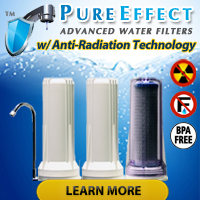 If you are drinking tap water, it’s likely that it contains chlorine or chloramines, fluoride, heavy metals, perhaps radiation, and unknown contaminants of various sorts.
If you are drinking tap water, it’s likely that it contains chlorine or chloramines, fluoride, heavy metals, perhaps radiation, and unknown contaminants of various sorts.
Your best protection is to get a water filter that removes a broad spectrum of known pollutants and unknown contaminants.
The water filter I use in my own home is made by Pure Effect. It’s state of the art filtration removes just about everything that might be in your water that you don’t want to put in your body.
Learn more about Pure Effect water filters here…
Cangshan Knives
Question from Michelle Bishop
Hi Debra,
I just ordered a Cangshan N series (hollow center in handle, solid metal knife) from Amazon. All the reviews are good but they’re from Aug 2015 and forward so it seems these knives are not long-established. They got an NSF certification (I verified on the website) but I wanted your thoughts on the metal and its safety.
Debra’s Answer
The material is simply stainless steel.
I usually don’t recommend stainless steel, because heavy metals can leach from it. However, leaching requires contact time, and there is very little contact time with a knife.
I myself use knives with stainless steel blades and I am not concerned about this.
Lead in Glass
Update February, 2020: Is There Lead in Glassware? read more…
Next Desk
Modern ergonomic standing desks, intentionally designed to eliminate toxic materials. All desks are made with solid bamboo or rubber wood, recycled aluminum, and a durable, nontoxic powder coat. And you get to design it yourself.
Northlore
“Northlore specializes in botanical body care products handmade in small batches from wildcrafted, homegrown, and organic ingredients. The botanical ingredients in our products are carefully selected for their cosmetic and medicinal properties and wildcrafted from the prairie wilderness and our homegrown herb gardens. Our products are made with a nod to the lore of this Northern land, using traditional methods and natural, true scents that recall aspen bluffs, coniferous forests, and meadows filled with sagebrush. These are wildcrafted goods for wild, Northern souls.”
Dragonfly Effect Naturals
The best toothbrush I’ve found! The Sustainabrush is made from 100% sustainably-sources organic mosa bamboo (the kind pandas do not eat). Even the bristles are made of bamboo. I have one and it is just like brushing with a regular toothbrush, but it feels better in your mouth and there are no plastics. Bristles come in colors, or the natural ivory color. They also make a Detoxi Toothpaste that bond with heavy metals and radiation. No fluoride and safe to swallow. Made from Bentonite Clay, Diatomaceous Earth, Baking Soda, Certified Organic Flavor Oil, Non-GMO Xylitol,and Sea Salt.
Henne Organics
Possibly the most luxurious lip gloss I’ve ever seen. Great presentation of ingredients, that are sure to make your lips soft. USDA Certified Organic ingredients. Certified Organic Handler.
Light Stone Organic Soap
Hand-crafted organic soaps, creams, and perfumes made with the best organic or wild-crafted pure essential oils for scent and certified organic oils. Soaps are made with the cold-press method that retains the natural glycerin. “Light Stone was created 21 years ago after a long and unproductive search for pure and natural skin care products. The products that I found either contained synthetic, harmful ingredients, or they were very poor in quality. So I began the on-going process of education, trial and error and long days of study about the process of soap making. Then came the study of the tremendous effects of essential oils (better known as aromatherapy) on the body and the mind. I think that we have combined our years of study, research and experimentation to create truly exceptional products. We have always used only the highest quality ingredients and we have always created our products with great consideration for the body, mind, spirit and the environment.”
Organicville
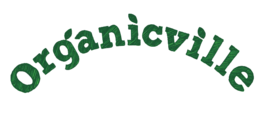 A great selection of condiments made from organic ingredients and natural sweeteners. Ketchup and mustard, chili sauce, BBQ sauce, salad dressings, pizza and pasta sauce, salsas, teriyaki sauce, and a whole collection of international flavor sauces, including organic sriracha, Korean BBQ sauce and other favorite flavors.
A great selection of condiments made from organic ingredients and natural sweeteners. Ketchup and mustard, chili sauce, BBQ sauce, salad dressings, pizza and pasta sauce, salsas, teriyaki sauce, and a whole collection of international flavor sauces, including organic sriracha, Korean BBQ sauce and other favorite flavors.
Brightlites
I found this fun hair color at a local street fair. All natural. Just rib it on strands of hair and wash it out with shampoo and water. It’s bold vivid rockstar colors for fun streaks, not hair color for your whole head. Every color and glitters. Made from Mica, Titanium Dioxide, Coconut Oil, Beeswax, Candelilla Wax, Lavender Essential Oil, Vitamin E.
PieBox
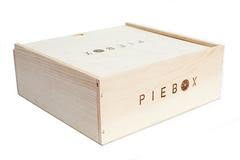 Simple, unfinished wood boxes, one designed to carry pies, one designed to carry cookies, and one designed to carry cupcakes. “Wherever you go, whatever you bake, PieBox will get you there.PieBox designs reusable wooden pastry carriers and accessories. Handcrafted with love in the wonderful USA.” I love these. It a great way to take your organic sweets to potlucks and parties and picnics.
Simple, unfinished wood boxes, one designed to carry pies, one designed to carry cookies, and one designed to carry cupcakes. “Wherever you go, whatever you bake, PieBox will get you there.PieBox designs reusable wooden pastry carriers and accessories. Handcrafted with love in the wonderful USA.” I love these. It a great way to take your organic sweets to potlucks and parties and picnics.
Nikki’s Coconut Butter
 Organic coconut butter with tasty flavors and natural sweeteners.
Organic coconut butter with tasty flavors and natural sweeteners.
Hudson River Contaminated with Uncontrollable Radioactive Flow
“For more than a decade, it has been impossible for operators of the Indian Point nuclear power plant to stop highly radioactive reactor and spent fuel pool coolant from leaking into the groundwater and migrating to the Hudson River.
“And despite assurances from Entergy that this time will be different, there is no indication that the company has developed the ability to prevent the latest uncontrolled leaks from following the underground waterway into the Hudson. And because the river is a tidal estuary flowing as much as 20 miles above and below the nuclear site, radioactive contaminants may be sucked into the drinking water systems of several river towns.”
HUFFINGTON POST: Indian Point Contaminates the Hudson River With Uncontrollable Radioactive Flow
This is just another example of unknown water contaminants that might be in your drinking water. Contamination occurs long before it is detected.
 If you are drinking tap water, it’s likely that it contains chlorine or chloramines, fluoride, heavy metals, perhaps radiation, and unknown contaminants of various sorts.
If you are drinking tap water, it’s likely that it contains chlorine or chloramines, fluoride, heavy metals, perhaps radiation, and unknown contaminants of various sorts.
Your best protection is to get a water filter that removes a broad spectrum of known pollutants and unknown contaminants.
The water filter I use in my own home is made by Pure Effect. It’s state of the art filtration removes just about everything that might be in your water that you don’t want to put in your body.
Learn more about Pure Effect water filters here…
Glyphosate Detox: How to Remove Roundup From Your Body
More and more in the past few weeks stories are coming out about glyphosate contamination in one product after another.
In October 2015, I wrote a post on my Toxic Free Body blog called “Glyphosate Detox: How to Remove Roundup From Your Body.” Since that blog is no longer available, I want to repost portions of it here, in light of recent events.
We can’t avoid glyphosate by only avoiding GMO’s—it’s now found in organic grains and who knows where else. We only know it’s in organic grains because grains have been tested. Glyphosate is applied by aerial spraying. It can drift to organic produce just as easily as organic grains. It may be more widespread than we know.
The way to survive all this exposure to toxic chemicals is to assist your body’s detox system, which is very overloaded. The two approaches are to 1) support your detox organs (liver/intesties and kidneys in particular, or to do things that remove toxics directly, such as taking liquid zeolite or spend time in a sauna.
The difficulty in choosing a detox for a particular substance is that you need to pick a detox that matches the characteristics the the toxic substance you are wanting to remove.
I searched on “glyphosate detox” and found a number of posts that were just way off track.
So I thought I would give my viewpoint on this.
First, glyphosate is accumulating in our bodies.
A Friends of the Earth Europe study done in 2013 tested urine samples from people in 18 countries for glyphosate. The results showed that traces of the chemical were found in samples from all countries, with 44 per cent of samples found to contain glyphosate on average.
Then a 2014 study showed glyphosate levels in mother’s breast milk 700 times higher than the maximum contaminant level (MCL) set for glyphosate by EPA.
However, the safe limit set by EPA was based on biotech theory that glyphosate would not bio-accumulate in human’s tissue. Yet clearly it does when actually measured.
Friends of the Earth Europe says, “Glyphosate (N-(phosphonomethyl)glycine) is a systemic, broad-spectrum herbicide, that works by blocking an enzyme used to make protein in plants. This means it is toxic to any plant that has not been genetically modified to resist it.”
Hmmm. What about humans who have not been genetically modified to resist it?
The only method of detox I know of that will remove herbicides is sauna. Your body will sweat it out.
I’ve also seen some evidence that probiotics will help restore your gut microbiome that gets destroyed by glyphosate. That makes sense to me.
You can get a glyphosate urine test at The Detox Project.
100% of German Beers Tested Contaminated with Glyphosate
Tests done by the Munich Environmental Institute (Umweltinstitut München) found glyphosate in ALL of the 14 beers tested.
The German Brewers’ Association admitted that low residues of the probable human carcinogen glyphosate could not be prevented, because “the herbicide is now found virtually everywhere after decades of use in agriculture.”
SUSTAINABLE PULSE: German Beer Industry in Shock over Glyphosate Contamination
Barefoot Shoes
Question from Deanna McFarlain
Hi Debra,
Like many of your readers I have been searching for non toxic shoes for years. Finding a shoe that is both healthy for our feet and non toxic is quite a challenge.
Recently I have been on the hunt for barefoot shoes & found a few promising brands. I plan on purchasing Camper barefoot shoes for school but am now looking for a summer sandal for my family.
One option is xeroshoes.com. I like the concept but want to be sure they are safe for my famiy. I emailed them about material of their soles xeroshoes.com/feeltrue. They replied that their “exclusive FeelTrue rubber is a synthetic rubber called SBR (styrene-butadiene rubber). We chose this rubber due to it’s durability, flexibility, and that there are no reported allergies or side-effects, which can not be said for the latex in natural rubber. We have thousands of customers who have worn our shoes for a number of years with no issues with this material.” I worry the shoe would be a problem with bare feet even if we kept them out of the sun.
Another is www.vivobarefoot.com/us. I called the company based out of London inquiring of the exact materials used in a few of their shoes in their children’s line. They said they would send the question over to the right department and email me but never did.
I was excited as it is affordable & outsole material is fine but concerned with the inside as my son will be wearing them without socks. I found materials listed here in this description www.6pm.com/vivobarefoot-kids-ultra-toddler-little-kid-black-white. I am concerned with the “Antibacterial microfiber lining”. And I looked up Dri-lex™ & found this info: www.faytex.com/technology.html looked www.dupont.com/products-and-services/fabrics-fibers-nonwovens/fibers/brands/dupont-sorona.html.
I’m sure many like-minded parents agree that its so hard to find a healthy barefoot or minimalist shoe that is also non toxic & isn’t close to 100$ like softstar shoes so I was hoping these would work. What do you think?
Thank you for your time! For many years your book and website have been such an inspiration & helpful resource for my family 🙂
Debra’s Answer
First I want to say that I have two pairs of Camper shoes and love them both. I bought them almost ten years ago. I can walk in them all day and still have happy feet.
Regarding Xero Shoes, SBR is a synthetic rubber. It’s one of the most toxic plastics to be manufactured and it’s also toxic to health (search on health effect SBR) and you get toxicity of rubber tires.
Regarding Vivo, I would be concerned about the antimicrobial lining.
The safest shoe I’ve seen is Po-Zu Shoes, which I have recently added to Debra’s List. Here’s what I wrote about them.
These amazing shoes are made from organic cotton, wool, coconut husks, natural latex, cork, and leather. “All our materials come from naturally renewable sources and are responsibly harvested. They contain no pesticides, bleaches or toxic dyes and are locally sourced wherever possible. We use organic cotton in our shoes and all our leather is chromium-free. You can read about our materials in more detail here.” Every shoe has a complete materials description (click on the “materials” tab on each product page). Great styles! This company is based in the UK. I don’t usually recommend websites out of the country, but I’ve never seen anything like these shoes! You can even have them custom-make shoes to your own design specifications.
They don’t make children’s shoes, but you might contact them and see what they can do for you.
Washing a Down Comforter
Question from Marleen
Hi Debra,
I read one of your books years ago and have tried to follow some of your suggestions.
I have an old goose down comforter. I would like to clean it thoroughly, including microorganisms that may be in it.
Dry cleaning was suggested to me. What is a natural way to clean it? It is a queen size.
Thanks.
Debra’s Answer
I used to have a down comforter and I just put it in my own washing machine and dryer.
How to Get Burnt Food Off the Stove Top, Unclog Drains, and Clean the Sink
Question Bonnie
Hi Debra,
What is the best way to get burnt on food off the stove top. In the past I used baking soda water paste and it removed some enamel in spots.
Also the bathroom sink is clogged with dove soap. A maintenance person said a long time back it clogs drains and use hot water behind it. I have found the soap does clog and I have had to use the gel drano only to unclog it. Tried baking soda vinegar then hot water after 20 minutes and it did not work.
A farmers almanac site said for grease to use baking soda, salt and possibly said leave overnight then rinse.
Also, the only thing to clean noticable residue dirt from the sink and bathtub I found is bon ami and the ajax types with bleach do a better job at stain removal.
I do not want to use these products. Bon ami is more natural but I inhale the powder that floats when I use it. Thank you.
Debra’s Answer
I just use Bon Ami for everything in the kitchen and bathroom. You might try hydrogen peroxide on the stains.
 To unclog the sink, I pour baking soda and then vinegar down the drain and it fizzes. I also have a little handheld plunger that I just love. After I put the baking soda and vinegar down the sink I just use this little plunger to make everything move around and the drain opens right up. This plunger was specifically designed for sinks. I have it right under my kitchen sink. I don’t have problems with the bathroom sink clogging, but if I did, I’d put another one right under the bathroom sink.
To unclog the sink, I pour baking soda and then vinegar down the drain and it fizzes. I also have a little handheld plunger that I just love. After I put the baking soda and vinegar down the sink I just use this little plunger to make everything move around and the drain opens right up. This plunger was specifically designed for sinks. I have it right under my kitchen sink. I don’t have problems with the bathroom sink clogging, but if I did, I’d put another one right under the bathroom sink.
NOTE: The black part is made from PVC, but I’ve not noticed any odor. It’s also the least toxic solution for opening drains, when compared to the toxic dangers of drain cleaners.
Wool and Cashmere Sweaters
Question from Stacey
Hi Debra,
I’ve seen some merino wool and cashmere sweaters that I would like to purchase. However, I wonder if these sweaters are safe, or do I have to worry about any kind of “finish” or treatment on such “natural” fiber sweaters?
Debra’s Answer
I’ve purchased many cashmere sweaters and I’ve never detected anything toxic. I would continue to wear them but it’s way too warm here in Florida, so they are packed away in case I go somewhere cold. I love cashmere. I haven’t purchased a new cashmere sweater in more than ten years.
Some things to note. Seventy percent of cashmere comes from China, the rest comes from Outer Mongolia, Iran and Afghanistan. The only processing is “scouring” (washing) the wool to remove the dirt, grease, and other impurities. Cashmere Fiber Production: The process from the goat to top quality yarns.
Cashmere and Camel Hair Manufacturing Institute website has some interesting information for consumers about choosing cashmere.
Merino wool comes from the Merino sheep. Their wool is considered to be some of the finest and softest wool of any sheep. Here’s a website that shows Fibre to Fashion: The Know How of creating apparel from Merino wool.
Organic Fast Food Restaurant to Open in Miami
Inspired by his son’s battle with Type 1 diabetes, NBA All-Star Ray Allen and his wife, Shannon, a cooking show host, are opening Grown, an organic fast food restaurant in Miami in March.
If you want to visit: 8211 S. Dixie Hwy, Miami, Florida
MIAMI HERALD: Ray Allen opening organic fast-food eatery
Our Santa Fe Salad with Organic greens, avocado, fresh corn and tomato salsa, grilled shrimp, and plantain strips makes the perfect lunch!
Is My Flooring Toxic?
Question from Michelle
Hi Debra,
I have purchased, but not installed, morning star bamboo flooring.
Now I’m reading that’s it’s possibly toxic, but cannot find any I formation on the product online. I was just wondering if you could direct me where to go to seek the info I need? I would like to know the formaldehyde levels in the product, what it was treated with and is there a safer product out there.
Thank you.
Debra’s Answer
First, you can usually get information on any product online. I jus searched on “Morning Star Bamboo Flooring” and immediately found their very informative website at www.morningstarbamboo.com.
This flooring is NOT possibly toxic. What you’ve been reading about regarding Lumber Liquidators is that their LAMINATE flooring releases higher levels of formaldehyde than previously thought. This is because laminate flooring is made from layers of wood glued together with a resin that releases formaldehyde.
Morning Star Bamboo Flooring is solid wood flooring. There is NO FORMALDEHYDE used in making it. You have nothing to be concerned about here.
The website says it has a baked-on aluminum oxide finish. This does not outgas into the air. It’s unknown whether skin absorption of aluminum is possible walking on the floor in bare feet. My experience with skin absorption is there usually needs to be some contact time, just walking across the floor with feet on the floor for a second at a time would probably not be enough. Right now I’m sitting at my desk with my feet on the floor for long periods. If you are concerned about this, you can wear socks, slippers, or shoes, or put small natural fiber carpets in areas where you might have longer contact time. Or if you have children playing on the floor, use a natural fiber area rug for them.
You flooring is fine. Go ahead and install it.
Skin Absorption of Aluminum from Aluminum Oxide Finish on Flooring?
Question from Sarah Padron
Hi Debra,
Hello, I was wondering if you know about the prefiniahed hardwood floors that have been treated with aluminum oxide. Can children, and adults, absorb the tixins through the skin? And would it be problematic?
Thanks.
Debra’s Answer
Here’s a relevant response from consultant Mary Cordaro, who is very knowledgeable in these matters.
It’s from Green Home Guides.
Aluminum oxide finishes can be fast-curing and healthy from a chemical outgassing standpoint, depending on a few variables. Unlike some water-based polyurethane finishes, which often contain chemicals called glycols that may “outgas” for several months (and may not be easily detected by odors), UV-cured aluminum oxide finishes, which are modified urethane finishes, are often well-tolerated even by chemically sensitive individuals. This is particularly true if the finish is baked-on and UV-cured, which is usually the case with prefinished wood floors.
But here’s where things get more complicated, unfortunately. Besides low chemical toxicity, there are some additional factors to consider regarding an aluminum oxide finish. First, from a healthy house standpoint, very little if anything is known about possible health effects from the aluminum content in aluminum oxide floor finishes.
In the past few years, there has been a growing, heightened awareness of the potential toxicity from nano-sized heavy metals in products that touch the skin. Although this concern has been directed primarily at personal products, it is worth considering for any product that touches the skin. One MD I know of, whose patients include chemically sensitive people, has been strongly advising against aluminum oxide finishes, due to the possibility of aluminum oxide absorption through the skin on bare feet.
Prompted by these concerns, a client with an autistic child requested that I look into one particular flooring product, called Bellawood, a brand that is well tolerated by many chemically sensitive people. Bellawood is a solid hardwood flooring product, prefinished with UV-cured, baked-on aluminum oxide urethane. Bellawood is coated multiple times and comes with a 50-year warranty on the finish. I spoke with a technical expert who works for the industrial finish manufacturer that makes the Bellawood finish. He reported to me that the aluminum oxide particles in the finish are much larger than nano-sized. In fact, we both agreed that theoretically, the aluminum oxide particles are probably much too large to penetrate bare skin.
I have not researched other aluminum oxide finishes in terms of the particle size, but it’s possible, given the similar characteristics of aluminum oxide finishes in general, that this may be true for other brands as well. However, as far as I know, there really is no real conclusive data on this issue, regarding possible toxicity from skin contact. So even if you have an aluminum oxide finish, if you want to be on the extra safe side, just wear socks and slippers indoors.
Affordable Nontoxic Carpet
Question from Richard
Hi Debra,
Thank’s for keeping up the great website.
I have a question about carpet. I’m planning on renting some space in a commercial building. The custom is to use carpeting in the hallways and office spaces. It’s understood that the area of the building under consideration needs and will get new carpet but myself and one other practitioner see people with MCS and suffer from it ourselves. Do you have some any rug manufacturers to recommend?
There is something called The Carpet and Rug Institute which has a certification program called CRI Green Label Plus that identifies low VOC products. Do you know much about the value of that certification? I am aware some programs don’t really raise the bar very high.
I know we could go to Green Building Supply for wool but we really can’t go quite that high end for this office rental situation.
Any suggestions you may have for carpeting that isn’t too pricey would be appreciated.
Debra’s Answer
You’re welcome!
I can’t recommend any of the carpets on the Carpet and Rug Institute list. I haven’t researched them recently or individually, but last time I looked there were none I wanted to look at in more detail. The problem with “low-emitting” standards is they are not “no-emitting.” My floors don’t emit anything.
I had your same situation many years ago where the only office available to rent in the small village where I lived had a very smelly carpet that I was not allowed to remove.
My solution was to use AFM Carpet Seal. IT COMPLETELY BLOCKED THE FUMES TO UNDETECTABLE. At least to my nose.
I worked in that office for a month every weekday, with no reactions. It was a life saver to have Carpet Seal.
That said, I would still get the least toxic carpet you can afford. I haven’t had carpets in my home for more than 30 years, but if I had no choice but to live or work somewhere with carpet, I would immediately order Carpet Seal.
Lumber Liquidators
On Monday, the Centers for Disease Control (CDC) announced that certain types of laminate flooring made by Lumber Liquidators have a greater risk of causing cancer or other health problems than previously thought.
I would just like to add two things.
One is that this is not all flooring made by Lumber Liquidators, only the laminate flooring.
And the other is this formaldehyde danger is not limited to Lumber Liquidator’s laminate flooring. It applies to ALL laminate flooring. I’ve been warning about this ever since laminate flooring first came out.
Please do not buy laminate flooring. Instead purchase solid wood refinished flooring, or unfinished solid wood flooring and apply your own least toxic finish.
CDC: Statement regarding Formaldehyde in Laminate Flooring Report
USA TODAY: Elevated cancer risk in Lumber Liquidators laminate flooring
NPR: CDC Says It Underestimated Cancer Risk From Lumber Liquidators Flooring
If you have purchased flooring from Lumber Liquidators, they are offering indoor air quality testing at no cost to qualifying customers. To see if you qualify, visit www.lumberliquidators.com/ll/testkit.
Hairprint
A hair color that restores gray hair to it’s natural color, rather than stripping color and then applying an artificial coal-tar dye. It’s odor-free, hypoallergenic, and you can eat it too! All ingredients are disclosed and explained. Their patented formula takes natural ingredients and creates eumelanin, the pigment that colors all brown and black hair. NOTE: You cannot choose your color. Your hair will take the eumelanin and each strond will be it’s own natural shade. This treatment also strengthens the hair and adds luster and shine. There is a special formula to be used to prevent hair from turning grey as well.
NutriGold
 A full line of dietary supplements that are organic, non-GMO, whole-food, food-sourced, fair-trade, sustainable, soy-free, gluten-free, kosher, and vegan, manufacturers to industry-defining quality standard without the premium price tag. Closest distance from source to shelf—sourced, processed, and manufacturers in the USA.
A full line of dietary supplements that are organic, non-GMO, whole-food, food-sourced, fair-trade, sustainable, soy-free, gluten-free, kosher, and vegan, manufacturers to industry-defining quality standard without the premium price tag. Closest distance from source to shelf—sourced, processed, and manufacturers in the USA.
Organic Pure Foods
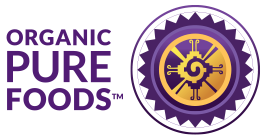 Premium raw organic chia seeds and oils,”carefully selected for purity and high nutritional content. We painstakingly evaluate and test hundreds of thousands of pounds of chia seeds, choosing only the best. We directly participate in the field to-table process of growing and bringing this premium seed to your family. All our chia seeds are carefully selected to insure the highest omega 3, protein, and fiber content. You will be able to taste and feel the difference.”
Premium raw organic chia seeds and oils,”carefully selected for purity and high nutritional content. We painstakingly evaluate and test hundreds of thousands of pounds of chia seeds, choosing only the best. We directly participate in the field to-table process of growing and bringing this premium seed to your family. All our chia seeds are carefully selected to insure the highest omega 3, protein, and fiber content. You will be able to taste and feel the difference.”
Pines Wheatgrass
 Highest quality wheatgrass grown with exceptional methods. Grown in PINES rich glacial soil on certified organic family farms that receive plenty of natural rainfall so that irrigation is not necessary. Computerized facilities produce green superfood powders using ambient temperatures to maintain the peak nutrition of fresh wheatgrass. All their green superfoods are packaged in dark glass bottles and special metal caps with oxygen removed to prevent loss of nutrition and color that occurs with other packaging. Owned by the same family since 1976.
Highest quality wheatgrass grown with exceptional methods. Grown in PINES rich glacial soil on certified organic family farms that receive plenty of natural rainfall so that irrigation is not necessary. Computerized facilities produce green superfood powders using ambient temperatures to maintain the peak nutrition of fresh wheatgrass. All their green superfoods are packaged in dark glass bottles and special metal caps with oxygen removed to prevent loss of nutrition and color that occurs with other packaging. Owned by the same family since 1976.
Närä Natural Tooth Cleansing Powder
This tooth powder was highly recommended to me by a reader I’ve known for many years. It’s basically salt and baking soda plus the dental benefits of xylitol, combined with herbs, spices, and citrus fruits.
Is Air Pollution Making You Fat?
A new study—appearing in the March issue of the Journal of the Federation of American Societies for Experimental Biology (FASEB) —found laboratory rats who breathed Beijing’s highly polluted air gained weight and experienced cardio-respiratory and metabolic dysfunctions after only three to eight weeks of exposure.
Compared to those exposed to filtered air, pregnant rats exposed to unfiltered Beijing air were significantly heavier at the end of pregnancy. At 8 wk old, the offspring prenatally and postnatally exposed to unfiltered air were significantly heavier than those exposed to filtered air. In both rat dams and their offspring, after continuous exposure to unfiltered air we observed pronounced histologic evidence for both perivascular and peribronchial inflammation in the lungs, increased tissue and systemic oxidative stress, dyslipidemia, and an enhanced proinflammatory status of epididymal fat.
The conclusion from the study: Chronic exposure to air pollution particles increases the risk of obesity and metabolic syndrome.
Now this was a study done on rats, however, I believe it holds true for humans as well. Many chemicals have already been associated with obesity. I haven’t yet checked, but it may be that many of them are found in air pollution.
Luggage
Question from Sally S
Hi Debra,
I have been all over the internet and dug through archives, but am having little results looking for luggage. It seems that even those touting ʻeco friendlyʻ are really a typical derailment of fact.
If it is made of recycled materials, I question what was in the previous encarnation. Nylon has been treated with chemicals. Handles made of ʻtprʻ? Some claim ʻecoʻ and yet state pvc dividers.
They stink! They cause hands to react, rashes and blisters, my husband has to wear gloves when traveling.
I need to replace my old bags and am in need of something for mobility, in other words I am no longer able to perform pack mule duties. I have seen abs, polycarbonate, polyester, nylon, and many with ʻCA Prop 65 warningʻ. (The top rated Travel Pro)
The leather bags come from China and everything is suspect. Buying used is just as risky, pesticides and cleaners or such.
Any guidance or suggestions will be greatly appreciated. Thank you.
Debra’s Answer
I totally understand, and this is not an easy question to answer.
Some years ago I was traveling a lot and my old suitcases were in tatters. I wanted to get the least toxic luggage I could find and I did.
It was made by a company called Sand & Storm . I just looked them up and they are still in business. They are very well made of cotton and leather (no odor) and are extremely durable. Not inexpensive, but I had some extra money at the time and decided to make an investment. I’m sure they will last for the rest of my life. They have already lasted 10 years and are like new.
They used to make luxury safari tents. Now they make safari-grade bags. In Kenya. From Tanzanian 18oz all-cotton canvas (very soft and lined with even softer cotton), hand-selected leather hides, and solid brass fittings. I have two duffle bags and an overnight bag. All with strong comfortable straps so I can toss them over my shoulder.
I found mine at Bloomingdale’s in New York and fell in love instantly. If you want this luggage, I think you’ll need to contact them in Kenya and see if they can ship it to you.
So now the best I can do is to recommend cotton duffle bags, such as those sold at Port Canvas.
Try searching on “cotton luggage,” “linen luggage, and “hemp luggage.”. There were a lot of results, such as this one from Pottery Barn.
 Trouble is that these companies are not dedicated to being nontoxic, so I don’t know what the finishes are, etc. Sometimes they are lined with nylon.
Trouble is that these companies are not dedicated to being nontoxic, so I don’t know what the finishes are, etc. Sometimes they are lined with nylon.
Now about the wheels, there ARE some cotton duffle bags with wheels such as this one at Orvis. Again, I don’t know how this might be contaminated, but the materials are pretty good. At least better than conventional luggage.
Bamboo Charcoal “Air Fresheners”
Question from Elizabeth
Hi Debra,
I have been reading a lot about Bamboo Charcoal “air fresheners” lately.
The products supposedly remove odors, moisture, viruses, VOCs,etc.
A 200 gram bag is supposed to be good for a 90 square foot area.
I am interested however I am not clear as to how a linen bag of charcoal is supposed to clean the air in a room just by placed in the room. I don’t see how the product would have the appropriate air circulation to meet it’s claims.
Do you have any experience or information on these products?
Debra’s Answer
I don’t have any experience with these products, however, there is just no way mechanically that a bag of any kind of charcoal can remove pollutants in the air anywhere close to what an air purifier can remove.
For real all filtration, see the Air Purifier page of Debra’s List.
Mouth Guard Material
Question from Janelle
Hi Debra,
My husband and I have recently become more concerned about all the plastic in our environment.
We are particularly concerned about the night guard that his dentist has him wear because he grinds his teeth at night. I’m wondering about the safety of the night guard.
I tried calling the office that they made it in, but they haven’t done any tests for leaching, he just assured me it was safe.
I did some research and it’s made from: Powder Component: Modified Ethyl Methacrylate Polymer Liquid Component: Modified Ethyl Methacrylate Monomer. Unfortunately, I haven’t been able to find information on if these substances are safe when mixed into plastic.
The company that makes the mouth guards is Astron and the material is called clearsplint.
Any help you can give me with this is much appreciated.
Thank you.
Debra’s Answer
It sounds to me like you mix the powder and liquid together to make the ClearSplint material. It isn’t added to plastic, it is the plastic.
The MSDS lists both of these materials as hazardous as well as ClearSplint itself.
What I don’t know is if they become less toxic when combined, or more toxic. Not enough data is available for this.
Regardless, it seems that ALL plastics leach to one degree or another. I wouldn’t let my child use this without having more evidence of safety than someone on the phone saying it’s safe.
Saffiano Leather Handbag
Question from Stacey
Hi Debra,
I am searching for a new leather handbag and wonder about the different leathers.
First, I wonder if a “quilted” leather bag contains a synthetic batting to make the quilted appearance.
I also discovered a type of leather called “saffiano leather” which is a textured leather with some sort of coating (not sure, but from what I have read, it is most often a wax). This saffiano leather is supposedly more durable, but I wonder if it is as safe to use as a regular leather.
Thanks so much!
Debra’s Answer
I think it’s highly likely that any padding used in an off-the-shelf handbag would be synthetic.
About the Saffiano leather…First, it’s leather, which has many toxic chemicals to begin with, and second a wax is added, probably paraffin. That’s just more petrochemicals.
Look on the Bags page of Debra’s List. I’ve been adding websites that use less toxic materials. Perhaps you can find something there.
The Sweet Farm
 Naturally fermented sauerkrauts made with nothing but organic (local when possible) vegetables, sea salt, and spices. “Our traditional fermentation methods produce fresh, crisp and tangy krauts that pair well with just about any meal. In addition to their great taste, our krauts are full of probiotics, beneficial bacteria that help nourish your digestive system.” If you don’t want to make your own, try these.
Naturally fermented sauerkrauts made with nothing but organic (local when possible) vegetables, sea salt, and spices. “Our traditional fermentation methods produce fresh, crisp and tangy krauts that pair well with just about any meal. In addition to their great taste, our krauts are full of probiotics, beneficial bacteria that help nourish your digestive system.” If you don’t want to make your own, try these.
Super Edibles
 “Foods that have the best nutritional and aesthetic qualities:” nuts and seeds, dried fruits, herbs and spices, teas, cacao and coconut, powdered foods, and extracts and oils. “Superedibles sources the best quality foods from the most trustworthy suppliers we can find. We always choose quality over price. Our aim is to always provide products that are Raw, Organic and Kosher and have superior nutritional qualities. The products we provide are meant to facilitate your nutrition and wellness. We source the finest products for the best possible value. ”
“Foods that have the best nutritional and aesthetic qualities:” nuts and seeds, dried fruits, herbs and spices, teas, cacao and coconut, powdered foods, and extracts and oils. “Superedibles sources the best quality foods from the most trustworthy suppliers we can find. We always choose quality over price. Our aim is to always provide products that are Raw, Organic and Kosher and have superior nutritional qualities. The products we provide are meant to facilitate your nutrition and wellness. We source the finest products for the best possible value. ”
Berry Good Organics
Kits to make organic elderberry syrup, an all-natural traditional remedy proven to work. “Contrary to other elderberry kits, mine are infused with all natural, organic ingredients that enhance its function. With added bonuses such as Organic ginger root, Organic clove, Organic goji berries, Organic turmeric powder, Organic cinnamon, and Organic star anis, mixed with the infamous dried elderberries, you will enjoy a flu free season. My kits are easy to prepare, and are effective for children and adults of all ages. I am proud to offer an organic and powerful alternative medicine that should be a staple in every household.”
Livliga Dinnerware
 Elegant portion control dinnerware made of sustainable and durable porcelain. Attractive designs make it easy to put controlled portions on a plate and have it look appealing. Dinnerware is “lead free” and uses only FDA approved, food-safe inks for the decoration.
Elegant portion control dinnerware made of sustainable and durable porcelain. Attractive designs make it easy to put controlled portions on a plate and have it look appealing. Dinnerware is “lead free” and uses only FDA approved, food-safe inks for the decoration.
Wild Mountain Paleo Market
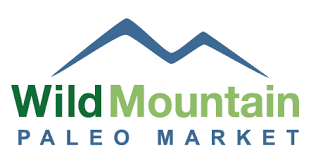 A full selection of organic foods chosen around Paleo guidelines. So if you’re on a Paleo diet, you can eat everything on this site. Includes baked goods and baking supplies, granola, chocolate, coconut products, condiments, crackers and chips, fermented foods, dips and spreads, herbs and spices, jerky and dried meat, nuts and seeds, ut butters, oils and fats, pasta and sauce, salad dressing, seafood, soup and stock sprouted foods, sweet snacks, sweeteners, supplements and much more. You’ll find many foods here that are not on your natural food store shelves, and ideas for what you can eat on a paleo diet. Read ingredients carefully as some items do contain natural sweeteners. Also Paleo body care.
A full selection of organic foods chosen around Paleo guidelines. So if you’re on a Paleo diet, you can eat everything on this site. Includes baked goods and baking supplies, granola, chocolate, coconut products, condiments, crackers and chips, fermented foods, dips and spreads, herbs and spices, jerky and dried meat, nuts and seeds, ut butters, oils and fats, pasta and sauce, salad dressing, seafood, soup and stock sprouted foods, sweet snacks, sweeteners, supplements and much more. You’ll find many foods here that are not on your natural food store shelves, and ideas for what you can eat on a paleo diet. Read ingredients carefully as some items do contain natural sweeteners. Also Paleo body care.
Least toxic treatment to remove mycotoxins?
Question from Jennifer
Hi Debra,
I appreciate your work in the world so very much! I seem to remember a while back you addressed the benefits of fogging to remove mycotoxins. It was about the benefits of fogging with a formaldehyde gas mixture that did not leave any residue in the space treated.
I can’t seem to find any info on that at this point. Can you direct me to where I might find out more about this and/or share your thoughts about this technique for reclaiming spaces affected by these invisible toxins?
Debra’s Answer
I don’t recall addressing this and mold isn’t my field of expertise.
Readers, any information on this?
Here is a very simple and clear article about mycotoxins, what they are, how to remove them from indoor air.
What I can tell you about formaldehyde is that it DOES evaporate completely in a very short period of time. I remember in grade school a teacher left an open bottle of formaldehyde sitting on a counter and the whole bottle evaporated within an hour. The only reason formaldehyde is a long-term problem in particleboard and permanent press finishes is that it is bonded to resins to make it time release. But free formaldehyde evaporates very quickly.
Lunchbox Containers
Question from TM
Hi Debra,
I was using a stainless steel lunchbox containers for my young kid, however, I read stainless steel may leach, although I’m not sure if only when heated?
Glass is not an option right now as he is too young and can break.
Would you go with these made of polypropylene #5 plastic instead of stainless steel? Thanks so much!!
Debra’s Answer
All lunchbox container materials leach something to some degree, so the question is, would you rather be eating plastic or metals? Even, glass, we are now finding, leaches lead and other metals.
There’s a lot more we need to know before I can make a definitive recommendation between these materials. For the moment all I can say is in my kitchen stainless steel is gone except for one pot, but I still have some polypropylene. It’s one of the least toxic plastics.
Couch Conundrum
Question from Cecelia
Hi Debra,
I purchased two futons (latex/wool) because I read California had TB117 – the flame retardant in all its furniture (this was about 3 years ago).
Now, I find that you can get furniture without flame retardants!
The only question is, is it worth getting a foam couch w/o flame retardants as the foam has it’s own problems. we can’t afford a 3-4 thousand dollar couch (EKLA home) and although our futons are ugly, and I’d love to have something stylish, I’m afraid the latex/wool is better than anything we can get. Any suggestions?
Debra’s Answer
I agree your latex/wool futons are better than anything you can get in a sofa in that price range.
There are many now without fire retardant, which is a good first step, but they still contain many other chemicals I wouldn’t want to breathe.
How Long Does It Take for Phthalates to Outgas?
Question from Jen
Hi Debra,
Really appreciate the work that you do.
I have a simple question that I can’t seem to find an answer to: How long generally does it take to outgas phthalates? Do products continually outgas them? Thank you!
Debra’s Answer
First I want to be clear that “phthalates” is not a material, but rather a group of chemicals added primarily to polyvinyl chloride (PVC) plastic, to make the PVC more flexible and harder to break.
So technically, I think you question is, “How long does it take for phthalates to outgas out of PVC so it is no longer outgassing?”
I don’t have actual numbers for this, but here’s the thing. Phthalates are added to PVC to keep it soft. As along as it’s soft, there are phthalates in the PVC that can outgas. When the PVC finally outgassed all the phthalates, it becomes brittle and rips or breaks. So we’re talking years here, not days or months.
Yes, products that contain phthalates continually outgas them.
Erector Desk
A standing desk (a work desk where you stand instead of sit) made of wood and steel and nothing else. I wrote to them asking “What is the finish on the wood?” and this was their reply…”The top is sanded and unfinished beech wood. We’ve experimented with some finishes and polishes but decided that we really like the matte look and feel of the untreated wood and that the tops hold up very well without being sealed. Another advantage is if you ever mark or dent the wood, you can just use a little sand paper to rub it out and the sanded portion will still match the rest of the top. We also really prefer not using a finish that would compel us to tell people that our tops are not food safe. We also don’t have to expose ourselves to more VOCs than necessary while making the desk which is definitely a plus! After all, we got into the standing desk business because we have an interest in healthfulness. I took a quick look at debraslist.com so I have a feeling you may feel the same way about these things :)”
Dr Fedorenko True Organic
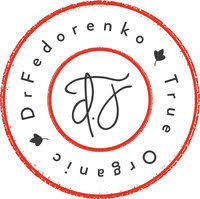 Organic tick and mosquito repellents that are clinically proven to prevent the transmission of Lyme disease and repels ticks and mosquitoes. It is a certified organic product made with essential oils and herbs. “Dr.Fedorenko True Organic Bug Stick is designed to protect and nourish skin to keep it looking and feeling healthy while keeping mosquitoes, ticks, gnats, horseflies, black and biting flies away. Works quickly to protect you and the whole family. Luxurious botanical butters infused with pure essential oils help to hydrate your skin. Powerful blend of pure essential oils keep biting insects away for hours. ”
Organic tick and mosquito repellents that are clinically proven to prevent the transmission of Lyme disease and repels ticks and mosquitoes. It is a certified organic product made with essential oils and herbs. “Dr.Fedorenko True Organic Bug Stick is designed to protect and nourish skin to keep it looking and feeling healthy while keeping mosquitoes, ticks, gnats, horseflies, black and biting flies away. Works quickly to protect you and the whole family. Luxurious botanical butters infused with pure essential oils help to hydrate your skin. Powerful blend of pure essential oils keep biting insects away for hours. ”
Agent Nateur
Just one product—luxury organic deodorant—made from organic coconut oil, avocado, raw organic honey, and essential oils. “After purchasing and testing nearly every available natural deodorant free of aluminum, I found that none were effective…. I decided to make my own…I want to change the way the world views luxury cosmetics. If you choose to live a healthy, natural lifestyle, the application and absorption of healthy cosmetics are as critical as the ingestion of healthy food. Your skin is the largest organ of your body and since it is porous, it absorbs whatever you put on it. Your cosmetics should be equally gorgeous and healthy.”
Billy’s Infinity Greens
 Superfood blend whole food supplements that are 100% organic, raw, wild-crafted, vegan-friendly and free from dairy, wheat, wheat grass, gluten, soy, peanuts and gmos. More than greens, they also have vitamin C, plant protein, meal bars, and more. “We only work with suppliers that utilize ecological, sustainable and fair trade practices. This commitment to superior ingredients and equitable business dealings is critical to the quality and effectiveness of our unique formula. You can rely on the fact that every superfood ingredient we use is produced by the very best, and is 100% organic, wild crafted, raw, and vegan.”
Superfood blend whole food supplements that are 100% organic, raw, wild-crafted, vegan-friendly and free from dairy, wheat, wheat grass, gluten, soy, peanuts and gmos. More than greens, they also have vitamin C, plant protein, meal bars, and more. “We only work with suppliers that utilize ecological, sustainable and fair trade practices. This commitment to superior ingredients and equitable business dealings is critical to the quality and effectiveness of our unique formula. You can rely on the fact that every superfood ingredient we use is produced by the very best, and is 100% organic, wild crafted, raw, and vegan.”
Lucy & Leo
Delightful organic clothing for babies and children, made in New York. “Our mission is simple: to provide your child with the finest, highest quality clothing on the market. Our garments move and breathe, are durable and very comfortable. {Our] clothing is known for its soft color palate and classic design with a modern twist. As our brand grows, we stay true to our vision of creating unique, adorable and comfortable outfits for your child in an eco-friendly fashion. We are proud to be one of the first organic and USA-made clothing brands in the children’s industry.”
New Report on Fragrance Ingredient Safety and Regulation
A few weeks ago, I published a question from a reader wanting to know about Toxins of Dawn Dish Detergent.
I answered her question by giving her a link to the ingredients of Dawn provided by Proctor & Gamble, which included a list of fragrance ingredients from the International Fragrance Association.
She commented
When clicking on the perfume link, hundreds of possible ingredients are listed, with this as part of the intro :
“Our perfumes are formulated with the greatest care and utmost attention to safety. Whenever a perfume is developed or enhanced, our safety scientists evaluate the detailed composition of the perfume to ensure that the product is safe to use. Perfumes are formulated taking into account our stringent internal safety standards for every ingredient, as well as the safety standards set by the International Fragrance Association (IFRA). We adhere to the IFRA Code of Practice and the IFRA Standards. For more information about IFRA go to www.ifraorg.org.”
Can this be true? I thought all perfumes (not including organic essential oils) contain toxic chemicals.
Well, it turns out that Women’s Voices For the Earth has been asking this question for almost ten years, and just recently release a report on the subject.
Here are some links to help you find everything.
Especially see the last link, which shows which chemicals on the IFRA list are known to be toxic by other organizations.
Kudos to Women’s Voices for the Earth for doing this work.
EcoWatch: Are Toxic Fragrances Making You Sick?
Women’s Voices For the Earth Report Overview
THE REPORT: Unpacking the Fragrance Industry: Policy Failures, the Trade Secret Myth and Public Health
More information on fragrance ingredients from Women’s Voices for the Earth
Fragrance Chemicals of Concern Present on the IFRA List 2015
Take a look at this if you want to see what chemicals in fragrances are considered toxic by organizations outside of the fragrance industry.
Mothproofing in Wool Carpet from New Zealand?
Question from Michael
Hi Debra,
Do you know anything about the insecticide they have to put in wool carpet in NZ? Is it toxic? Any health concerns? Here it is:
is potentially carcinogenic: Bifenthrin. Bifenthrin is a Pyrethroid compound.
Debra’s Answer
Hmmm. Some conflicting information on this.
First, here are a few links with health effects of this pesticide.
www.toxipedia.org/display/toxipedia/Bifenthrin
npic.orst.edu/factsheets/bifgen.html
pmep.cce.cornell.edu/profiles/extoxnet/24d-captan/bifenthrin-ext.html
I found a comment on a post that said, “wool carpets are treated with a pesticide called bifenthrin which is added into the dye process.” If this is the case, then an undyed carpet would not have it. Also this source didn’t specify New Zealand.
But here is an industry document that describes the use of mothproofing, which says “it must be applied at dying, or later.”
Now Karastan says:
New Zealand wool is the purest, whitest wool in the world, offering excellent dyeing characteristics that create long-lasting colors.
New Zealand wool is raised with little impact on the natural landscape. It is a renewable and biodegradable fiber that is one of the world’s most environmentally friendly products.
New Zealand wool is produced on land mostly unsuitable for other agricultural purposes and does not compete with food production.
No internationally banned pesticides are used on New Zealand farms, making New Zealand’s sheep industry one of the world’s greenest animal production systems.
The Wools of New Zealand brand is your guarantee of the highest quality New Zealand wool. It is the indication that New Zealand wool is a superb natural product derived in an environmentally responsible way through sustainable land use.
I went to the Wools of New Zealand website and couldn’t find any statement about insecticides. So I can’t tell if New Zealand wool is mothproofed with a chemical pesticide or not.
Well, after all that, here is the document you want to read:
admin.woolsnz.com/uploadGallery/documents/insectresist%20.pdf
It’s the technical document for making Wools of New Zealand insect resistant. It does mention Bifenthrin and states it’s not approved for the USA.
Personally I wouldn’t get a carpet with this pesticide applied.
Safe Dishwasher Detergent?
Question from nclynn
Hi Debra,
Your books were my main teachers when i really committed to going green in the 90s. so wonderful!
i am on a thread right now where someone recommended a dishwasher detergent of borax, baking soda (1/2 cup each), 1/8 cup citric acid and 25 drops of ‘essential oil’.
Someone chimed in and said they used this and it ate up their enamelware. the rest of the thread is opinions about what was the culprit and they have ALL been named!!! lol.
The latest was a mom who has a chemist son. son said “borax will ruin your glassware (depending on the make-up) when added to hot water and can make it taste like play-doh – forever! “
I told them i had heard in the 90s (from you?) to use plain borax in the dishwasher. i used it once at a friend’s and it was fine but i’ve never had my own dishwasher.
Do you have any thoughts on that original recipe…good, bad, indifferent?
Thanks for all you do!
Debra’s Answer
I looked up my original recipe for dishwasher detergent and found mix baking soda and borax half-and-half and then put 4 tablespoons in your dishwasher. But I got that from a book somewhere and never actually used it.
I haven’t had a dishwasher since 1985.
So, readers, what are your thoughts or experience with this formula, and what do YOU use in your dishwasher?

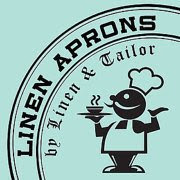 Linen aprons in various colors and styles.
Linen aprons in various colors and styles.
